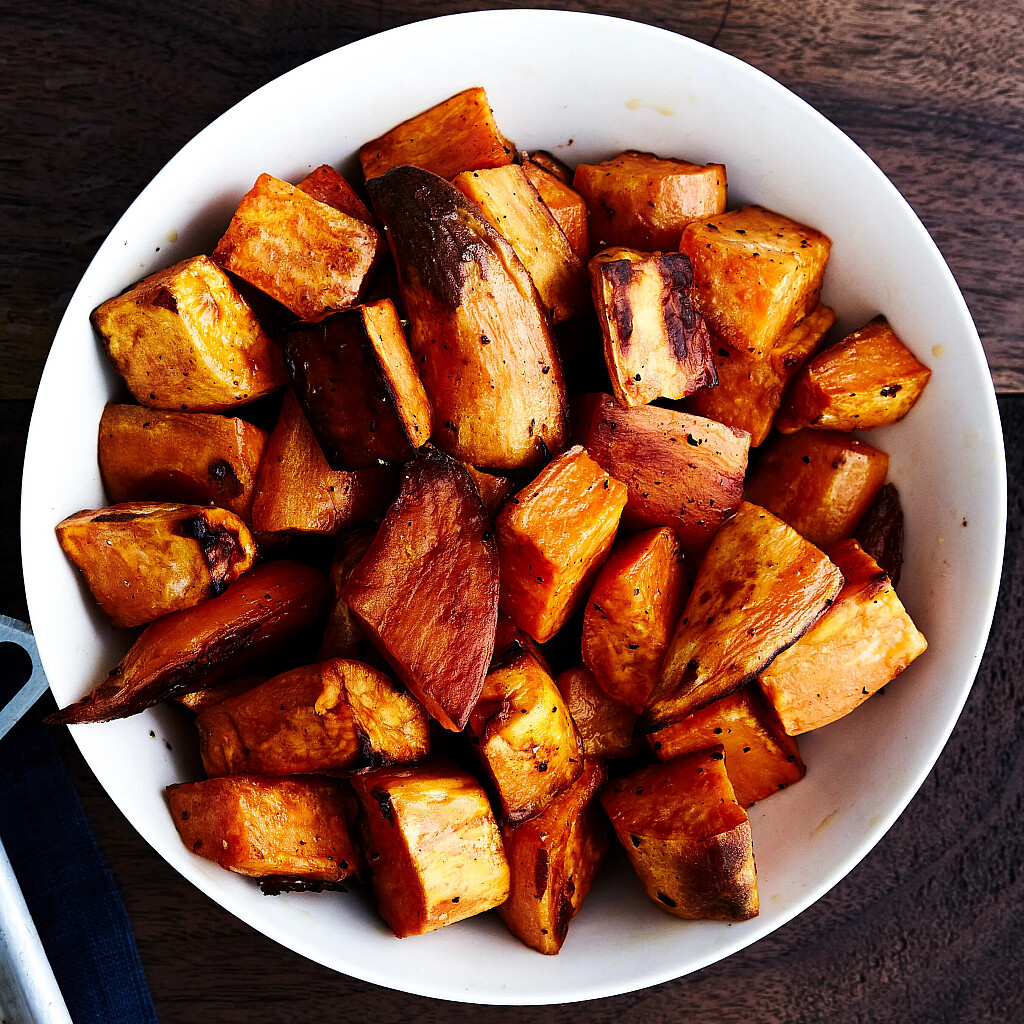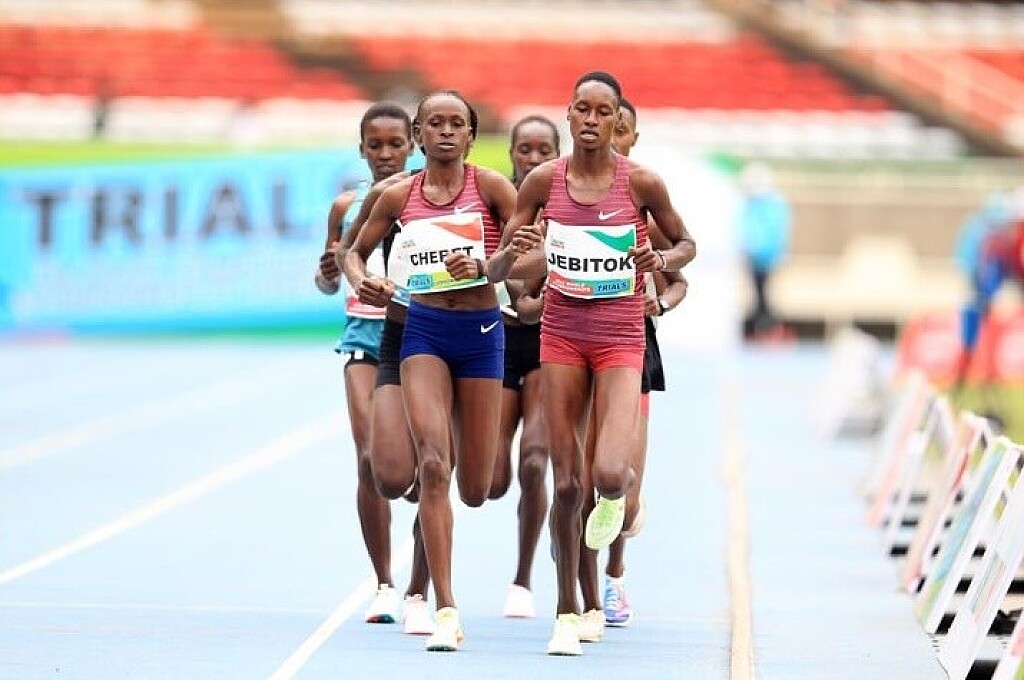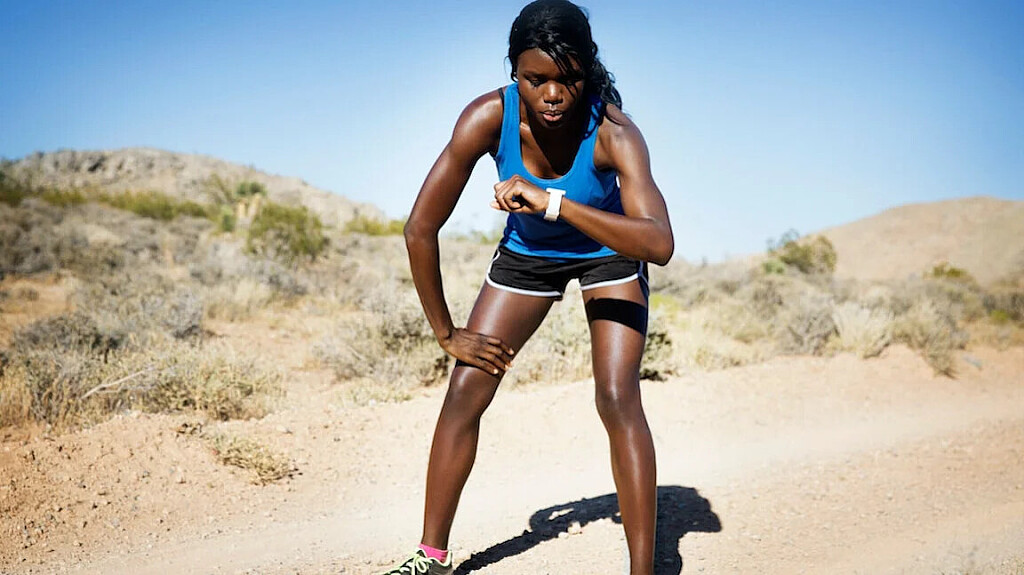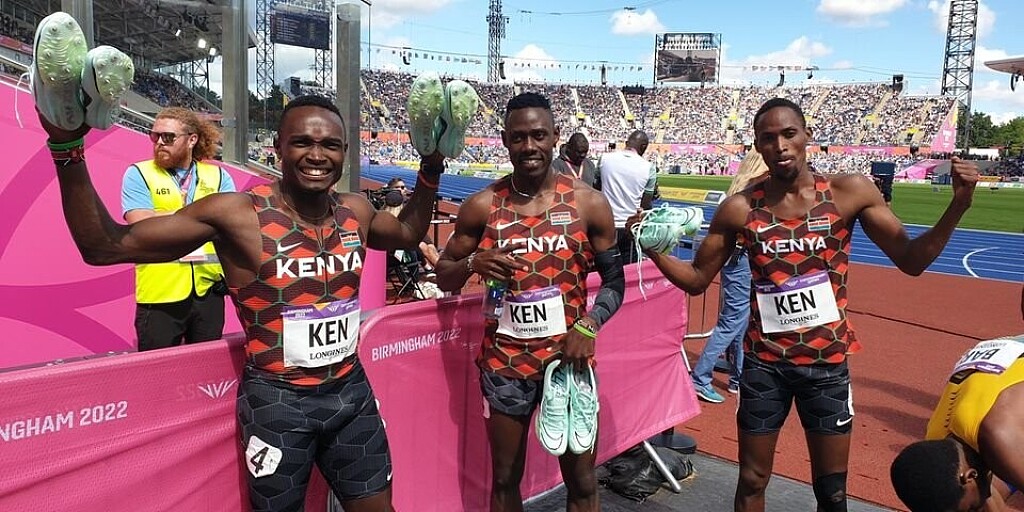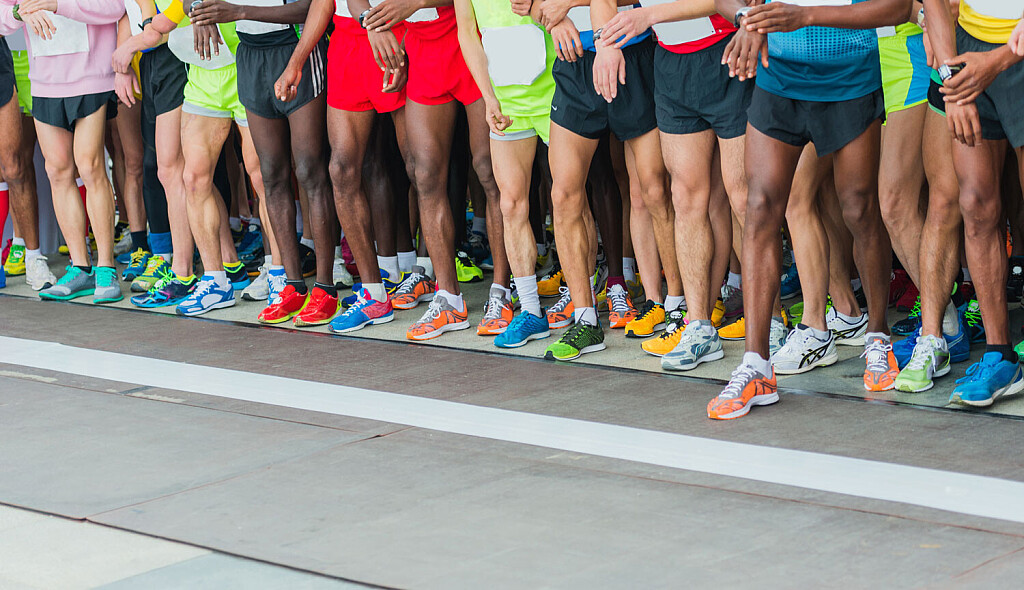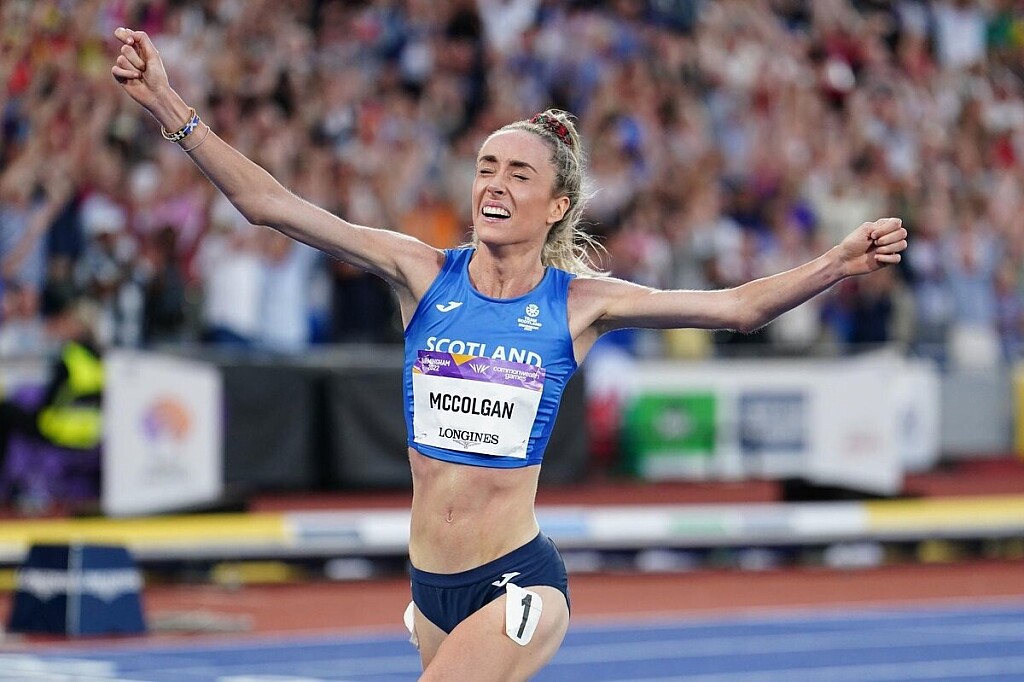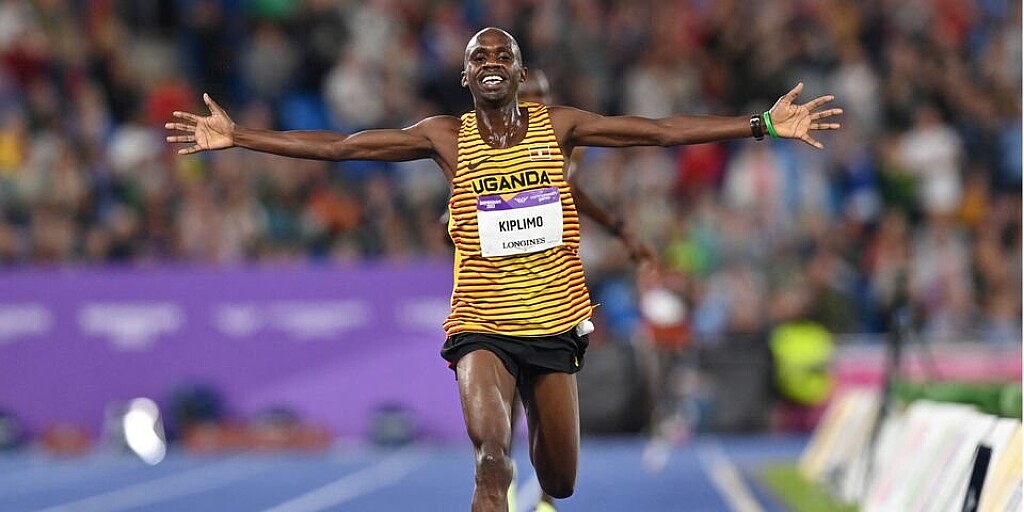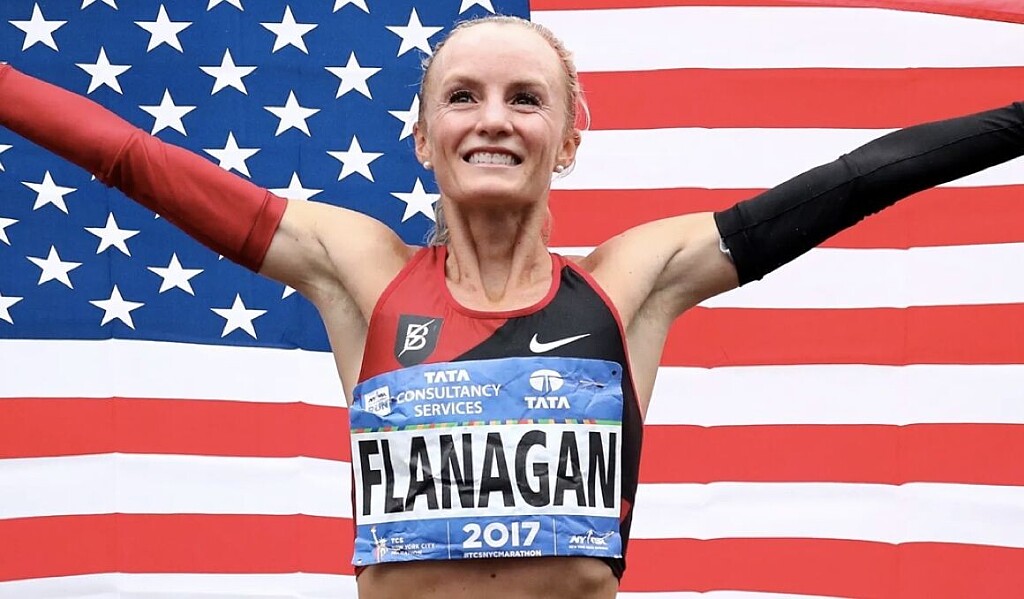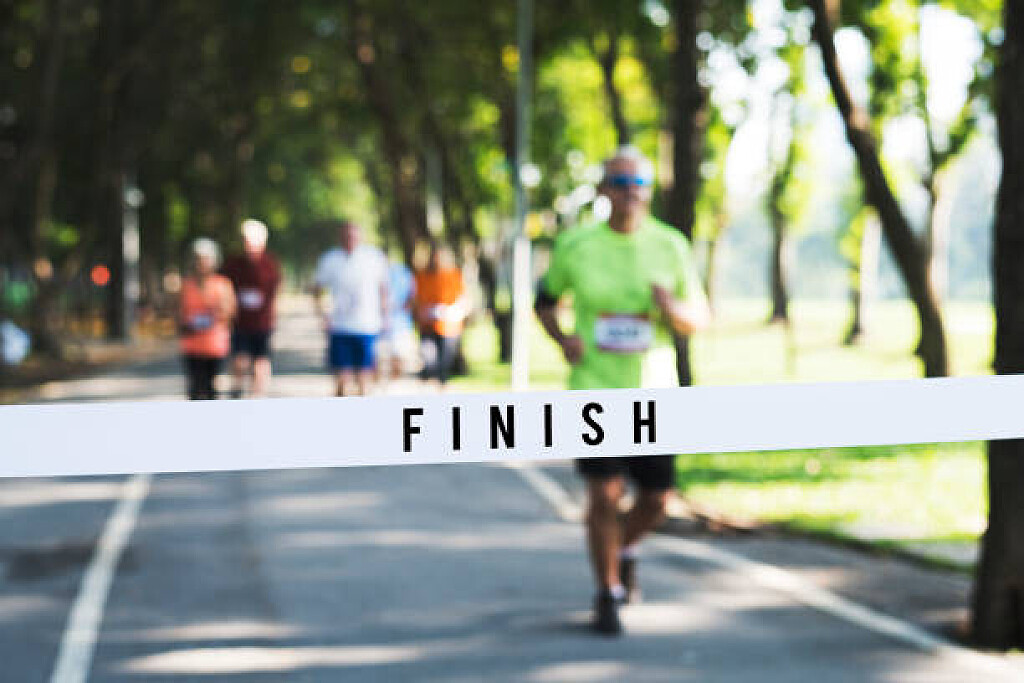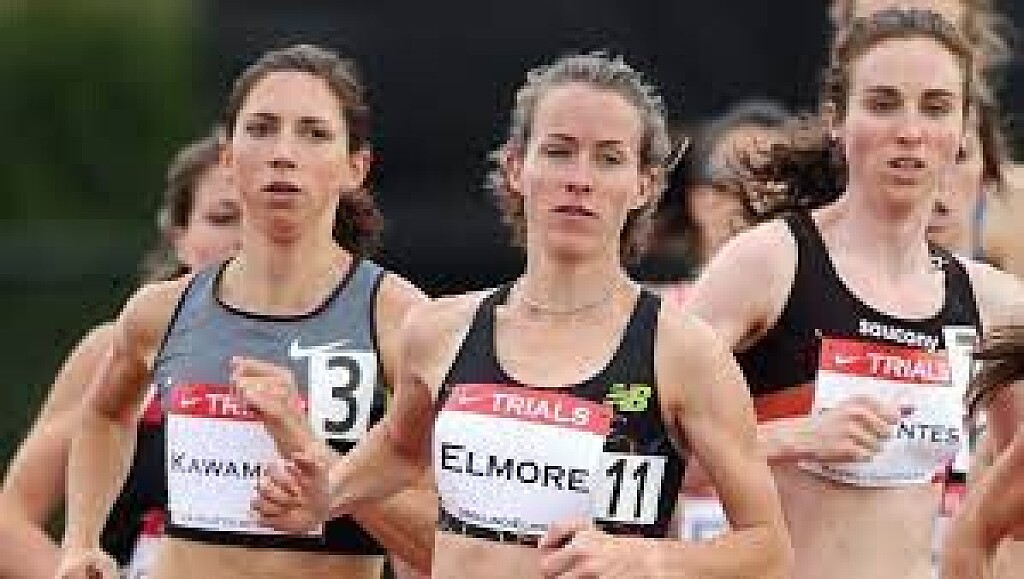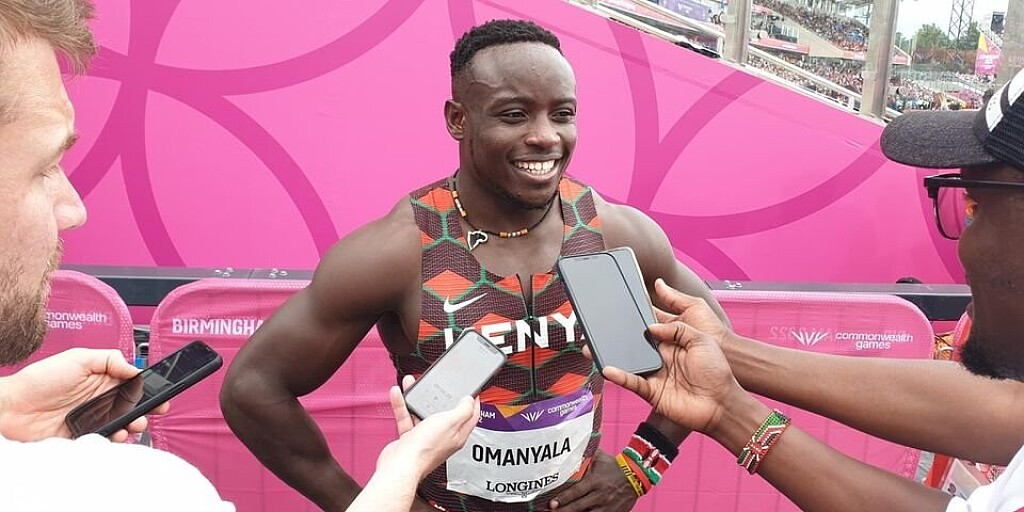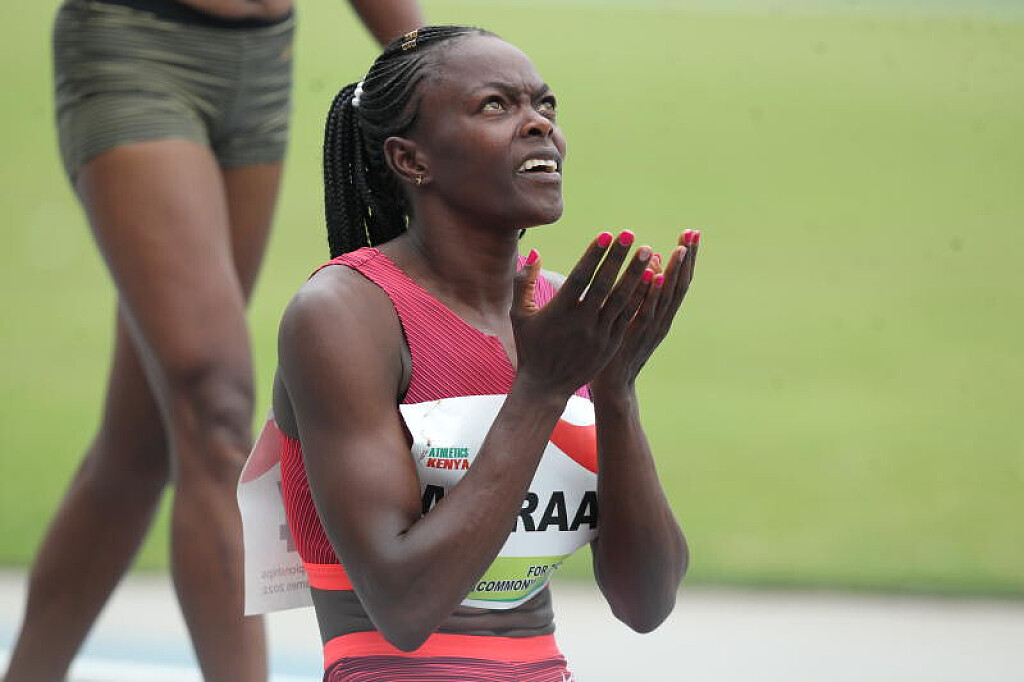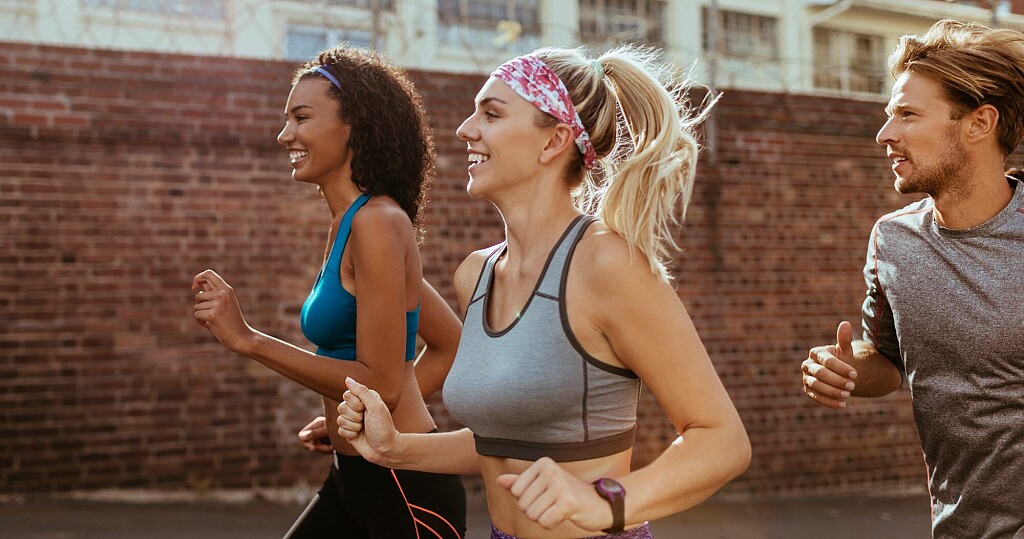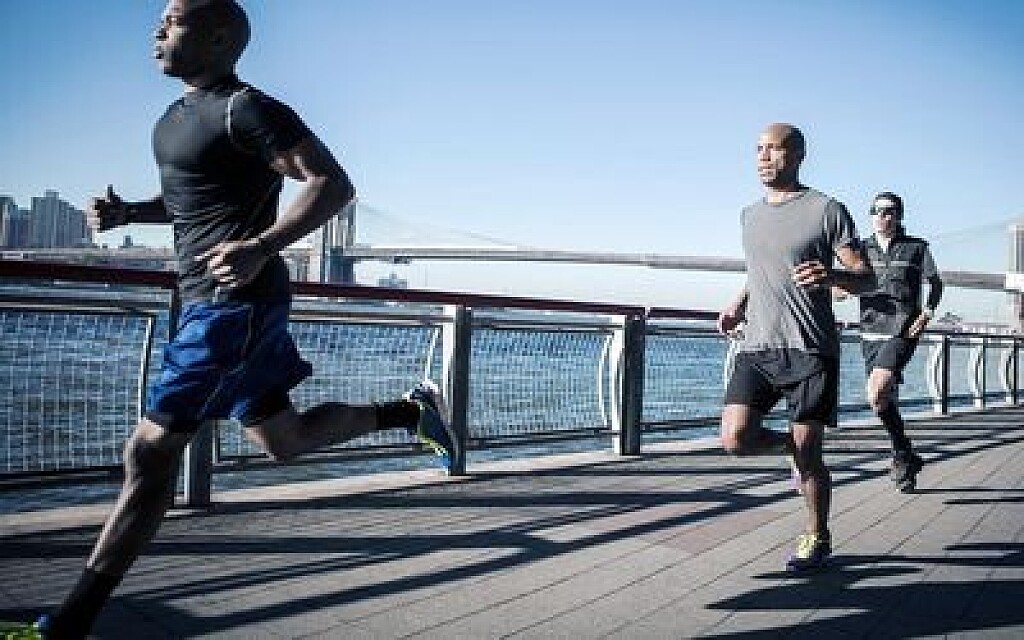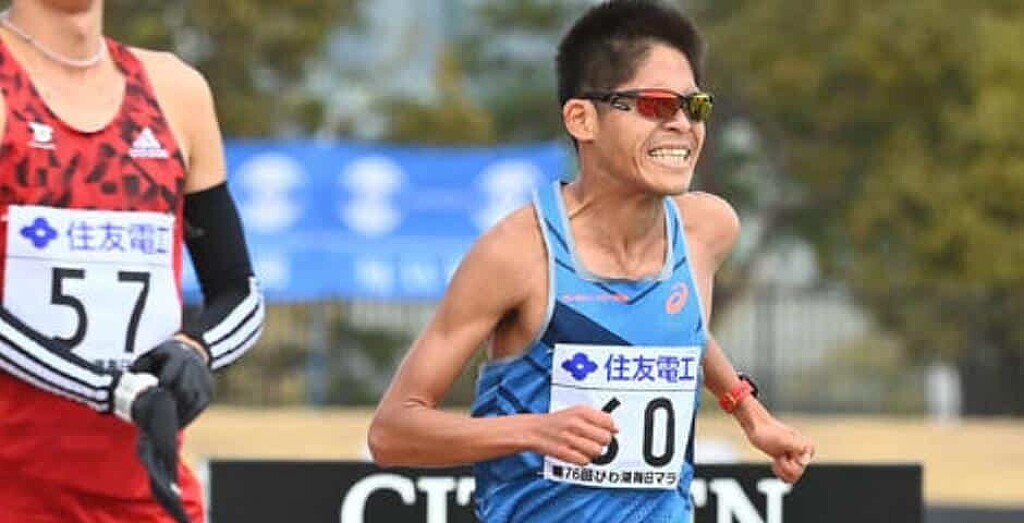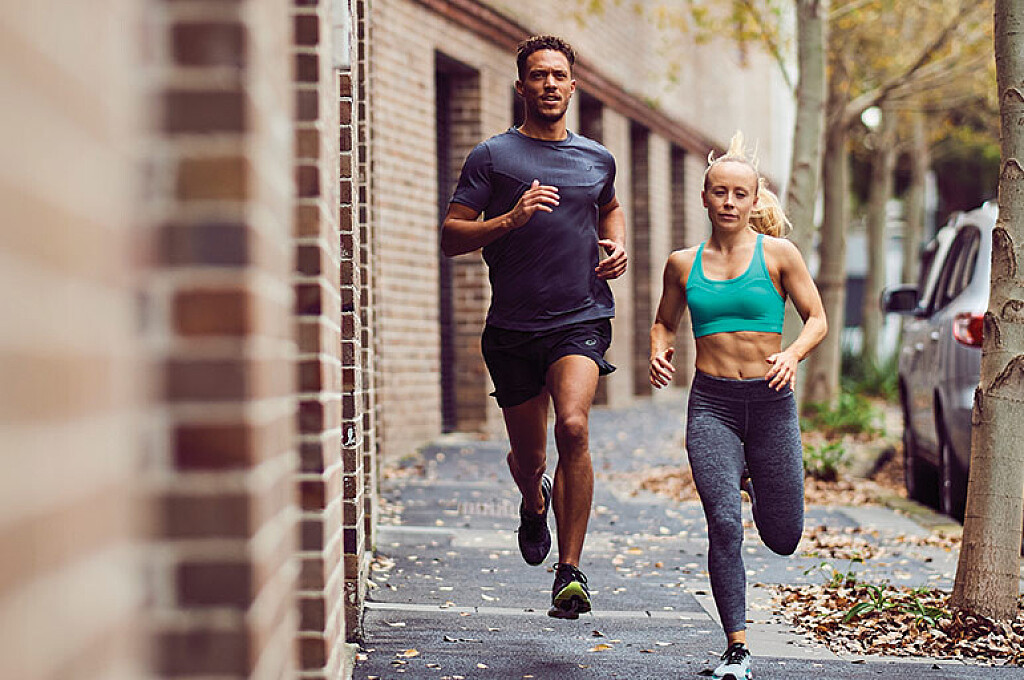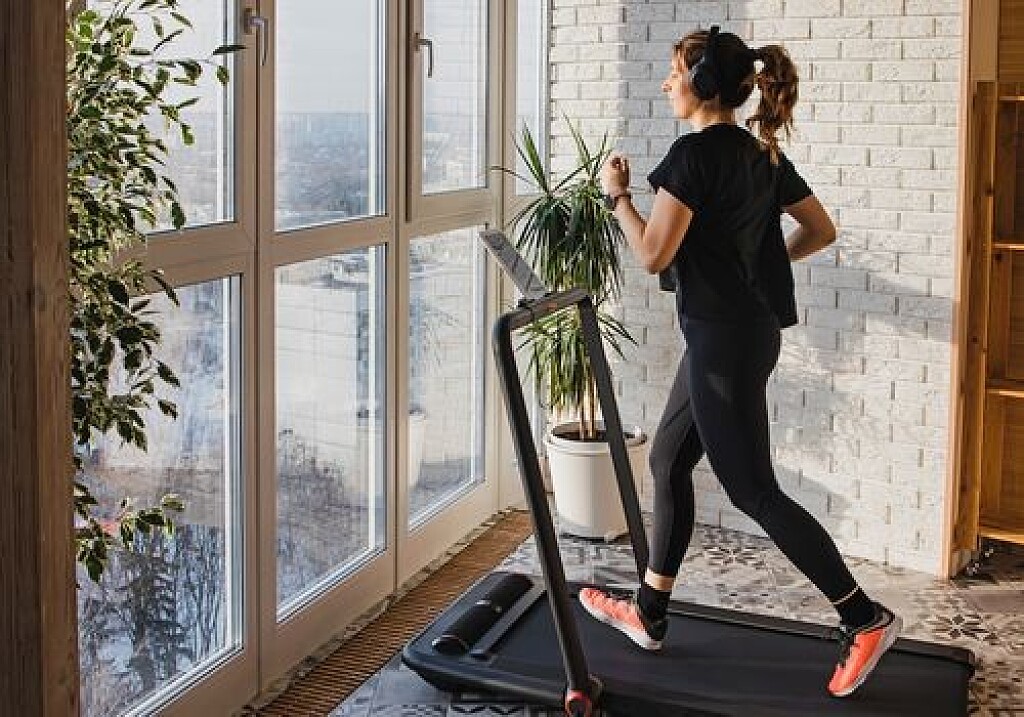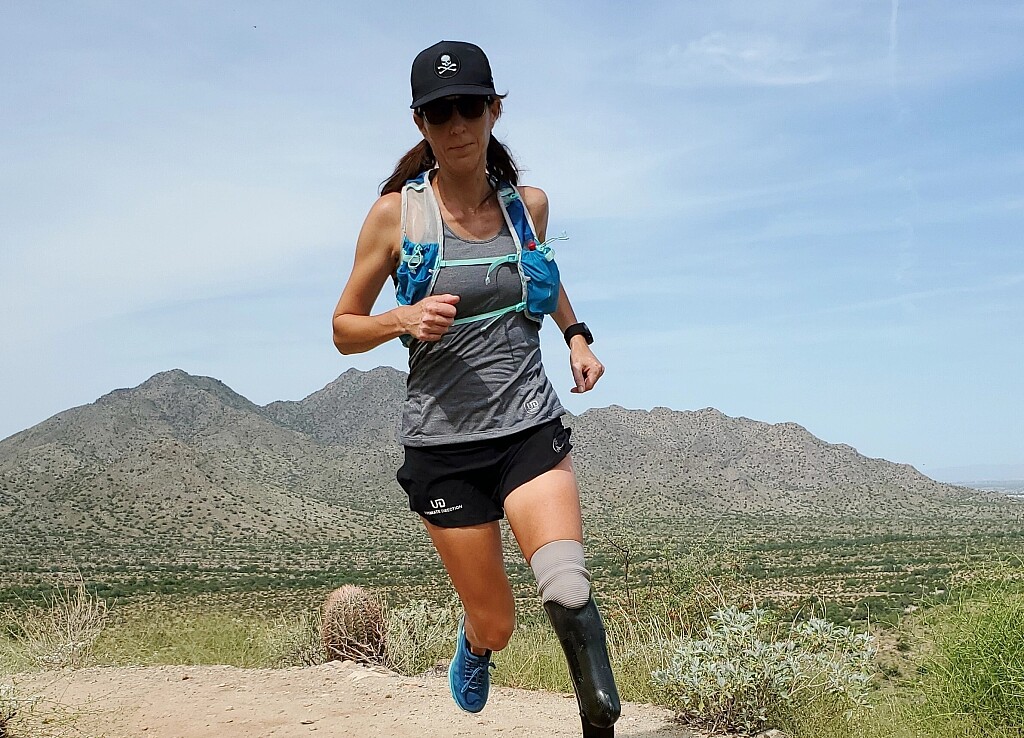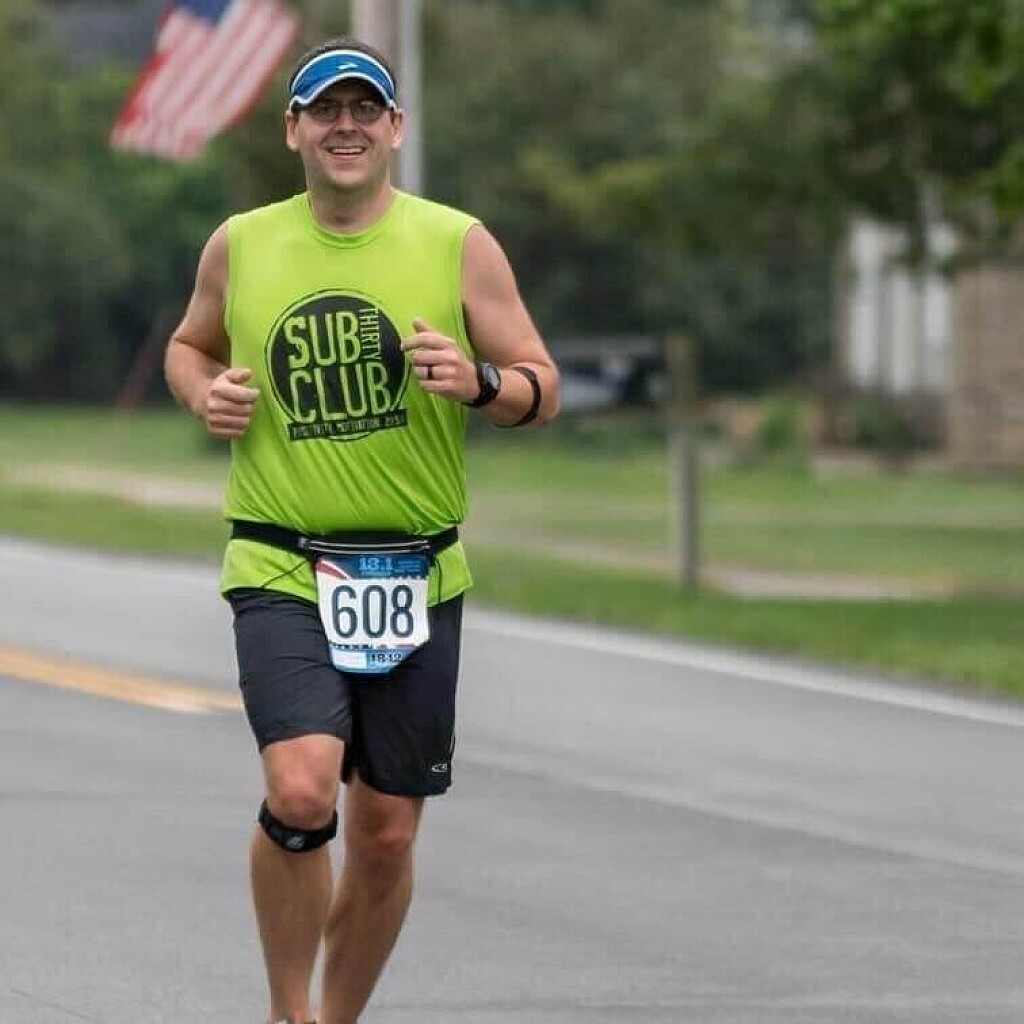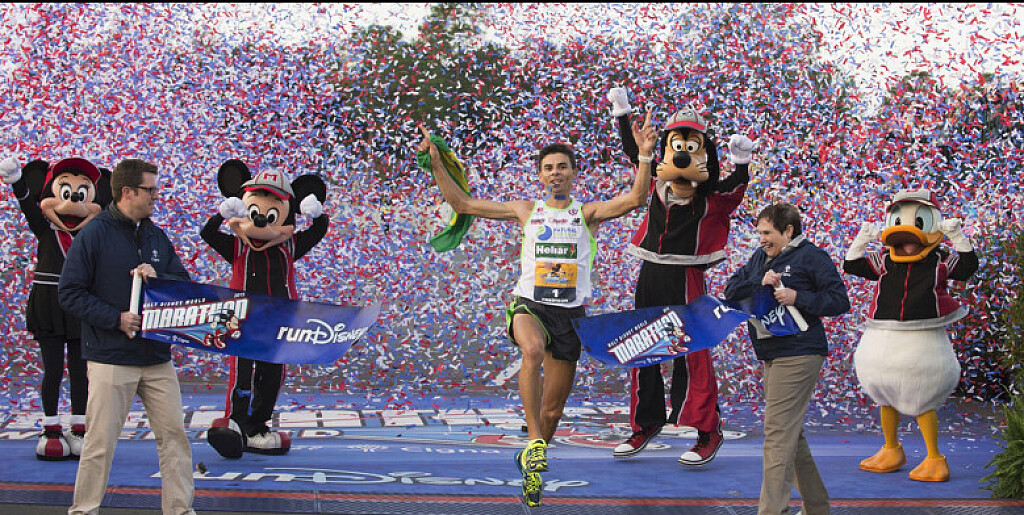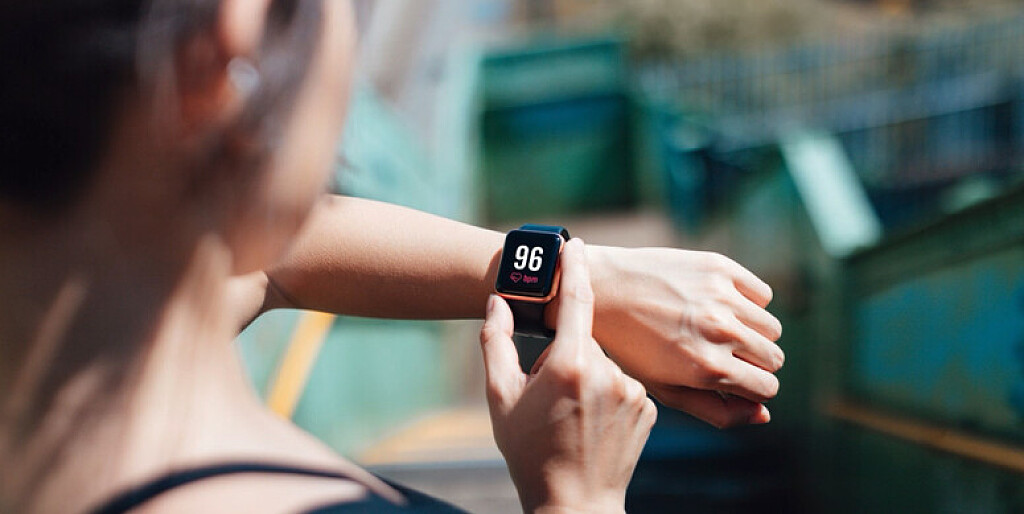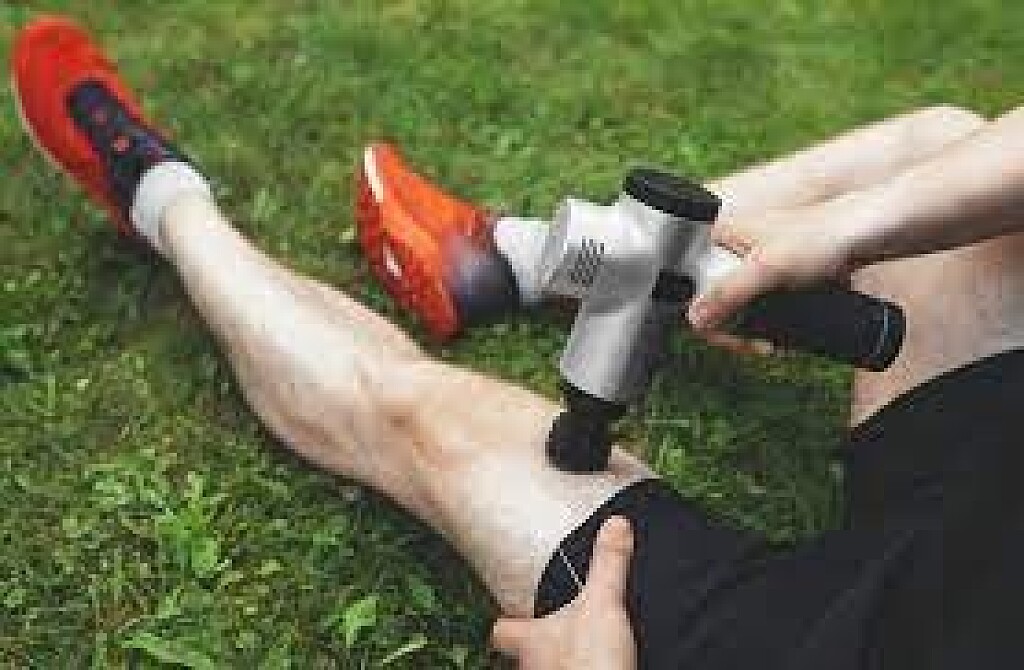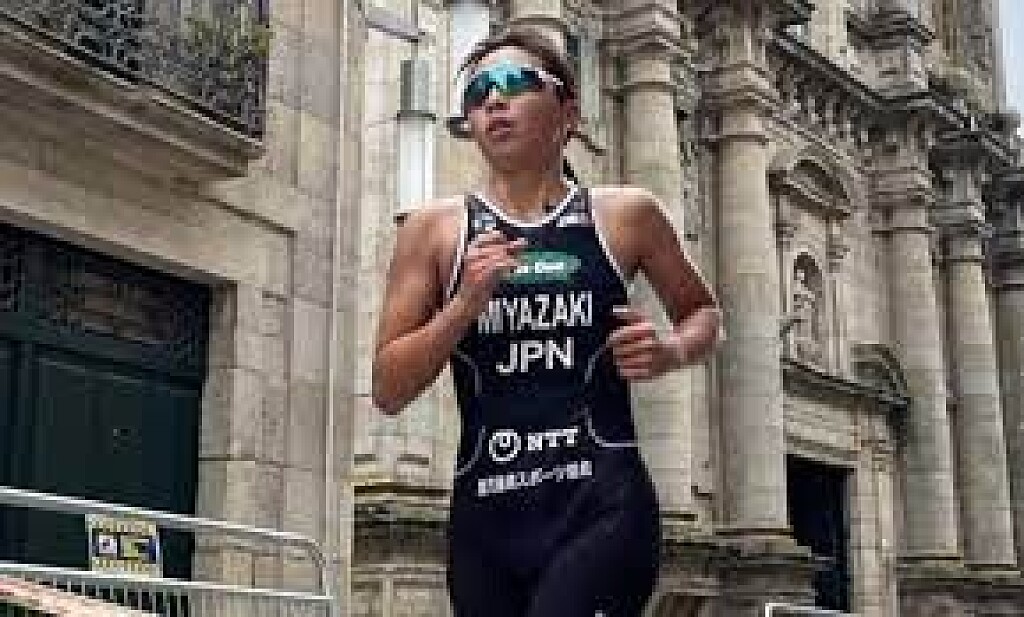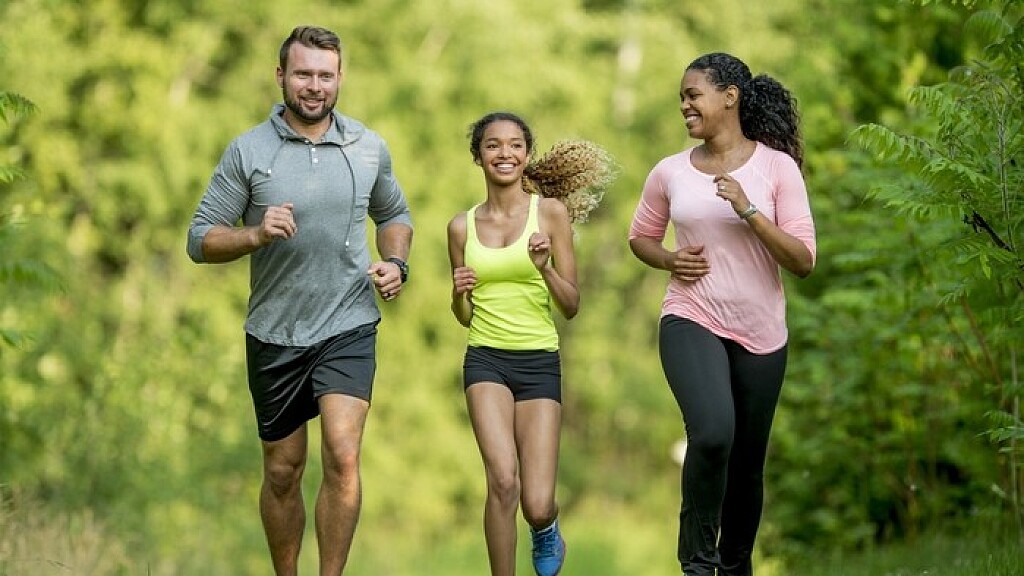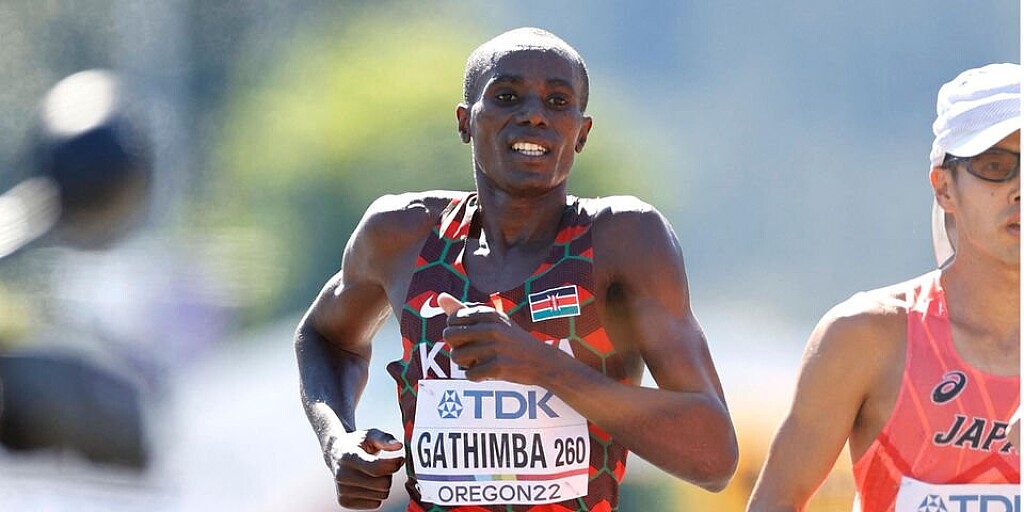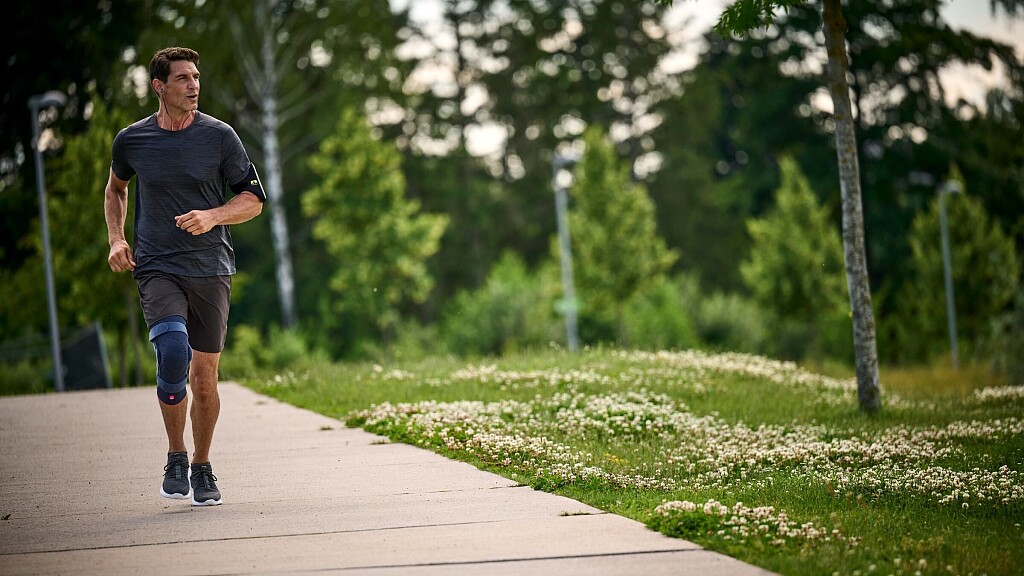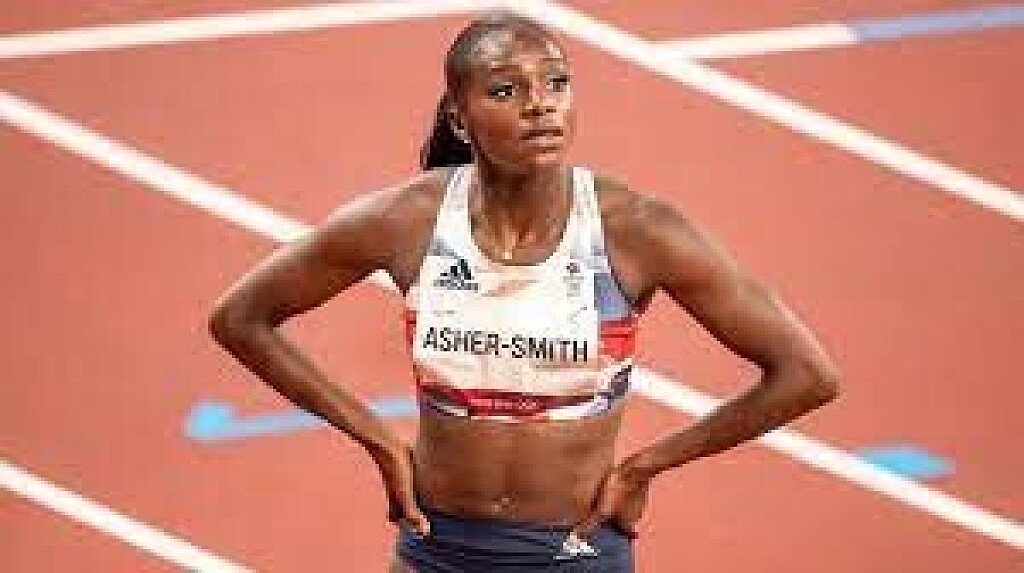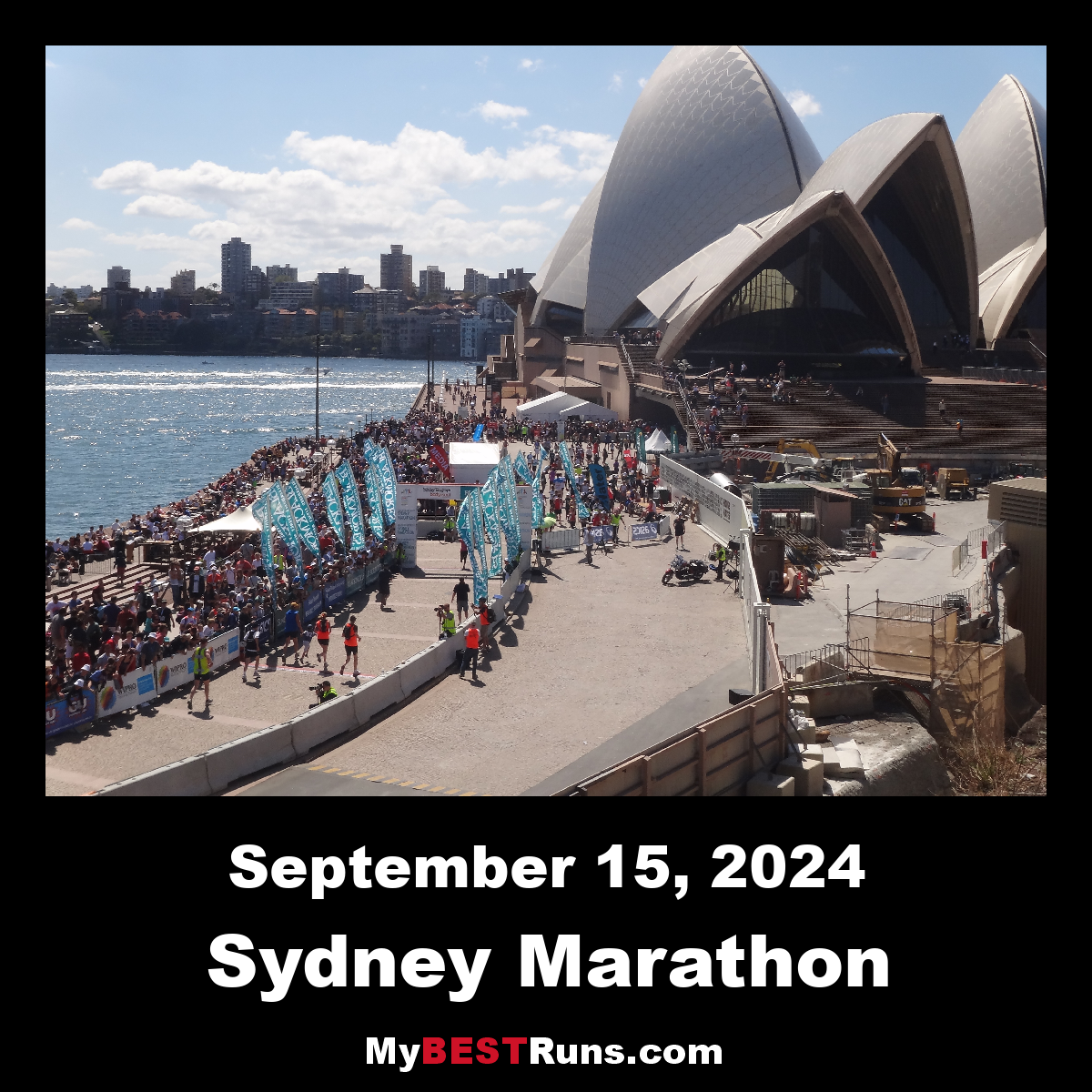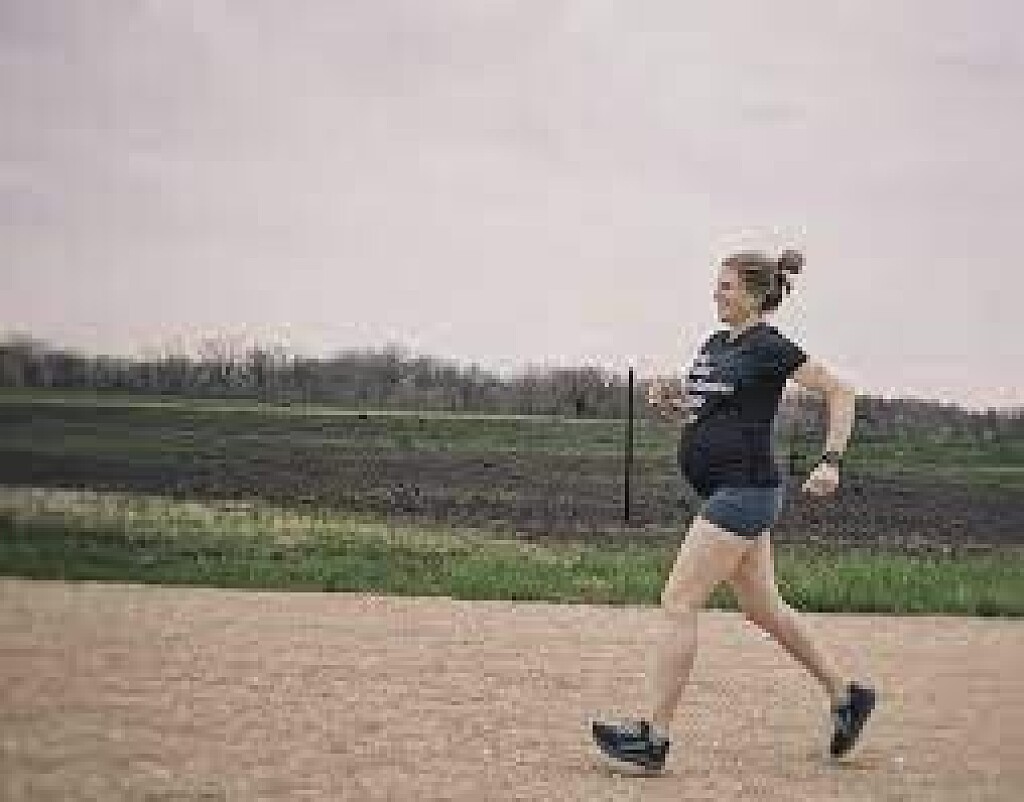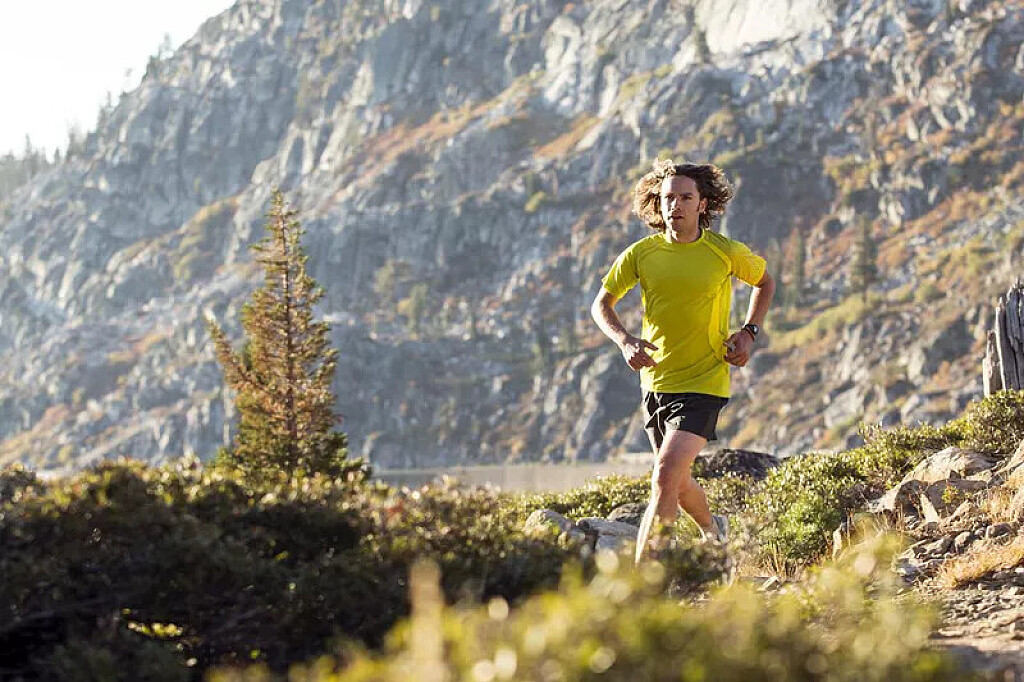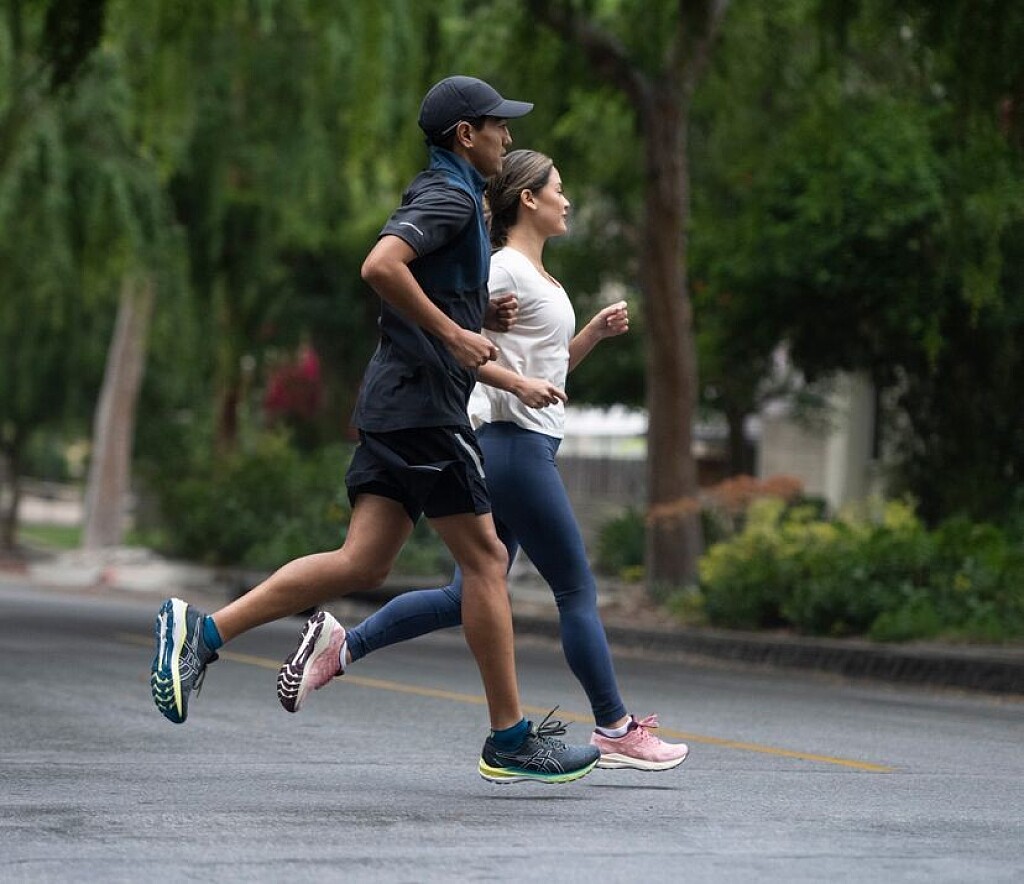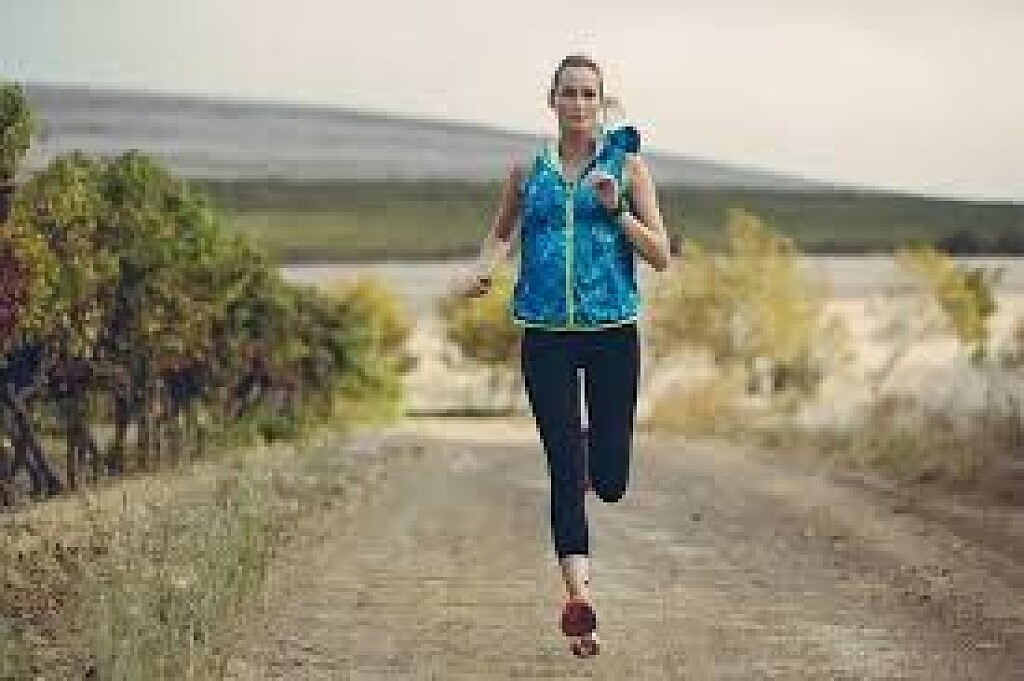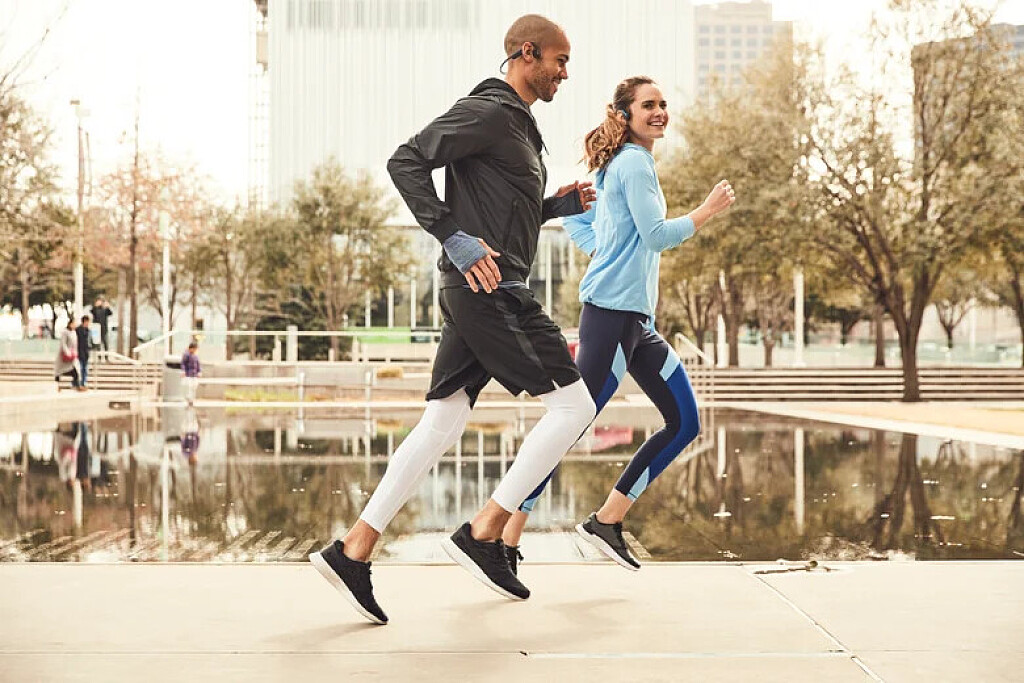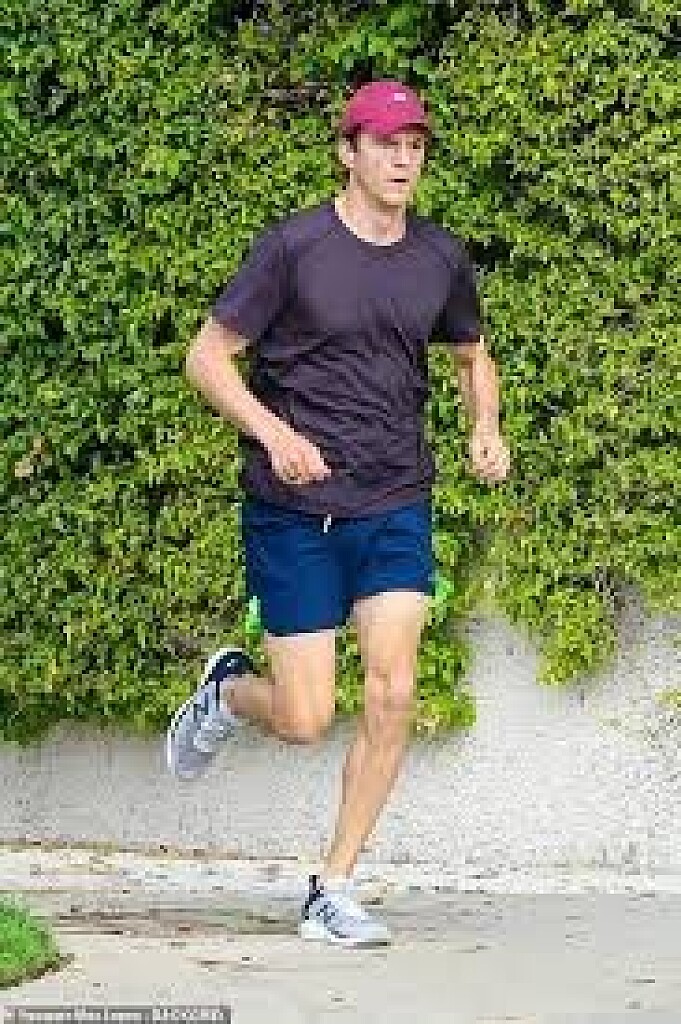Running News Daily
Running News Daily is edited by Bob Anderson. Send your news items to bob@mybestruns.com Advertising opportunities available. Train the Kenyan Way at KATA Kenya and Portugal owned and operated by Bob Anderson.
Index to Daily Posts · Sign Up For Updates · Run The World Feed
The Health Benefits of Sweet Potatoes and Why Runners Should Eat Them All Year
You don’t need to save this veggie for the fall.
You might relate sweet potatoes to the fall or holiday season. But there’s good reason to add them to your plate all year. In fact, considering the plethora of health benefits you get from sweet potatoes, they’re certainly worthy of adding to your list of foods to fuel your runs.

What are the nutrition facts for sweet potatoes?
Just like regular potatoes, sweet potatoes come in a variety of colors and tastes, from orange to purple to cream and ranging in level of sweetness. This means, also just like regular potatoes, the nutritional value of any given sweet potato will vary slightly depending on the type. But ultimately, no matter which kind you buy, sweet potatoes pack the nutrients runners need.
For example, a study published in the journal Food Measure in 2017 examined 14 varieties of Virginia-grown sweet potatoes. Researchers determined the sweet potatoes with lighter colored flesh had the highest starch content, while those with purple flesh had the highest amount of flavonoid and phenolic compounds, which are known for helping to reduce inflammation. Orange flesh sweet potatoes contain the most sugar, according to the research.
All these different types of sweet potatoes are similarly rich in vitamins and minerals such as vitamin A, vitamin B6, vitamin C, potassium, and also fiber, says Robin Foroutan, R.D.N., integrative and functional dietitian in private practice in Garden City, New York. “For example, orange sweet potatoes are richest in beta carotene. But the purple ones are the highest in an antioxidant called anthocyanins. The pigment is a reflection on the amount of the antioxidants. But they’re all healthy for us,” she explains.
Just how healthy? According to the USDA, a medium sweet potato contains:
115 calories
2 g protein
<1 g fat
27 g carbs
4 g fiber
9 g sugar
347 mg potassium
41 g sodium
41 g calcium
27 mg of magnesium
19 mg of vitamin C
That’s a whole lot of nutrition for one sweet potato.
What are the health benefits of sweet potatoes?
There are multiple ways you can benefit from adding sweet potatoes to your plate.
As we mentioned, sweet potatoes pack nearly 4 grams of fiber, which supports good gut health. You can encourage the formation of resistant starch (a gut-friendly fiber) in a sweet potato by cooking it and then letting it cool for an hour, says Foroutan. This starch is a very important prebiotic, which feed probiotics—both are super important for the gut, she explains.
Also, sweet potatoes contain a variety of antioxidants, which are known for helping the body fight free radicals and keep you healthy. For example, orange flesh sweet potatoes are rich in beta carotene, the antioxidant that causes its orange hue and helps runners fight inflammation, says Kelly Pritchett, Ph.D., R.D., C.S.S.D., professor of nutrition and exercise science at Central Washington University. This makes sweet potatoes a great recovery food because cooking them enhances the availability of beta carotene which can help runners combat the oxidative stress they build up on the run, Pritchett says.
A review published in the journal Nutrition Research supports the idea that beta carotene can reduce oxidative stress. Meanwhile, a review published in the Archives of Biochemistry and Biophysics in 2018 also highlighted beta carotene as an antioxidant that can help improve cognitive function, skin health, and immunity.
Sweet potatoes also contain 27 grams of carbohydrates, and those carbs are considered complex, says Pritchett, so they can provide runners with steady energy. This is because, Foroutan explains, complex carbs can be broken down in the body more slowly than refined carbs. Meaning complex carbs take longer time to digest and have slower impact on blood sugar.
However, the most powerful way to maintain steady blood sugar is to combine any carbohydrates with protein and fiber, so Foroutan suggests avoid eating this veggie alone unless you’re having it soon before a run and want those carbs more quickly available for fuel.
How can you incorporate more sweet potatoes into your diet?
The best way to eat a sweet potato, Foroutan says, is baked with either chicken, turkey, lean grass-fed beef, lentils, eggs, and/or other veggies. To mix things up and get creative, consider cubing up a few different colored sweet potatoes and roasting them together for a side dish, or making a sweet potato hash and adding them to your breakfast plate with eggs and spinach, she says.
The combo of carbs and potassium make sweet potatoes a great prerun snack. To have one before you hit the road, bake them, then sprinkle with a bit of salt. Just be mindful of their fiber content. “Runners will want to experiment in training to see how their gut responds to eating them prerun,” says Pritchett.
If you’d rather save sweet potatoes for after your workout, Pritchett suggests mixing them into a recovery smoothie, or topping them with beans, cheese, and salsa for dinner.
One thing to avoid: frying sweet potatoes, as the mixture of high temperatures, oils, and starch creates the formation of a compound called acrylamide, which is known to be a potential carcinogen, Foroutan says. Also avoid adding too much marshmallow topping, which is the fastest way to turn this sweet veggie into a sugar bomb, she says.
(08/06/2022) ⚡AMPby Runner’s World
Chebet, Jebitok sail through to Commonwealth Games 1500m final
The 2018 Continental Cup 1,500 meters champion Winny Chebet and Edinah Jebitok are through to women's 1,500m final in athletics at the ongoing Commonwealth Games at the Alexander Stadium.
Both athletes finished third in their respective heats to ease through to the final due for Sunday.

Jebitok clocked four minutes and 13.84 seconds as Ciara Mageean won the heat one in 4:13.52.

Australia Abbey Caldwell came third in 4:13.59 to also qualify.
Chebet timed 4:16.11 to finish third behind Winnie Nanyondo from Uganda and Briton Katie Snowden in 4:16.04 and 4:16.09 respectively.
(08/05/2022) ⚡AMPby Ayumba Ayodi
The Commonwealth Games
The Commonwealth Games are coming to Victoria - bringing an action packed sports program to our regional cities and delivering a long-term legacy for our future. From 17 to 29 March 2026, Geelong, Bendigo, Ballarat, Gippsland and Shepparton will be on the world stage, attracting millions of viewers and creating thousands of jobs. The multi-city model will...
more...How much rest should you take between intervals?, The time of your rest between reps is just as important as the interval itself
Runners rely on interval training as one of the most effective ways to build speed and endurance. The thing about high-intensity interval training is that you can only do it for so long before you hit a wall or have to stop due to the build-up of lactic acid or fatigue in your muscles. When working out at high intensity, the active interval has to go hand and hand with the rest interval to help you get the most out of your performance.
How long should your rest be between intervals?
There are a few ways you can structure your interval workouts: You can keep the interval short with very high intensity and the rest periods long or keep the rest and interval phases roughly equal or do longer intervals with shorter rest to improve your aerobic capacity. What is the best way to structure your training? Or does it not matter?

A study published in the Journal of Strength and Conditioning looked at this issue. The researchers asked six people to run on a treadmill as fast as they could for four minutes with various rest periods between. The study found that the rest depends on your training goals and what you’re looking to improve.
Reducing the rest interval from two minutes to one minute made it difficult for the six runners to maintain the same intensity during the high-intensity intervals. Another interesting observation was that the rest interval of four minutes did not improve performance any more than the previous two-minute recovery period.

Regardless of this study, there is no single right or wrong way to structure interval training, but it does depend on what you are trying to achieve. If your goal is to improve your aerobic capacity, longer active intervals of two to five minutes and roughly equal recovery periods seem to work best.
But if you want to improve your top-end speed or anaerobic levels – 30 seconds to two minutes of rest is prescribed for those who want to run at a higher intensity for longer or faster.
(08/05/2022) ⚡AMPby Marley Dickinson
Boniface Mweresa anchors Kenya to 4x400m Commonwealth Games final
The 2015 African Games 400m silver medalist Boniface Mweresa anchored Kenya’s 4x400m to victory in their heat to storm the final in athletics at the ongoing Commonwealth Games at the Alexander Stadium.
Team Kenya head coach Julius Kirwa was forced to make changes at the last minute when Olympic and world 800m champion Emmanuel Korir, who was to compete, went missing.
Mweresa rallied from three places behind, taking down India Trinidad and Tobago to win heat two in season’s best three minutes and 06.76 seconds.

India settled second in 3:06.97 as Trinidad and Tobago came third in 3:07.22.
Defending champions Botswana won heat one in 3:05.11, beating Jamaica and Zambia to second and third places in 3:05.20 and 3:06.02 respectively.

It’s Wiseman Were who was the first man on the blocks to hand over the baton to William Rayan in third place before he stepped up, handing over the baton to William Mbevi in second place.
Mbevi fell back one place in the last changeover to Mweresa, who injected in some pace to swing to the lead at the last bend before winning.
The quartet of David Kitur, Samson Kitur, Simeon Kipkemboi and Stephen Mwanzia is the last to win the 4x400m title for Kenya during the 1990 Auckland Games in New Zealand.
Kenya had won three 4x400m titles back-to-back starting with the inaugural Edinburgh Games in Scotland before the 1974 Christchurch, New Zealand and 1978 Edmonton, Canada Games.
After the 1990 exploits, Kenya has only claimed one medal from the Games since then, the silver medal from the 2010 Delhi Games, India.
“We took it easy just to put our foot in the final before planning how we shall pitch for a medal. We hope that medal will be gold,” said Rayan. “We are really prepared and ready for the final.”
Rayan said staying focused and having a settled mind will deliver victory for Kenya.
Mbevi, who fell at the exchange was wheeled out of the arena for medical attention.
"I am not in a position to tell you where Korir went. We have been looking for him but couldn't locate him," said Kirwa.
However, Korir, who won his 400m heat but got disqualified for lane infringement, is drawn in the men's 800m final at the Silesia leg of the Diamond League on Saturday in Poland.
(08/05/2022) ⚡AMPThe Commonwealth Games
The Commonwealth Games are coming to Victoria - bringing an action packed sports program to our regional cities and delivering a long-term legacy for our future. From 17 to 29 March 2026, Geelong, Bendigo, Ballarat, Gippsland and Shepparton will be on the world stage, attracting millions of viewers and creating thousands of jobs. The multi-city model will...
more...How do you train for a marathon to ensure you make it to the finish line?
Around 17% of runners who sign up for a marathon do not finish – whether it’s because they don’t show up or don’t make it to the finish line. Falling short can devastate your pride when you set a goal as big as a marathon.
So, how do you train for a marathon to ensure you make it to the finish line?
First, you must prepare and ensure you’re in an excellent position to run a marathon. Keep reading to learn about the top considerations for marathon runners before planning their training regimen.

Evaluating Your Schedule
A marathon is a serious undertaking; it takes a lot of time and effort to get your body into shape and ready for the big day. Before you commit to running a marathon, you must take a realistic look at your schedule. Do you have time to train for the marathon?
If you have existing hobbies and interests that usually fill up your free time, you can consider placing them on pause to allocate time for your training schedule. Or, you can split your time between your training regimen and your current hobbies. Either way, it’s essential to create time for training – you won’t reach the finish line if you haven’t trained rigorously for the event.

Getting Familiar With Your Body And Health
A marathon requires discipline, but you must ensure your body is healthy enough to participate. Before signing up for the marathon, you must understand your body’s limitations. If you do not exercise regularly and have a poor diet, reaching the fitness level required to run a marathon in the set time frame could be difficult. Take a realistic look at your fitness level and whether you’re in an excellent position to train for a marathon.
Certain health conditions, such as a heart condition, could be contraindications that make you unfit to run a marathon. You should consult your doctor before signing up for a marathon and have a physical exam performed to determine whether you have any underlying conditions that could affect your ability to run a marathon. You should also ask your doctor about the best diet regimen to help you get leaner muscle, which is ideal for running.
Avoiding Large Gatherings
As your marathon race approaches, you must ensure you don’t get set back by any illness or injury. In light of the recent pandemic, it’s best to avoid large gatherings, which could be a hub for the spread of coronavirus.
If you contract coronavirus, you could be sick for up to a week, which will seriously affect your ability to train and would be detrimental to your performance on the big day. Not to mention, if you test positive for coronavirus around the marathon date, you may not even be able to participate – which would mean all your training has been for nothing.
Selecting A Gym That Suits Your Needs
Let’s get down to training. You should run outdoors to gather endurance and practice pacing. Cold weather and pavement can damage your joints. So, it’s best to train for your marathon indoors during the colder months, and you should select a gym to perform your training.
Plus, at a gym, you gain access to rollers for stretching, and you can measure your progress more accurately using the built-in features on the machines. Below are some of the best features to look for in a gym for your marathon training.
24/7 Access
You need a gym that fits your schedule. If you work late shifts, you may wish to train in the late evening after you finish work. If your gym is only open from 9-9, that may not be possible. Selecting a gym with 24/7 access will give you more opportunities to train frequently.
Gyms that provide 24/7 access can do so using hygiene-based technology. If you need to enter a code to get inside, you will be touching buttons and keys that are hubs for germs – and, as we mentioned earlier, you can’t afford to get sick and skip your training.
So, look for a gym with hygienic contactless access control that allows you to enter touchless. With a keyless building entry system, you can simply wave your hand over the reader, which will trigger communication with your mobile device to confirm your mobile credentials and gain entry. You don’t need to remember a fob or keycard – you can simply download access credentials to your mobile phone.
Amenities
You’ll need a few amenities in your gym to get your performance up to scratch. A sauna can increase your exhaustion rate by 30% and improve your run performance. Of course, you’ll also need a gym with plenty of treadmills to ensure you always have access to running equipment.
You need to run around 50 miles weekly to ensure your fitness level is up to scratch, and you must leave yourself at least 12 weeks to train. Though training is essential for a marathon, you must also ensure you’re resting and rehabilitating your body with stretching. Look for a gym with plenty of stretching equipment. You may also consider looking for a gym with yoga classes and spa facilities. You can improve your balance, flexibility, and core strength on rest days and soak your muscles in a jacuzzi to stimulate recovery.
Summary
Suppose you’re thinking of participating in a marathon – good for you! It’s a great way to reach peak fitness levels and keep your body young. However, you’ll need to take your training seriously to ensure you perform well on the big day. So, sign up for a gym, consult your doctor, make room in your schedule, and get training!
(08/05/2022) ⚡AMPby Colorado Runner
Thompson-Herah and Omanyala take 100 meter golds
Elaine Thompson-Herah, the only one of Jamaica's "Big Three" women to show up at the Commonwealth Games, was rewarded with the 100 meters gold medal on Wednesday, while Kenya's Ferdinand Omanyala powered to the men's title.
Thompson-Herah, twice the 100/200m sprint champion at the Olympics, finished third in last month's World Championship 100 final behind Shericka Jackson and Shelly-Ann Fraser-Pryce. She was originally only a reserve for the Commonwealths but when Fraser-Pryce opted out, she stepped in.

With Dina-Asher Smith, fourth in Eugene, also absent through injury, Thompson-Herah was the clear favorite for her first individual Commonwealth title.
She had looked a little tired in her semi-final but grabbed the early lead in the final and ran her usual smooth race to finish a comfortable winner in 10.95 seconds.

"Feeling good, I didn't have the best execution but nevertheless I had to dig for that one but I am still grateful to win my first Commonwealth Games," she said.
"I started in 2014 in the 4x100m. Then in 2018 in the 200m I came fourth and now I upgraded to a gold."
Saint Lucia’s Julien Alfred was on her shoulder throughout for silver in 11.01 while England’s Daryll Neita recovered well from a terrible start to grab bronze in 11.07.
Omanyala, who set an African record of 9.77 seconds last year, served a 14 month doping ban four years ago. He failed to make the final at last month's World Championships after arriving in the United States hours before the heats due to visa problems.
Impressive in the semi-final he looked the favourite on Wednesday and duly controlled the final from gun to tape, flying out of the blocks and surging clear and looking more like a barrelling rugby prop than a sprinter to win in 10.02 seconds.
He is the second Kenyan to take the title after Seraphino Antao in 1962, when the event was still run over 100 yards.
South Africa's defending champion Akani Simbine took silver in 10.13 with Yupun Abeykoon from Sri Lanka getting the bronze in 10.14.
(08/04/2022) ⚡AMPThe Commonwealth Games
The Commonwealth Games are coming to Victoria - bringing an action packed sports program to our regional cities and delivering a long-term legacy for our future. From 17 to 29 March 2026, Geelong, Bendigo, Ballarat, Gippsland and Shepparton will be on the world stage, attracting millions of viewers and creating thousands of jobs. The multi-city model will...
more...Eilish McColgan wins Commonwealth gold in a dazzling record performance
Scotland’s Eilish McColgan ran the race of her lifetime to win Commonwealth Games gold in the women’s 10,000m with her coach and mom Liz McColgan watching on (second photo). She ran a Commonwealth Games record of 30:48.60 to follow in the footsteps of her mother 32 years ago.
McColgan took the lead early on and began to inject some speed into the race after 6,000m. Irine Cheptai of Kenya followed suit, with the two athletes battling over the final 2,000m, surging back and forth. Cheptai put on a surge with two laps to go and McColgan held on. With 200 meters to go, the two were stride for stride, then McColgan pulled ahead, achieving glory in front of a (near) home crowd.

The sold-out crowd of 32,000 at Birmingham’s Alexander Stadium roared as McColgan sprinted to her first gold medal at an international competition. She ran straight to her the arms of her mother, Liz, where the two shed tears of joy and triumph, while wrapped in the Scottish flag.
Cheptai, the 2017 world cross country champion, won the silver in 30:49.52 and her compatriot Sheila Kiprotich won bronze in 31:09.46.

This gold medal is a story of redemption for McColgan, who caught COVID-19 only weeks before her race at the 2022 World Championships last month.
The 31-year-old from Dundee, Scotland has previously won silver and bronze at the European Championships over 3,000 and 5,000m. She currently holds the British record over 5,000m, 5K, 10K and the half marathon.
McColgan will now shift her focus to training for London Marathon this October, where she hopes to become the first woman from Scotland to win the race since her mother did it 26 years ago.
(08/04/2022) ⚡AMPby Marley Dickinson
The Commonwealth Games
The Commonwealth Games are coming to Victoria - bringing an action packed sports program to our regional cities and delivering a long-term legacy for our future. From 17 to 29 March 2026, Geelong, Bendigo, Ballarat, Gippsland and Shepparton will be on the world stage, attracting millions of viewers and creating thousands of jobs. The multi-city model will...
more...Chase your personal best with this broken interval 5K workout
Sick and tired of doing one-kilometer reps? Try this broken interval workout to improve your lactate threshold
Although one-kilometer repeats can be the best judgment of where you are in your 5K training, running them over and over again can get boring. There are several ways you can add a little zing to your repeats by breaking up the interval or changing the speed.
The broken kilometer workout is designed to get you more comfortable and confident with your goal 5K pace and improve your lactate threshold.

When running at a fast pace, your muscles use lactate as a source of energy. The longer and faster you run, the more lactate your muscles produce and use. The goal of interval training is to build up your lactate threshold, so it can be cleared as quickly as it is produced. Having a higher lactate threshold can help your muscles work efficiently at a faster pace.
The broken kilometer workout alternates between 600 and 400 meters at 5K race pace, separated by a short rest between intervals and a slightly longer rest between sets.

The workout:
Six sets of 600m/400m with 200m jog rest between reps and two minutes slow jog rest between sets.
There are two or three ways to do this workout. Firstly, it can be done on an athletics track to precisely measure the distance and your rest. Another way of doing this workout is by finding a 1,200m loop and setting markers along the way.
If you do not have access to a track or a 1,200m loop, make modifications and do six reps of three minutes/90 seconds with one-minute jog rest between reps and two minutes jog rest between sets.
The pace of each rep should be done at your goal 5K pace or slightly faster. If your goal is to break 20:00 minutes, do the reps at 3:55 to 3:58/km. The short active rest between reps will develop your lactate threshold, preparing your muscles for race day.
(08/04/2022) ⚡AMPby Running Magazine
Botswana sprinter Letsile Tebogo could be the next Usain Bolt
On Tuesday evening, Botswana’s rising sprint star Letsile Tebogo smashed his U20 world record, clocking 9.91 seconds in the 100m final at the U20 World Athletics Championships in Cali, Colombia. The 19-year-old could have gone faster but celebrated over the final 30 metres on his way to his second straight U20 gold.
This is the third time Tebogo has broken the world U20 100m record this season. Tebogo ran a personal best time of 9.94 seconds in the 100m heats at the 2022 World Athletics Championships in Eugene to set a Botswanan national record and U20 record. He made it to the semi-finals at his first senior championship but did not qualify for the final in Oregon.

Many have compared Tebogo to the Jamaican track legend Usain Bolt, who celebrated early when he won the first of eight Olympic gold medals at the 2008 Beijing Olympics, where he ran a world record time of 9.69 seconds before breaking it the following year in Berlin in 9.58 seconds.
After Tebogo won gold, he addressed his early celebration in the mixed media zone. “The goal was to come out and enjoy the race,” said Tebogo. “If somebody took offence or as disrespect, I’m sorry.”

Track fans online speculated that Tebogo could have posted a time in the 9.70 to 9.80 range if he didn’t celebrate.
The intention of his celebration wanted to remind everyone of what Usain Bolt did back in the day. “He is my idol, the person I look up to,” Tebogo said.
(08/04/2022) ⚡AMPby Marley Dickinson
Elevate your long run with these workouts
Along run of some kind is on most runners’ weekly schedules. Whether you’re training for a marathon or hoping for a 10K PB, long runs improve running economy and fat-burning efficiency, increase stamina, and strengthen muscles and connective tissue.
Even the most enthusiastic runner can find their long run gets tedious on occasion. Try one of these variations to add some spice to your endurance session this weekend.
Long run fartlek

Break up the monotony of a slow, steady long run by incorporating a fartlek workout. Fartlek is a Swedish word meaning speed play, and a fartlek session involves a continuous run in which periods of faster running are mixed with periods of easy or moderately paced running.
The workout

Run for 20 minutes at a very easy pace
Gradually speed up to about 30 seconds per km slower than your marathon goal pace (if marathon pace is 6:00/km, increase pace to 6:30/km)
After the 60-minute mark, do the first 20 to 60 seconds of each remaining km up to 30 seconds per km faster than marathon pace (if marathon pace is 6:00/km, increase up to 5:30/km)
Feel free to adjust your effort if you’re training for a shorter distance or not as familiar with marathon pace. The purpose of turning your long run into a fartlek is simply to add some variety and challenge. As long as you keep the majority of your run conservative, have fun with the fartlek portion.
Surge long run
It takes focus and determination to increase your speed towards the end of a long run. You’ll also be recruiting fast-twitch muscle fibers, and teaching them to kick in even at slower paces. Surges, sometimes called strides or accelerations, are smooth, continuous increases in pace.
The workout
Run for 40 to 60 minutes at a very easy pace–or about 90 per cent of your long run, whatever duration that may be.
In the last few km of your run, add five 30-second surges, with two minutes of easy running between each one.
Keep the surges comfortably hard, but not a flat-out sprint.
Tempo long run
If the marathon is your goal, you might be familiar with the challenge of staying strong in the last 10 km of the race after already running for hours. This hard tempo (think comfortably-hard pace) workout helps prepare you. Insert it instead of your regular long run once or twice before your big race.
The workout
Run at a very easy pace for 5K
Run two to three kilometres at tempo, or comfortably hard pace
Run at an easy pace for 30 minutes
Repeat two to three kilometers at tempo pace
Run the remainder of your distance at a very easy pace
Remember to hydrate well during your longer runs, being especially mindful of how much water you are taking in when it’s warm out. The day following a long run should be an easy running day or rest day.
(08/04/2022) ⚡AMPby Keeley Milne
Ugandan Jacob Kiplimo wins 10,000m gold at Commonwealth games
Kenya once again fell short of recapturing the men's 10,000m title at the Commonwealth Games as Uganda's Jacob Kiplimo won in a Championship Record time at the Alexander Stadium on Tuesday.
Kenyans Daniel Simiu and World Half Marathon silver medalist Kibiwott Kandie settled for silver and bronze medals respectively.

Kiplimo clocked 27 minutes and 09.19 seconds to win as Uganda upheld their dominance, winning for the fifth consecutive time.
Simiu and Kandie returned personal best times of 27:11.26 and 27:20.34 respectively.

Wilberforce Talel is the last Kenyan to win the 10,000m title at the 'Club Games'.
Kiplimo is the fifth consecutive Ugandan to win the title. Simui and Kandie might have were happy to pull through with career best times.
“We had great team work but I guess Kiplimo’s good finishing kick was superior,” Simiu said.
“I tried to summon the rest with two laps to go but Kandie and Zakayo had drifted back.”
Simiu said he decided to hit the front with some energy left after the bell but it failed to work.
The victory by Kiplimo, the World Half Marathon champion, made the “Club” Games a family after his cousin Victor Kiplangat won men’s marathon on Saturday.
“My body simply failed to react. I knew I would best Kiplimo is the last two laps but I simply couldn’t move,” said Kandie. “I came here with the intentions of winning but at times it becomes difficult to explain some situations.”
Simiu and Kandie now turn their focus to next year's World Championships in Budapest, Hungary, having hit the qualifying times at the Commonwealth Games.
Kiplimo said he knew he had the gold medal when he went into the last two laps with the Kenyans.
"I am a good finisher and the race played well into my hands," said Kiplimo, who hopes to double up in the 5,000m.
(08/03/2022) ⚡AMPby Ayumba Ayodi
The Commonwealth Games
The Commonwealth Games are coming to Victoria - bringing an action packed sports program to our regional cities and delivering a long-term legacy for our future. From 17 to 29 March 2026, Geelong, Bendigo, Ballarat, Gippsland and Shepparton will be on the world stage, attracting millions of viewers and creating thousands of jobs. The multi-city model will...
more...British athlete Lina Nielsen makes her debut at the Comonwealth Games this week and she has bravely revealed her multiple sclerosis diagnosis
Jessica Ennis-Hill has led the chorus of support for Lina Nielsen after the 400-meter hurdler revealed she has multiple sclerosis.
Nielsen makes her Commonwealth Games debut for England on Thursday - 10 years to the day since Ennis-Hill was star of Super Saturday at the London 2012 Olympics.

She lines up revealing that the MS she first experienced at the age of 13, and which remained dormant for years, flared up last week, ruining her World Championship hopes.
“The only reason I share it is that I hope it holds the power to inspire many,” said Lina, whose identical twin Laviai also competes for Britain.

“And to give an understanding into the idea that sometimes you might never know what some athletes truly face before the start line.”
Ennis-Hill posted: “I have so much admiration for this incredible woman!
“@linaruns you continue to amaze me with all you have achieved on and off the track and the genuinely lovely person you are!
“Thank you for telling your story. We’ll all be cheering you on as always.” Aided by a course of anti-inflammatory corticosteroids the 26-year old's symptoms have subsided and she has been able to return to the track.
(08/03/2022) ⚡AMPby Alex Spink
The Commonwealth Games
The Commonwealth Games are coming to Victoria - bringing an action packed sports program to our regional cities and delivering a long-term legacy for our future. From 17 to 29 March 2026, Geelong, Bendigo, Ballarat, Gippsland and Shepparton will be on the world stage, attracting millions of viewers and creating thousands of jobs. The multi-city model will...
more...Shalane Flanagan takes coaching role at University of Oregon
U.S. Olympic medallist and 2017 New York City Marathon champion Shalane Flanagan announced on her social media that she’ll be joining the University of Oregon coaching staff as an assistant coach to help lead the team’s distance program.
Since 2019, Flanagan has been an assistant coach for the Nike Bowerman Track Club alongside Jerry Schumacher, who was recently named head coach of Oregon’s track and field program.

During her career and guidance, Flanagan has been part of the emergence of the Bowerman Track Club, which is considered one of the top running groups in North America.
Flanagan joined Bowerman Track Club in 2009 and made two U.S. Olympic teams in the marathon (2012 and 2016). In 2012, Flanagan finished 10th and in Rio 2016, she finished sixth in 2:25:26.

In 2017, Flanagan ended a 40-year winless drought for American women at the New York City Marathon by winning the prestigious event.
Flanagan made her Olympic debut in 2004 when she was 23, and returned in 2008 to win a silver medal in the 10,000m. Flanagan also has a bronze medal to her credit from the 2011 IAAF World Cross Country Championships in Spain.
Flanagan, now 41, is an 18-time U.S. champion with six titles in each discipline (track, road and XC). She won two of her 18 titles at the Historic Hayward Field in Eugene, Ore, which is the training ground for the University of Oregon track and field program.
In 2019, she announced her retirement from running but then paused her retirement in 2021 to complete all six Abbott Marathon Majors in seven weeks. She ended up finishing all six races in under three hours.
(08/03/2022) ⚡AMPby Marley Dickinson
Crush your half marathon goals with these workouts, you'll nail the balance of endurance and speed needed on race day
It’s racing season, and every sunny weekend seems like an opportunity to jump into (or train for) a fun event. If the half marathon is your jam, try these workouts to finesse the unique balance of endurance and speed that the distance requires.
Fatigue resistance repeats
Running some fast intervals after a tempo session can be an effective way to mimic maintaining that goal pace when you feel those slightly heavy mid-race legs.

10 minutes easy running to warm up
25-30 minutes at a pace you can maintain for one hour

3-4 minutes recovery running
5 x 1 minute hard/1 minute easy
10 minutes easy running to cool down
Master the mile
Threshold pace intervals (roughly around a 10K race pace) are perfect training for the half marathon distance. On race day, you’ll have the stamina to maintain that tough, slightly below-threshold pace for the entire distance.
10-15 minutes easy running
4-5 x 1 mile (1,600m) at 10K race pace, with one minute of easy recovery between each repeat
10-15 minutes easy running
Practice the pace
Half marathon pace workouts should generally only be done a few times, close to race day (but before taper-time). You’ll gain familiarity with running at that perfect speed and add a confidence boost before the big event.
15 minutes easy running
3-4 x 3.5 km at half marathon pace, with 1 km easy recovery running between repeats
10 minutes easy running
Follow a speedwork session with an easy running or rest day, and hydrate well, especially in the summer heat.
(08/03/2022) ⚡AMPby Running Magazine
Canadian Malindi Elmore will race TCS Toronto Waterfront Marathon
The fastest Canadian female marathoner in history will be racing on Canadian soil this fall. Malindi Elmore has announced that she will be running the 2022 TCS Toronto Waterfront Marathon on Oct. 16.
Enticed by the opportunity to lower her Canadian record, she is attracted to the fast and flat course on home soil. Elmore set the Canadian record with her 2:24:50 clocking at the 2020 Houston Marathon in what was only her second marathon.
“I definitely feel I haven’t had my best race yet,” Elmore said in a press release. “I think it’s going to line up with the perfect conditions to put together a fantastic build. That’s why I am excited to do Toronto.”

Although she lives and trains 5,000 kilometres away in Kelowna, Elmore knows that Toronto always attracts a high-calibre field. The TCS Toronto Waterfront Marathon has earned the distinguished World Athletics Elite Label, which puts the race alongside some of the world’s top marathons.
Elmore will not only have her eyes on achieving a personal best but also the Canadian women’s all-comers record of 2:22:16, held by Kenya’s Magdalyne Masai from the last time the marathon took place in 2019.

A year ago, Elmore finished ninth in the marathon at the Tokyo Olympic Games. Only Canada’s Sylvia Ruegger has finished higher in an Olympic marathon. She was eighth at the boycotted 1984 Olympics in Los Angeles.
“It was really special to finish in the top ten in the Olympics,” she said about her marathon achievement. She followed up her Olympic performance with an 11th place finish at the 2022 Boston Marathon in 2:27:58, which is the fastest time at Boston by a Canadian woman.
“I do want to put together a really good buildup for Toronto,” said Elmore. “I would like to be able to get to the fitness level I had leading into Boston and Tokyo (Sapporo), and I hope that would put me below my Canadian record and PB.”
“Another goal, absolutely, I want to get on the podium. I would love to win a race. It’s fun to be the first person across the line.”
Elmore has currently been training at 150 kilometres a week alone, although Canadian Olympic triathlete, Joanna Brown, has jumped in for long runs. Another training partner of Elmore’s is the 2019 Canadian marathon champion and Tokyo Olympian Trevor Hofbauer, who lives two kilometres away from Elmore, and runs with her on easy days.
Since 2017, the Toronto Waterfront Marathon has served as the Athletics Canada Marathon Championship and has doubled as the Olympic trials. During the 2021 event, participants raised over $3.08 million for 151 community charities.
(08/03/2022) ⚡AMPby Marley Dickinson
TCS Toronto Waterfront Marathon
The Scotiabank Toronto Waterfront Marathon, Half-Marathon & 5k Run / Walk is organized by Canada Running Series Inc., organizers of the Canada Running Series, "A selection of Canada's best runs!" Canada Running Series annually organizes eight events in Montreal, Toronto and Vancouver that vary in distance from the 5k to the marathon. The Scotiabank Toronto Waterfront Marathon and Half-Marathon are...
more...Omanyala, Imeta through to 100m semis at Commonwealth Games
Africa champion Ferdinand Omanyala clocked 10.07 seconds to win the fifth heat and sail through to the semi-finals of the men's 100m during the Commonwealth Games Athletics at the Alexander Stadium on Tuesday.
Omanyala edged out Eseme Emmanuel from Cameroon to second place in 10.08 with the latter also qualifying.
Omanyala declared that he is going for victory on Wednesday.

“My body feels fine hence I will be going for two sub 10 seconds and the title. The track is fine and fast, not the one that makes you lactic in the 100m,” said Omanyala.
“I am excited and looking forward to tomorrow to see what time I will clock.”

Omanyala, who received the wildest cheers when being introduced, hailed the fans and ambience at the arena.
“It is simply amazing and what any athlete would want to have. Such receptive fans make me run fast.”
On Simbine’s challenge, Omanyala said he won’t be focusing on individuals but delivering good results.
“I know Simbine is around but I am confident and healthy, focusing on nothing short of victory. Tell Kenyans I am winning gold tomorrow,” said Omanyala, who is the fastest in the field with a personal best of 9.85 sec.
Defending champion Akani Simbine from South Africa clocked 10.10 seconds to win the second heat before making his intentions obvious.
" I am here to defend my title. I know Omanyala has promised a good challenge if we reach the final but I am always ready for that. It's what will make this event a thriller for the spectators," said Simbine, who welcomed the good atmosphere at the stadium.
Favour Ashe won the opening heat in 10 12 sec as Ojie Edoburun from England claimed third heat in 10.27sec.
Kenya's other competitor in the event Samuel Imeta is also through to the semis after finishing second in heat nine after posting a personal best of 10.12 seconds.
Rohan Browning from England won in 10.10sec.
"Clocking a personal best feels great for me. My body responded well and I think I should perform well and reach the final. It's my hope," said Imeta.
(08/02/2022) ⚡AMPby Ayumba Ayodi
The Commonwealth Games
The Commonwealth Games are coming to Victoria - bringing an action packed sports program to our regional cities and delivering a long-term legacy for our future. From 17 to 29 March 2026, Geelong, Bendigo, Ballarat, Gippsland and Shepparton will be on the world stage, attracting millions of viewers and creating thousands of jobs. The multi-city model will...
more...Commonwealth Games: Moraa storms 800m final
World 800m bronze medalist Mary Moraa of Kenya is through to the final of the discipline at the ongoing Commonwealth Games at the Alexander Stadium.
Moraa Tuesday clocked one minute and 59.22 seconds to win the first heat, edging out the 2017 World 800m champion Halifax Nakaayi of Uganda to second place in 1:59.35 as both sailed through.

“It wasn’t easy to run sub two minutes after the World Championships in Oregon. There is pressure with such a quality field, but that is what brings out the best in me,” said Moraa, noting that virtually all the athletes from Oregon are in Birmingham save for the World champion Athing Mu from the United States.
Moraa waited on the line as she cheered her friend Natoya Goule, the 2018 Commonwealth Games 800m bronze medalist, to victory in the second heat, beating world 1,500m bronze medallist Laura Muir to second place in 1:58.84.

“Goule is a veteran and a good friend of mine. We share a lot and has been a good advisor on how to run 800m,” said Moraa, but cautioned that it will be a different game ball in the final.
“I am here for revenge against Hodgkison who beat me for silver in Oregon,” Moraa.
“I am here for a better medal than what I got in Oregon. Can only pray and hope to wake up well on that day.”
The women’s final is due on Saturday at 9.45pm Kenyan time.
However, Moraa's compatriot Jarinter Mawia, who is the reigning Africa 800m champion, finished fourth in the third heat to miss out on qualification.
“I think the weather in Oregon took toll on me. I had not recovered well. My body felt heavy,” said Mawia.
Natoya Goule from Jamaica won the second heat in 1:58.39 to qualify as World 800m silver medalist Keely Hodgkison claimed the third and last heat in 2:00.8 to also ease through to the final.
(08/02/2022) ⚡AMPby Ayumba Ayodi
The Commonwealth Games
The Commonwealth Games are coming to Victoria - bringing an action packed sports program to our regional cities and delivering a long-term legacy for our future. From 17 to 29 March 2026, Geelong, Bendigo, Ballarat, Gippsland and Shepparton will be on the world stage, attracting millions of viewers and creating thousands of jobs. The multi-city model will...
more...Thirteen Benefits of Running That Make You Healthier and Happier
Never been a fan of running? This list might just change your mind. Start chasing these awesome benefits of running.
1.- Good for Your Heart
So, why exactly is running good for you? For starters, running is the king of cardio. Running even five to 10 minutes a day at a slow speed is associated with a drastically reduced risk of death from cardiovascular disease, according to a landmark study in the Journal of the American College of Cardiology. Regular runners have half the chance of dying from heart disease compared to those who never run. Every time you run, you decrease your resting heart rate, so your heart doesn't need to work as hard, says Greg Justice, an AFAA-certified personal trainer, exercise physiologist, and founder of AYC Health & Fitness in Kansas.
2.- Gets You (Runner's) High

One of the biggest benefits of running is its mood-boosting effects. When you run, your brain pumps out two powerful feel-good chemicals — endorphins and endocannabinoids — explains Justice. The latter sounds a lot like cannabis, right? That's for a reason. Chemically, the endocannabinoids your body produces during a run aren't all that different from marijuana's mood-altering chemical, THC. The most studied mid-run endocannabinoid, called anandamide, was actually discovered when scientists were trying to figure out how weed gets people high. (Related: Drug, Medicine, or Something In Between? Here's What You Should Really Know About Weed)
3.- Strengthens Your Joints
A Medicine & Science in Sports & Exercise study of nearly 75,000 runners and walkers found that, nope, running doesn't up the risk of osteoarthritis — even people who cover 26.2 miles (aka a full marathon distance) on the regular. In fact, runners were half as likely to suffer from knee osteoarthritis compared with walkers, according to the study results.

Every time you pound the pavement, you stress your bones and cartilage, just like you do your muscles, causing them to spring back stronger, explains Janet Hamilton, C.S.C.S., an exercise physiologist with Running Strong in Atlanta. Low-impact exercises such as walking, biking, or swimming don't have the same bone-building benefits as running.
4.- Provides an Intense Leg Workout
You've probably caught on to this fact when you found your legs to be sore AF the day after a distance run, but here's a little background on why. Your body's biggest muscles are all in your legs, and running is advantageous to all of them: your inner and outer thighs, gluteus maximus, quads, hamstrings, and calves, says Justice. That makes hitting the pavement like a dozen leg workouts in one.
5.- Works Your Core
The lower body isn't the only part of you that feels the benefits of running. The exercise works many of your core muscles, challenging not only your rectus abdominis, but also the deeper core muscles including your obliques, erector spinae, and transverse abdominis. Those deep muscles play important roles in stabilizing your spine by transferring power between your swinging arms and legs and sucking in your gut, says Justice. (Related: How to Tone Your Abs During Any Workout)
6.- Doesn't Require a Hefty Time Commitment
Traveling for work? Don't belong to a gym? Have only 10 minutes to work out? Whatever your workout constraints, you can still run, explains Hamilton. "That's an extra advantage for busy women who can't seem to make other workouts or classes fit their lifestyle," she adds. And remember: The best workout is the one you'll actually do.
7.- Helps You Build a Community
The running community is a strong one, and the community benefits of running are often immeasurable. "I can't think of a better place to find wellness-focused people than a running group," says Debora Warner, RRCA-certified running coach and founder of Mile High Run Club, a running-only fitness studio in New York City. Whether you sign up for a running club, join a charity's running team, or just take a look around during your first half marathon, you'll be amazed at all the support and good vibes you get.
8.- Counts As Meditation
If you haven't noticed yet, the benefits of running go way beyond the physical. "Many runners find that the time alone allows them to think and problem solve," says Hamilton. "Taking a run-break from a stressful project can help you return feeling refreshed and insightful." Research shows that meditation can boost your gray matter plasticity, which can improve focus and fight depression and anxiety.
And while running is no substitute for the help of a trained human professional, an ACSM's Health and Fitness Journal study showed that physical activity acts as an effective alternative to treating depression. Combine your miles with a pre- or post-workout meditation session and the benefits are substantial, according to research published in the journal Translational Psychiatry.
9.- Might Improve Your Memory
Lace up and hit the road, because one of the surprising benefits of running is that it can directly affect your brain in the short and long term. A 2014 study at the University of British Columbia revealed that regular aerobic exercise — the kind that gets your heart rate up and makes you sweat, à la spinning or running — can boost the size of your hippocampus. And that's a good thing: The hippocampus is the area of the brain involved in verbal memory and learning.
10.- Doesn't Take Lots of Practice
"With running, there's not much of a learning curve like there might be for other fitness activities like group dance classes, Olympic lifting, CrossFit, or yoga," says Hamilton. "Running's also not as form-dependent as swimming — and because running is a such a natural motion, if you don't overthink it, your reflexes will just kick in." And away you go!
11.- A Little Goes a Long Way
You don't need to be a marathon runner to reap all the benefits of running. Instead, running just 50 minutes per week — the equivalent of one six-mile run or two 5Ks — can protect the body from risk of stroke, arthritis, diabetes, high cholesterol, high blood pressure, and some cancers, according to a meta-analysis published in the journal Mayo Clinic Proceedings .
12.- Burns Calories Efficiently
Running requires a lot of fuel. In fact, the average 150-pound person will burn about 12.2 calories per minute running a 10-minute mile, says Hamilton. Not too shabby, eh? And that's just on flat terrain — head outside where wind and hills up your effort, and you can expect to burn even more.
13.- Could Help You Live Longer
When taken together, all the health benefits of running could actually help you live longer. In fact, runners have a 25 to 40 percent reduced risk of premature mortality and live about three years longer than non-runners, according to a 2017 study published in Progress in Cardiovascular Diseases.
What's more, runners who also regularly took up other aerobic physical activities, such as cycling, swimming, walking, basketball, and racquet sports, had the greatest benefit. These runners had a 43 percent lower risk of death, according to the study. So if you've been itching to skip your morning run and try an indoor cycling class, take this research as a reason to give it a go.
(08/02/2022) ⚡AMPby K. Aleisha Fetters and Alison Feller
Three Running Workouts That Guarantee Race Success
I know, I know. You’re probably thinking, “Guarantee success? C’mon. Is that even possible?” Well, that depends.
If you are a believer in doing the right work and making incremental improvements, then yes, what I am going to discuss will lead to success. But if you are a “glass half empty” athlete, then you might have a hard time finding success, regardless of the workout. Certain adaptations will help you no matter how you gain them, or what your event is—but your success will always depend on your mindset.
So are you a speed demon? Are you an endurance-only athlete? Are you a combination of the two? No fear. There are great workouts that fall under both distinctions.Let’s focus on three that can certainly lead you to great fitness and race success, no matter what type of runner you are. These three workouts are challenging enough for any fitness level, and can be tweaked to fit your program and progress. Let’s begin:

1. 30/60/90 Running Workout
I came across this workout during marathon training in the 1990’s. It worked great then and still applies today. Even better, you can use this workout for any form of race you are training for.

Start out with a 15-20 minute warm up. Then proceed to run 30 seconds at 5k pace or quicker. Your recovery is a 30-second slow jog. Next up is a 60-second push at 5k to 10k pace. Recovery is a 60-second slow jog. And finally, you wrap up your set with a 90 second run at your goal race pace, if not a tad quicker. Your recovery is a 90-second slow jog.
Getting in four sets of these is ideal for shorter distance races. If you are training for a half or a full marathon, shoot for five to six sets.
2. 1,2,3,4,5 Running Workout
I read about this workout a while back. What makes it great is that it has speedwork mixed in with endurance. You can even turn it into a ladder if you’re daring enough. It’s simple in nature yet oh-so-challenging.
Start out with a 15-20 minute warm up. Then do a 1-minute interval at 5k to 10k pace. Recovery is 2 minutes at a slow jog. Unlike in the last workout where recovery matched the interval, in this workout you’ll do a 2-minute recovery after each repetition. Next up is a 2-minute interval (again at 5k to 10k pace) and recover.Next up is 3 minutes at tempo pace and recover. Your 4-minute interval will be at goal race pace. Tempo is okay too. Shoot for the same for your 5-minute set.
You can ladder it down, repeat it or just do one set. All is your call. In the end, it’s a great, doable workout with lactic threshold and recovery benefits.
3. One Minute Interval Running Workout
This is a simple workout that will test your speed and endurance: just run hard for one minute, then rest for one minute, and repeat.
Warm up for 15 to 20 minutes. The one-minute interval should be at 5k-10k pace. Your recovery is a 1-minute slow jog. The key to this workout is to stay even in your timing—meaning don’t blow out the first few and having nothing left for the end. In fact, it’s better to start off at a slightly slower pace and kick it into a higher gear towards the end.
Your goal should be 12 repeats. If you can, work up to 16-18 of these—the ideal duration for longer events.
There you have it. Three workouts that have been proven to lead to success. Like anything else, stay focused and watch your progress. As another coach once said to me: “If you feel like you are working hard then you are,” but you can monitor your effort, your progress and if possible your heart rate to help with your perspective.
There are a multitude of awesome training sessions at your disposal, and if you ask 20 coaches for some you will get 20 different responses. In this post, I’ve proposed just a few to get rolling. In the end, find what works best for you and play with it. Best wishes for your success!
(08/02/2022) ⚡AMPby Bob Mittleman
Get Ready to Run with Marathon Legends
Run with Abbott World Marathon Major Legends!
The AbbottWMM Global Run Club today launched Legends Week – a new free virtual Challenge taking place from August 15-19.

Runners must complete one challenge a day, for five days, to earn their Legends Week virtual badge and enter a prize draw for a special signed gift from five incredible athletes.
Each daily workout has been chosen by one of the legends to offer a mix of distances and training styles for everyone to enjoy.Edna Kiplagat, the Kenyan superstar who is a former World Champion, three-time AbbottWMM Series Champion and a Six Star finisher. She loves to add some speed and repetitions into her weekly routine and kicks things off with 4 x 1-mile repeats.Deena Kastor, a former American record holder and Olympic Bronze medalist for the marathon but also a 5km champion too! She set the 5km world record on the road at Carlsbad in 2002 (14:54) and she still enjoys racing them today.

Multiple Major winner Daniel Romanchuk is a master of many distances. Representing the United States, he claimed the gold medal and a new World Record at the Tokyo Paralympic Games in the T54 400m in 45:72, coming from behind to win by 0.1 second! His workout is 4 x 400m on the track or road.
British wheelchair racer Johnboy Smith the newly-minted 2022 Commonwealth Games Marathon champion, is also a Six Star finisher! Smith, who took second place in the 2017 New York City Marathon, completed his Six Star journey in Tokyo earlier this year. His challenge is a six-mile run to celebrate this success.
Japanese marathon legend Yuki Kawauchi who ran his final mile of that grueling 2018 Boston Marathon in 5:12! He survived rain, wind, and hail to take the finisher tape on Boylston Street for the Boston Marathon victory. We are closing the week with a 1-mile challenge to celebrate and appreciate that amazing feat.
This is a fun and free challenge to motivate runners before we move into a busy fall calendar with four Abbott World Marathon Majors in close succession. A chance to mix things up, test your limits and enjoy a break from the norm!
Participants can walk or run your way through these workouts:
Monday 15 Aug: 4 x 1-mile with Edna Kiplagat
Tuesday 16 Aug: 5km with Deena Kastor
Wednesday 17 Aug: 4 x 400m with Daniel Romanchuk
Thursday 18 Aug: 6 miles with Johnboy Smith
Friday 19 Aug: 1-mile with Yuki Kawauchi
(08/02/2022) ⚡AMPHow to keep your feet healthy when preparing for a big run
Running can do wonders for your health, but it can wreak havoc on your feet — especially if you start training for a half or full marathon. Common foot issues associated with distance running include:
Blisters, Corns and calluses, Athlete’s foot, Lost toenails and Plantar fasciitis
Fortunately, you don’t have to let your long runs take a toll on your feet. John Jurcisin, DPM, brings more than 31 years of experience to Precision Footcare in Midtown East, New York City. As an avid distance runner, Dr. Jurcisin knows firsthand how proper foot care can keep your feet healthy and comfortable while you train.

Pick the right shoes
Believe it or not, you need to pay as much attention to your running shoes as your non-running shoes. Make sure the shoes you wear for training fit correctly, and get measured each time you replace them, because your feet can continue expanding over time. When picking everyday footwear, pick options with rubber soles that provide plenty of cushioning, and avoid shoes with heels higher than one inch.

Take proper care of your shoes
On average, running shoes should last 350-500 miles. However, you may need new shoes sooner, depending on your gate, height, and weight. To extend the life of your shoes, store them indoors away from the heat. And, if any insoles or orthotics get wet, take them out and let them dry. Dr. Jurcisin also recommends having more than one pair of shoes, so you can rotate between them and have dry shoes at the ready.
Wear the right socks
Poorly fitting shoes aren’t the only cause of blisters and corns. Heading out in the wrong socks can also impact the fit of your shoes and lead to problems. Try experimenting with different brands, thicknesses, and fabrics to keep your feet dry and comfortable in every season. And don't lock yourself into one kind of socks. The kind that works in winter may not be a good option when summer rolls around.
Apply moisturizer to your feet
If you’re prone to blisters or painful cracking, it could be time to turn to moisturizer. Dr. Jurcisin recommends applying foot cream every day immediately after a shower or bath. This approach can help your feet retain the water they absorb during the shower and help your feet grow soft and smooth.
Keep your feet as dry as possible
It may not be easy to keep your feet dry when each of your feet has approximately 125,000 sweat glands capable of producing 4 ounces of moisture a day. And, when you add training through rain, sleet, and snow, you can have an even bigger problem. To help keep moisture at bay, wear lightweight and breathable socks along with waterproof training shoes when possible. And, never head out for a long run wearing wet or damp shoes or socks.
Cool down your feet
If you have feet that overheat or swell when the miles add up, try applying ice or submerging your feet in cold water immediately after your run. For noticeable swelling, try elevating your legs and applying ice packs for up to 20 minutes to pamper those tootsies.
Strength-train your feet
A strong body is a healthy body, and that goes for your feet, too. Dr. Jurcisin recommends going barefoot when you can and adding a few simple foot exercises to your schedule 2-3 times a week, such as:
Toe raises: Lift up on your toes 20 times
Heel drops: Stand on a step, then drop and raise your heels 20 times
Towel pulls: Use a towel to pull your toes toward you for 30 seconds
Toe grabs: Try grasping a marble or pencil with your toes
You can also use the big toe of each of your feet to pretend that you’re tracing all of the letters of the alphabet.
Don’t ignore a problem
Most importantly, don’t ignore a foot problem, even if it’s only a blister or tender spot. While these issues may not seem serious, they can develop into more painful and debilitating conditions without treatment.
(08/01/2022) ⚡AMPby Precision Footcare
Beat the heat with these treadmill workouts
Love it or hate it, the treadmill can be an effective tool during numbingly cold winters and sweltering summer days. Try these workouts and tips to add some spice to your indoor running when the heat forces you indoors.
Treadmill tips

It might feel like you’re slogging away slowly, but running on a treadmill eliminates the challenges of wind resistance and surface variation. Adjust the incline to one per cent for all of your runs to account for that. Avoid hanging on to the handrails: they are intended for safety, not for use while you’re moving. Use them to get securely on and off the treadmill.
Try various workouts to keep boredom at bay, and take tips from runners you know who run indoors often. Regular treadmill runners often have great hacks for making the indoor run more interesting (or at the very least, some great Netflix recommendations for your long indoor run).

Incline intervals
With the incline set a 1 per cent, warm up with 10 minutes of easy running
Adjust the incline to 9 per cent for 1 minute, followed by 1 minute at 1 per cent
Repeat 10 times (add more or less depending on fitness and experience)
Cool down with 10 minutes of easy running
800 meter repeats
Warm up with 10 minutes of easy running
Run 20 minutes at a pace you can maintain for an hour
Recover with 3 minutes of easy running
5 x 800m fast with 1 min recovery between
Cool down with 10 minutes of easy running
Remember to take an easy or recovery day after a speed session, and hydrate well, even if you’re running in an air-conditioned gym.
(08/01/2022) ⚡AMPby Running Magazine
Amputee ultrarunner Jacky Hunt-Broersma is running 50K a day
Bladerunner and Jacky Hunt-Broersma is celebrating being alive with her latest running challenge. Arizona-based athlete and coach Hunt-Broersma will be running 50 km a day until August 14, her birthday, when she will run 47 km to toast her age. Aug. 1 is both the athlete’s amputee anniversary and marks 20 years of being cancer-free, she shared on Instagram.
Hunt-Broersma lost her lower left leg to Ewing sarcoma, a rare form of cancer that affects the tissue around bones, in 2002. While she always lived a healthy lifestyle, she didn’t start running until 2016, when she signed up for a 5K race and rapidly progressed from there.

The athlete quickly progressed to marathons, trail races and ultras and is currently training for her second attempt at the Moab 240 ultratrail race.
Hunt-Broersma has continuously set the bar high in her running career–remarkable not only because of the hurdles she overcomes to compete but also because she used to hate running. She ran 104 marathons in 104 days earlier this year, breaking the record (at that time) for most consecutive marathons.
While her record has also since been beaten, the achievement raised close to $200,000 for other amputee bladerunners, helping them access expensive prosthetics. Hunt-Broersma’s own running prosthetic costs $20,000.

While 104 consecutive marathons, or several weeks of daily 50 km runs, is more than most endurance athletes will ever tackle, for Hunt-Broersma these are perfect training runs for Moab 240 on Oct. 7.
Hunt-Broersma says that her motivation comes from her desire to not be defined by her appearance. “There’s a drive in me, because I’m not disabled, and I don’t want to be labeled as someone with a disability,” she says. “I want to show the world what I can do.”
(08/01/2022) ⚡AMPby Keeley Milne
Why It’s Smart to Run With Your Glasses
Yes, you can look stylish and still be speedy with glasses.
If you wear glasses and you run, then you’ve probably been guilty of chasing miles without your glasses, at least at some point. Maybe you’ve been pinched for time and didn’t want to make the effort to put in your contacts. Or maybe you just don’t think it’s a big deal to ditch your glasses when running. But the truth: You could be putting yourself at risk if you don’t run with clear sight.
“It’s important to wear your glasses not only to see clearer and further, but to also decrease your risk for injury. A runner with a mild prescription may be able to run safely and comfortably without glasses, but the majority of people would benefit from prescription eyewear when running,” says Scott Huggler, O.D., opthamologist of Nazareth Eye Associates in Nazareth, Pennsylvania.

If a runner cannot see clearly, they miss the small rock, curb, or subtle changes in terrain that can cause injuries, from a mild sprain to a torn meniscus, he says. So, is it worth ditching your glasses and risking forced time off?
Gary Martin, 18-year-old recent high school graduate who’s running at the University of Virginia in the fall and a sub-4:00 miler, says he doesn’t notice his glasses when he’s running unless it’s pouring rain. “I train in [glasses] all the time. Cross-country made me want to wear them, because there’s a lot more to worry about, like sticks and rocks. So I had to wear them for that or else I’d probably trip on something.”
Martin, who typically wears Rudy Project Step 1 Ophthalmic frames, says glasses were necessary during his track meets as well, so he could determine who to grab the baton from, considering all the teams were wearing black uniforms.
So how do you find a pair of glasses that work for you and don’t disrupt your miles? We spoke to experts and put eyewear designed for activity to the test to help you find your best match.

What should you look for in running glasses?
While both dress glasses and running glasses will give you clear vision, Huggler says running glasses offer different features. Here’s what he says to look for:
Frames that are ultralight and durable
Aim for a wrapped-frame design to maximize protection and allow for the greatest field of vision
A snug fit, as this will decrease frame movement
Frames with no-slip silicone nose pads and rubber grips (on the temple) to help prevent slippage from sweat
Lenses made from lightweight material (such as Trivex and polycarbonate), because they’re lighter and more impact-resistant than plastic
Lenses with UV protection to decrease effects of UV exposure such as corneal damage, cataracts, and macular degenerations
Should you wear bifocals to run?
The good news is that bifocals are generally not needed for running. “The distortion from the bifocal in downward gaze can be problematic, especially over surfaces not perfectly smooth,” Huggler says.
“The biggest complaint we hear from our runners is not being able to see their watch to check time and pace, but new technology has solved this problem with watches that wirelessly connect to earphones, giving the runner valuable information on pace, splits, distance, and time,” Huggler adds.
If you don’t want to wear earbuds, Huggler recommends a bifocal purposefully set lower than your traditional glasses. This will allow you to take a quick downward glance to read your watch, but not compromise your distant view.
Also, if you just wear reading glasses, consider a large-faced watch with a bold backlit face and large numbers in lieu of glasses, Huggler says. If that doesn’t seem to work you could opt for that earbud bluetooth connection for stat announcements.
The bottom line on running with glasses
You can still look stylish in today’s running glasses, and feel confident knowing that your eyes are protected and your sight is clear. It’s always best to try on several frames and find what’s right for you.
(07/31/2022) ⚡AMP
by Runner’s World
The Connections Between Overtraining and Underfueling
I think the most important workout I prescribe as a coach happens the day after many races. The workout is given in all-caps, shouted with urgency.
PIZZA.

Or perhaps BURGERS. If we're feeling spicy, BURRITOS. An athlete can make substitutions within the spirit of the plan, but if they eat a salad, it better be topped with enough bacon and croutons to qualify as a structurally-challenged BLT.
There are exceptions for athletes that have been told by a doctor or nutritionist to follow different guidelines. The main idea is that the post-race recovery window is a good reminder that eating enough food is the key to long-term adaptation in the context of a healthy life. So I might not always be writing PIZZA, but PIZZA is always implied. Pizza isn't just a meal, it's a lifestyle.
The rationale: eating enough is key for the healthy function of the nervous, endocrine, metabolic, and musculoskeletal systems, all of which are needed at full strength to encourage adaptation. Low energy availability-even within a single day during heavy training-is like pulling out an assortment of Jenga blocks from our physiology at random and then facing an earthquake. At first, things might not collapse with a few blocks on the ground. But eventually, when the quake comes (if not sooner), everything will come crashing down.
New Study Overview
A November 2021 review article in Sports Medicine by a wonderful group of researchers led by Trent Stellingwerff found some fascinating links between overtraining and underfueling, underscoring the importance of always eating enough food. Let's start with some definitions.
Overtraining syndrome is a series of maladaptations to chronic stress loads, with the article using the specific definition of "an accumulation of training and/or non-training stress resulting in long-term decrement in performance capacity." Short-term performance decreases from days to weeks are called functional overreaching (usually planned, possibly leading to an athlete progressing above baseline) or non-functional overreaching (unplanned and unproductive). The 2021 article uses the term "training-overload/OTS," reviewing studies that find a sustained and significant decline in performance outcomes.
In 2014, the British Journal of Sports Medicine published the IOC Consensus Statement on Relative Energy Deficiency in Sport (RED-S), defined as "impaired physiological function including, but not limited to, metabolic rate, menstrual function, bone health, immunity, protein synthesis, cardiovascular health caused by relative energy deficiency." Low energy availability is when total energy intake doesn't leave enough energy availability after considering energy expenditure during exercise (undereating or overexercising or both).
The 2021 article is so important because it answers a question that gets to the heart of athletic performance. May some cases of overtraining be partially attributable to underfueling?
And it raised some questions in my mind as a coach.
How many athletes have undershot their ultimate potential because they (and/or their healthcare providers/coaches) didn't see the link between fueling and adaptation? How many athletic careers have come crashing down, seemingly without explanation, all due to misinformed understandings of physiology?
These questions are especially relevant with recent revelations that the University of Oregon adjusted training based on body composition readings in repeated DEXA scans (we talk about the background on the Some Work, All Play podcast here). If overtraining and underfueling are interconnected, then increasing training while failing to appropriately increase fueling could send athletes into unnecessary, almost universal physiological black holes.
Study Principles
A primary difficulty in study design is that both overtraining and RED-S involve diagnosis by exclusion, where other potential causes are ruled out first. On top of that, there is no one presentation of either condition. For both, "performance decline is coupled with a broad and individually variable palette of psychological/emotional, physiological, immunological,and neuroendocrine decrements." You could imagine someone who rarely exercises and eats plenty going to the doctor with a similar set of symptoms as an athlete with overtraining or RED-S. If it looks like a duck, and it quacks like a duck, it may be a duck (subject to disclaimers). But it could also be a rabbit, depending on how you are looking at it and what you are looking for.
For overtraining, there are some helpful protocols to add certainty to diagnoses. A 2010 study in the British Journal of Sports Medicine used a two-bout exercise protocol, involving two max performance tests four hours apart, finding attenuated changes in cortisol and certain hormones for overtrained athletes. Generally, performance decreases over time can provide diagnostic clues for overtraining. For RED-S, risk-assessment tools and energy availability calculators can evaluate energy availability, and bone health scans and menstrual cycle status are diagnostic factors, but it's still difficult to directly prove that clinical outcomes result from underfueling in all cases.
That uncertainty of individual diagnosis is why the review article is so helpful. It examined 57 studies for overtraining and 88 studies for low energy availability to draw conclusions that apply across a broad population of athletes. Interestingly, 78% of the nearly 10,000 participants in the RED-S studies were female, while only 19% of the 1000+ participants in the overtraining studies were female, which could influence how observations/diagnoses have been made over time (i.e. perhaps male athletes have been underdiagnosed with RED-S). There are four conclusions I want to highlight.
One: Overtraining and low energy availability share almost all symptoms
There are 13 performance and health outcome groupings for the two conditions, and overtraining and RED-S share all but one (bone health, which only applies to RED-S). They share impacts to: endurance; strength; injury/illness; adaptation; glycogen/protein synthesis; coordination; sex hormones; other hormones; biochemistry; immune function; metabolic/cardiovascular function; and mental health/related variables. Both ailments have at least some hypothalamic-pituitary origin, affecting almost every variable that goes into health and performance.
Two: Overtraining and RED-S are related to "under-recovery"
Every training session introduces stress, leading to some sort of rest and recovery requirement. Overtraining and RED-S are both causes and responses to chronic stresses that are not being adequately processed by the body. Notably, overtraining and RED-S both lead to performance decreases. For athletes dealing with these ailments, increasing training volume and/or intensity will likely make them perform worse, which can be especially difficult in an athletic landscape that sometimes focuses on weekly miles and hard workouts. But even short of long-term performance reduction, stagnation and general fatigue may be related to the same under-recovery processes.
Three: Some overtraining-related diagnoses may be due to misdiagnosed under-recovery from underfueling
The next step the article took made me gasp with excitement. I know that sounds dramatic, but that's how cool it is, and that's also a clue to how few dates I got in high school.
The authors looked at a subset of 21 studies that implemented training overloads, many of which resulted in overtraining-related outcomes. Next, they calculated energy availability in those studies. In other words, the 2021 article studied the past studies to make new findings.
14 of the 21 studies found an energy availability decrease between the training overload and control groups. For example, a 1988 study in Medicine & Science in Sports & Exercise examined 12 male collegiate swimmers during a 10-day intensive training block. Retrospectively, that study classified swimmers as overtrained or non-overtrained based on subjective feelings of fatigue. Despite similar training and energy expenditure increases in the two groups, the overtrained group ate about 1000 kcal less per day (4682 vs. 3631). Across the studies, differences as low as 15% in daily energy intake could explain some of the overtraining symptoms.
As the study authors concluded, "Even small within-day energy deficits (only 300-400 kcal) have been associated with clinically meaningful RED-S symptom outcomes in cross-sectional study designs. Although a one-off small 300 kcal deficit (either within day, or over an entire day) is most certainly not clinically impactful, when multiplied over months, these small mismatches in energy can become significant (e.g. energy deficit of 300 kcal/day over 1 year = 100,000+ kcal deficit)."
4 of the 21 studies demonstrated an independent effect of low carbohydrate intake. Even without low energy availability, there is some evidence that carbohydrate restriction could lead to RED-S symptoms. At a Halloween party, an athlete with amenorrhea was talking to my co-coach Dr. Megan Roche, and the part of Megan's advice that jumped out to me (after she heard about the athlete's background and nutrition) was very simple: "CARBS!"
However, not every study supports the overarching hypothesis that underfueling is an element in overtraining. 3 of 21 studies showed overtraining-related symptoms without evidence of lower energy availability. Interestingly, one was the 2020 study in the Journal Of Applied Physiology on muscle fiber typology and overtraining that was
The authors summarize the findings: "Taken together, 86% of the training-overload/OTS studies reporting dietary outcomes (18 out of 21) showed reduced EA (n = 14 studies) and/or CHO availability (n = 4) between treatment groups or between pre and post concurrent with symptoms consistent with both OTS and RED-S."
Eating enough won't prevent every case of training-overload/OTS, but it may prevent many of them.
Four: Awareness and monitoring is key
To conclude, the authors highlight that increased training load "tends to initially result in improvements in performance, potentially through a combination of increased training adaptations and/or initial changes in body composition outcomes." That's adaptation to training, and it's not a bad thing. But what happens next can be very, very bad.
In some athletes and coaches, the authors say, it can create a "feed forward" misconception that "even more training and/or more decreases in extreme body composition metrics might further drive positive performance outcomes." That misconception creates "the perfect storm" for overtraining and RED-S.
A few weeks ago, we saw this problem magnified with disturbing clarity at the University of Oregon. Their body-composition monitoring program was a scientific failure because it interpolated from outliers winning Olympic medals while extrapolating from the beginning phases of an athletic life of the college runners in the program. It was more than a problem of trying to fit a square peg into a round hole. It was also a problem of trying to push every athlete into a hole to begin with, whether it was backed by individual physiology or not.
The 2021 article emphasizes the importance of fueling the work you are doing. Under-recovery via overtraining or RED-S is unequivocally bad for health. The next step is elevating a culture that supports long-term recovery and adaptation, which requires plenty of fuel.
As a coach, I know that if an athlete is eating enough, I can prescribe more training and harder training. Those athletes can pursue big dreams without fear, and they can imagine adventures for decades and not just a few months.
Eating enough isn't just about avoiding a big wall in the middle of the road in athletic development. It's about removing that wall entirely so that we can put the pedal to the freaking metal in training, chasing some scary dreams.
(07/31/2022) ⚡AMPby Trail Runner Magazine
Taking Time Away From Running Is Hard. It's Also A Huge Opportunity.
When athletes treat their bodies with the proper respect, there's no telling how much they can handle.
Smashed course records by both male and female winners at the Hardrock 100 two weeks ago show that we still aren't anywhere close to hitting the ceiling on accomplishments in running. But a few missteps, even with the best of intentions, can cause those same hardworking bodies to grind to an early halt.

According to Dr. Megan Roche, professional runner and clinical researcher for the Female Athlete Science and Translational Research program at Stanford University, runners risk depleting their bodies of the energy they need to perform their best, as athletes and function optimally in the everyday moments in between. In the most basic sense, we're not all that different from cars on the street. We need fuel - plenty and often - to keep chugging along. An empty tank translates to a much shorter trip than you could manage on a full one.
The issue is that a lot of popular nutrition recommendations pave the way to low energy availability. "Common things associated with low energy availability are low carbohydrate diets, within-day energy deficits, heavy training without increased intake, lack of fueling on long runs, and disordered eating or eating disorders," Roche says.
You might even think that you are getting enough intake to fuel up for your runs and recover well, based on how often your growling stomach sends you to the fridge during high-mileage weeks. But even the strongest "runger" might not be enough to match your actual energy needs. "Low energy availability can easily happen unintentionally," explains Roche. That's especially true when you factor in the amount of energy that athletes expend on a day to day basis.
Coming Up Short
Relative Energy Deficiency in Sport (RED-S) sets in when the body spends too long in that state of low energy availability, undergoing training stress without enough fuel, rest, or both to balance out the load. It can't continue to push at the same level, so it begins to shut down everything that it doesn't deem absolutely necessary for survival. Like a weary runner shuffling in the last mile, sure you can keep moving, but at a cost to your performance and your overall health.

"RED-S can cause endocrine disruption, suppression of the reproductive hormones, thyroid abnormalities, immune dysfunction, and changes in metabolism," Roche warns. "All of these factors can impact performance over the long-term, making it harder and harder to gain consistency in training."
The only way out is through, which requires minimizing all sources of stress until the body feels safe enough to turn the extra sources back on. It requires building up out of the debt the body is already in, both in terms of energy and rest. And since exercise exerts its own stress, that takes running off the table, too. "Reduced exercise and weight gain can be the most effective recovery tools in restoring the energy balance," Roche agrees. It's a temporary break, but a murky one.
"RED-S recovery is a complicated process with a unique roadmap for each athlete that is trying to heal," adds endurance sports dietitian Kylee Van Horn. "The physical and mental stresses must fully be addressed, which can involve a complex recovery process. This also leads to an unpredictable timeline for recovery, and begs patience and dedication to the process to fully recover."
Even if it's not forever, shelving your shoes can still feel like tearing out half your heart. But in the wake of diet and hustle cultures, more runners than ever are finding themselves facing the tough reality that their bodies can't keep up the pace anymore. Running well in the future means not running right now. "Recovery will be a journey," Roche sympathizes, "but one that will support all the adventures and performances to come."
The Hardest Race
Whether you're resting to repay an energy debt or to manage another setback, not running might hurt more than the toughest training block. After all, you're cut off from an integral piece of who you are.
Wile it's important to round out your personality with other interests besides running, there's no denying that most of us feel a deep connection to our sport - that's why we do it! It's our strongest connection to the world around us and the people exploring it with us. But when the sport that charges your mental and spiritual batteries is also what drains your physical battery, it turns into a painful situation.
So when you're on pause, how do you find the drive to move forward?
Cutting all ties presents one option. Seeing reminders of running at every corner can feel like pressing on a bruise when you're not actively running yourself. It's tempting to turn your back on the whole thing so that you don't have to face what you're missing.
But taking that route writes off the fact that running involves far more than just pumping your legs back and forth. Recovery is often the part of training that takes the most discipline, and is frequently overlooked or swept aside by athletes who think of it as optional. There are improvements to be made and experiences to be had as a runner without taking a single step. Here are three:
Tactic #1: Cultivate a Super Fan Mindset
Staying connected to the running community is critical. Ambitious runners so often get wrapped up in the hustle and bustle of competition when deep in race mode, and lose sight of community because their own goals hog the stage. When those all-consuming goals take a backseat, you finally have the chance to remove your blinders.
"I think there is immense power in shifting from a super-athlete mindset to a super-fan mindset," says David Roche, coach with Some Work All Play. "A health-related reset is a wonderful time to view competition through the lens of love, to try to see others as teammates, even if you've never met them. That loving, fan mindset can give an athlete superpowers when they return, changing a narrative of conditional self-acceptance to one that is uplifting and joyous in all contexts, since there are always teammates to cheer on."
Coach T.J. David with Microcosm Coaching agrees. "Staying engaged with other runners during long periods of time off can be one of the best ways for athletes to work through the challenges of not being able to train and compete in sport, because those community activities often connect with the reasons the athlete got involved in the activity in the first place."
Without the pressures of performance narrowing your scope, there's room for the simple joys of running to shine brighter, like scenery, discovery, and good company. When you're on your feet again, you'll bring those highlights back with you to reframe your perspective for the future.
Tactic #2: Talk It Out
There's a huge emotional component to taking time away from running. To work through the internal conflict, you'll need friends to hold your hand.
"Taking the time and space to talk through the recovery process and address any feelings that might be arising is super important for athletes," David Roche confirms. "Social recovery is one of the most important tools in an athlete's toolbox for coping with the challenges that long-term setbacks present. Just talking about what you're going through, either with a coach or friends who get it can help lower the stigma and reduce stress around the recovery process." Microcosm Coaching actually hosts weekly Community Calls with their athlete team for this very reason, to establish a strong sense of camaraderie so that their runners always know who to turn to, in sickness and in health.
Tactic #3: Remember That Mood Follows Action
It might feel difficult to keep up with those connections at first. Losing running, even temporarily, comes with its own grieving process, and jealousy can rear up quickly.
"A sick or injured runner managing complicated emotions like envy, loss, and vulnerability may feel comfort in the short term by isolating," acknowledges Sarah Strong, LCSW with Fireweed Counseling. "But isolation exacerbates stress. Community, on the other hand, buffers stress, supplies a sense of belonging, and provides emotional and practical support."
You don't have to wait until you feel ready to connect with others, either. You might never feel ready beforehand. "Mood follows action," Strong clarifies, "so injured runners should intentionally create opportunities for social connection before waiting to feel motivated to do so."
Strong offers a roadmap to going from nursing your wounds alone to leaning on your peers. "Brainstorm ways to connect with the running community that don't involve running - from more passive engagement like listening to podcasts or reading books, to more active engagement like volunteering at a race or serving as an aid station for a friend's training run." Then, rank those ideas based on how realistic they seem right now.
If you can see yourself reintroducing your favorite running podcast, but can't begin to imagine cheering on runners from the sidelines of the race you had to drop out of, start with the easiest option and work your way up. You don't have to do it all at once, and you're allowed to take it slow.
"Initially all activities will involve at least some level of distress," Strong cautions. "The pain will begin to ease as the runner experiences the positive benefits of social connection in these new and different ways. Choosing how and when to connect with their community gives injured runners a sense of control during a period of disempowerment."
Through it all, Strong suggests that there's no such thing as too much self-compassion. "Give yourself the time and space to feel and express anything that you are experiencing, without judgment. Put thoughts and feelings into words to make them tangible and manageable. Get them out of our head by physically writing it down or saying it out loud. Repeat as often as necessary."
The Bottom Line?
Running's only an individual sport if we let it be. Use your time off to build a stronger foundation for your running rooted in community. Not only will you find more peace in pressing pause now, but you'll come back stronger with support by your side.
(07/31/2022) ⚡AMPby Trail Runner Magazine
Australian Jessica Stenson wins marathon at Commonwealth Games
Jessica Stenson’s smile was as bright as the Commonwealth Games gold medal she won on Saturday despite the gruelling nature of the Birmingham marathon course.
The 34-year-old, who claimed one of Australia’s five gold medals on Saturday, broke the hearts of her rivals in a pacesetting run for the biggest triumph of her career.

Stenson’s triumph, seized with great dare through the heart of Birmingham, is another defining moment in Australia’s proud marathon history.
After shaking Namibia’s defending champion Helalia Johannes and then Kenyan Margaret Muriuku with about 5km to run, Stenson strode purposefully uphill to Victoria Square.
Inspiring her was the memory of her idol Kerryn McCann, the 2006 Melbourne gold medallist who tragically died from cancer two years after her heroic final flourish at the MCG.

“I thought about Kerryn’s closing kilometres in that battle against the Kenyan woman as she entered the MCG,” she said. “All of that history really turns into strength that we can use to try and continue that history. I so badly wanted to do Australia and my support team proud today.”
Running 2:27.31 to win by 29 seconds, Stenson is the first woman to claim a medal in three Commonwealth Games marathons after bronze efforts in Glasgow and on the Gold Coast.
Within sight of the finish, Stenson had enough time to say “thank you” to supporters who had earlier cheered de Rozario to victory in the women’s T53/54 wheelchair marathon.
Stenson, who became the sixth Australian woman to win the marathon in the past 10 editions, was greeted at the finish line by her two-year-old son Billy.
“Your perspective shifts. I am doing this because I can. It is a privilege,” she said. “I feel fulfilled anyway and everything here is just a bonus. It sort of takes the pressure off. It is a bonus.”
Her triumph is one of resilience. She has bounced back from the near misses and is better than ever. Not even a recent bout of Covid-19 could deny her a career-defining moment.
Stenson said the enforced rest may have benefited her, for she felt strong throughout a marathon in which compatriots Eloise Wellings and Sinead Diver finished fourth and fifth.
(07/30/2022) ⚡AMPThe Commonwealth Games
The Commonwealth Games are coming to Victoria - bringing an action packed sports program to our regional cities and delivering a long-term legacy for our future. From 17 to 29 March 2026, Geelong, Bendigo, Ballarat, Gippsland and Shepparton will be on the world stage, attracting millions of viewers and creating thousands of jobs. The multi-city model will...
more...Saskatchewan’s Carol Lafayette-Boyd continues to shatter world records at 80
For Carol Lafayette-Boyd of Regina, age is clearly just a number. Earlier this month, she broke the women’s 200m world record for 80+ in a blazing time of 34.90 seconds. It was her 13th world record to date.
As a nurse at the Saskatchewan Hospital in Weyburn, Lafayette-Boyd had always lived an active lifestyle. But she didn’t win her first competitive track event until age 50. With 13 world records (seven outdoor, six indoor), you’d think she’d be smug. But being a legend of the sport isn’t what motivates her.

“I enjoy meeting new people and seeing the same athletes who keep coming out,” LaFayette-Boyd said in an interview with Global News. “Everyone in this sport is friendly and respectful to one another.”
In 2018, Lafayette-Boyd was named Athlete of the Year by World Masters Athletics (WMA).

Here is Lafayette-Boyd’s impressive masters track and field resume (outdoors only):
75+ 100m world record: 15.03 seconds
75+ 200m world record: 31.56 seconds
80+ 200m world record: 34.90 seconds
75+ high jump world record: 1.24m
70 and 75+ long jump world records: 4.26m and 4.09m
75+ triple jump world record: 8.19m
The great-grandmother has no plans of slowing down or hanging up her spikes. This weekend in Regina, she will compete at the Canadian Masters Athletics Championships, where she will attempt to break the 80+ 100m world record held by American Kathy Bergen.
LaFayette-Boyd is inspired by U.S. masters sprinter Julia “Hurricane” Hawkins and Rambai, a 105-year-old woman from India who made history last month, breaking the women’s 105+ 100m world record in 45.40 seconds. “These women have pushed the boundaries of the sport, and I want to follow in their footsteps,” she said.
(07/30/2022) ⚡AMPby Marley Dickinson
Victor Kiplangat is the first Uganda man to win the Commonwealth Games marathon gold medal
Victor Kiplangat became the first man from Uganda to win the Commonwealth Games marathon on Saturday morning (30) after he dominated the race to win the title in a time of 2:10:55 with incredible reception at Birmingham 2022.
The 22-year-old went the wrong way late in the race, but his lead was so big, that his victory wasn’t compromised as he was able to follow the directions of a very attentive official and get back on the course.

Alphonce Felix Simbu of Tanzania finished second with a time of 2:12:29 with the bronze medal going to Michael Mugo Githae of Kenya who ran 2:13:16.
Meanwhile, Liam Adams of Australia, who led the race for most of the early going ran well, in the end, to collect fourth at 2:13:23 and Jonathan Kipleting Korir of Kenya rounded out the top five with a time of 2:14:06.

Englishman Jonathan Mellor crossed the finish line in sixth place at 2:15:31.
On a nice and overcast morning, Simbu ran smooth and composed in the early part of the race as he tracked Adams, who went through the first 20km at 1:01:08 and 1:04:34 for the half-marathon.
However, they were not alone as four other runners followed him closely, much to the delight of the group of fans who came out on the streets to watch the race, take pictures, and also cheer on the athletes as they navigate the race course.
The group of six was split into a group of three at about 26km when Simbu, Kiplangat and Githae broke away for about 2km before the pace slowed back down and the pack became six again.
Kiplangat then injected another surge in the middle of the contest to break up the pack significantly, but he was stalked all the way Simbu, who did all he could to stay with the pace.
After 30km, Kiplangat led with a split of 1:32:45 with Simbu right there with him at 1:32:46.
However, just when you thought it was going to be a two men’s close encounter, Kiplangat injected another big and decisive surge in the race pace to open up a gap between himself and Simbu to take complete control of the contest as he moved past the 35km at 1:47:09 with a lead of 0.18 seconds over his Tanzanian rival.
The race was never close afterward as the Ugandan runner went on to dominate –building a lead of well over two minutes after 40km.
(07/30/2022) ⚡AMPby Symone Goss
The Commonwealth Games
The Commonwealth Games are coming to Victoria - bringing an action packed sports program to our regional cities and delivering a long-term legacy for our future. From 17 to 29 March 2026, Geelong, Bendigo, Ballarat, Gippsland and Shepparton will be on the world stage, attracting millions of viewers and creating thousands of jobs. The multi-city model will...
more...Want to Race at the Most Magical Place on Earth? Read This First
Want to run at the most magical place on earth? runDisney makes that happen multiple times a year.
Combine marathon magic with the Magic Kingdom and what do you get? runDisney, the road-running arm of Walt Disney World Resort. Runners from all over the world flock to the theme park in Orlando, Florida—often dressed as their favorite fictional character—to participate in one of the dozen-plus races held every year.

“A runDisney race is anything but ordinary,” says the organization’s website. “Become part of adventures that could take you under the sea, through classic enchantment and into a springtime of surprises.”
runDisney has grown significantly since the first Walt Disney World Marathon in January 1994. Over 5,000 runners competed in that inaugural race, less than half of the 11,335 runners that completed the 2022 marathon. Over the last three decades, runDisney added more races, such as 5Ks and 10Ks, to be more inclusive for runners of all ages and abilities. For ambitious runners, Disney added challenges that encourage participation in multiple events across race weekends.
Whether you’re running an upcoming runDisney race or thinking about signing up for one, Runner’s World has you covered with everything you need to know about the enchanting race series.
Upcoming runDisney races
Wine & Dine Half Marathon Weekend
Disney Wine & Fine 5K — November 4, 2022
Disney Wine & Dine 10K — November 5, 2022
Disney Wine & Dine Half Marathon — November 6, 2022
Walt Disney World Marathon Weekend
Walt Disney World 5K — January 5, 2023
Walt Disney World 10K — January 6, 2023
Walt Disney World Half Marathon — January 7, 2023
Walt Disney World Marathon — January 8, 2023
Disney Princess Half Marathon Weekend
Disney Princess 5K — February 23, 2023
Disney Princess Enchanted 10K — February 24, 2023
Disney Princess Half Marathon — February 25, 2023
Disney Fairy Tale Challenge — February 26, 2023
runDisney Springtime Surprise Weekend
Expedition Everest 5K — April 14, 2023
Race for the Taste 10K — April 15, 2023
The Twilight Zone Tower of Terror 10-Miler — April 16, 2023
runDisney registration and costs
The runDisney events are exceptionally popular—as of this article’s publication date, every runDisney race until April 2023 is sold out—so those looking to sign up should do so as soon as possible.
While runDisney registration periods vary year to year, the organization usually advertises sign up dates six to eight months before race day. For the next available race weekend—the Springtime Surprise from April 13 to 16, 2023—early registration opens August 16 this year, and general registration opens August 23. Early registration is only available for Club runDisney Gold and Platinum members, who pay a yearly membership fee for added perks (more on that below).
To register, you first sign up for a Disney account. If you already have one, simply sign in with your existing credentials. Prices vary depending on the race, but, for example, the 2023 Walt Disney World Marathon and Half Marathon cost $218.53 and $213.20, respectively. The shorter races that same weekend cost less, coming in at $103.40 for 5K and $146.04 for 10K. Other runDisney events stick to similar price ranges, depending on race distance.
You don’t need to purchase a ticket to Disney theme parks to participate, but you’re race registration does not include entrance to the parks post-race. If you want to do both, you’ll have to purchase both.
You also need to sign a liability waiver, which runDisney sends out digitally a few weeks before race day. You can either sign in online, or wait until you arrive at Walt Disney World and attend the race expo.
Lodging and transportation
Disney currently has more than 25 resort hotels available to visitors and runDisney participants. Disney offers complimentary transportation from any of their resort hotels to the race start. If you drive yourself from an off-site hotel, there’s plenty of parking near the race start, 2022 Walt Disney World Marathon participant David Gramlich told Runner’s World.
Bib pickup and expo
To pick up race bibs—alongside race shirts and any pre-purchased merchandise—runDisney participants must go to the race expo, held at the ESPN Wide World of Sports Complex. If you already signed the digital liability waiver, you only need to show a valid form of ID to pick up your bib. Expo hours vary depending on the weekend, but it generally opens the morning before the first race of the weekend and closes the day before the final race.
Race day logistics
Gramlich says that Disney pays close attention to details, and it shows on race day: “Everything was very well marked, with lots of signage and greeters making sure you’re in the right spot.” If he had any questions, the staff members were knowledgable and helpful. Bag check was a few hundred meters from the start line and was run efficiently. As you near the start line, officials corral you based on your entrance time.
The races start early to beat the Florida heat and ensure a smooth opening of the parks afterwards. But even though it’s dark at the start, Gramlich said energy was high: “They had music playing at the check-in area, lots of lights, and everybody’s super excited.”
runDisney race courses
There are plenty of water and food stops along all courses—each well-marked—and numerous first aid stations in case of emergencies. Each mile marker has a clock so you can keep track of your pace.
Regardless of distance, each course explores at least one of Disney World’s four theme parks. The marathon touches all four.
Spectating is limited to just a few areas because much of the races are run on Disney World’s access roads. But when runners do reach a spectator zone, it’s exciting. Gramlich’s family was cheering for him at Magic Kingdom at mile 10: “That was a surreal experience because you’re on a lot of Disney access roads and you’re winding through parks—and there’s not many spectators, so it’s pretty quiet. But then when you get to [spectator zones], it’s a real shot of energy.”
The courses are pretty flat too. Besides a couple exit ramps, Gramlich said it’s “nothing near the variables you might see at other races in other parts of the country.”
runDisney challenges
Those looking to enjoy every second of racing at Disney World can take part in one of the weekend-long challenges that encompass multiple races. Here are the upcoming challenges:
Goofy’s Race and a Half Challenge
Half and full marathon during Walt Disney Marathon Weekend
Dopey Challenge
5K, 10K, half marathon, and full marathon during Walt Disney Marathon Weekend
Disney Two Course Challenge
10K and half marathon during Wine & Dine Half Marathon weekend
Half and full marathon during Walt Disney Marathon Weekend
5K, 10K, half marathon, and full marathon during Walt Disney Marathon Weekend
10K and half marathon during Wine & Dine Half Marathon weekend
runDisney Medals and Awards
Each runDisney race has its own special medal, usually featuring a Disney character. For example, for the upcoming Wine & Dine Half Marathon weekend, the half marathon finisher’s medals features Joe, the jazz pianist from Soul.
The top three overall in each division receive additional awards. Gramlich finished second overall, so he received a trophy as well as a set of Bluetooth headphones.
Gramlich greatly enjoyed the entire experience, and not just because he ran well as an elite in the race: “I definitely would do it again. You have to embrace the Disney experience... If you’re a hardcore Boston Marathon runner that’s used to that experience... you’ve just got to understand that it’s kind of like a vacation.”
(07/30/2022) ⚡AMPby Runner’s World
What a High Resting Heart Rate Could Be Telling You About Your Training
The meaning behind this heart-related metric, plus three strategies for getting back to your baseline.
Whether you’re a fan of heart-rate training or only dabbled in hitting your zones, you’ve likely noticed your heart rate numbers on a watch or fitness tracker midrun. But have you ever tapped on the little heart icon or noticed your beats per minute when your body was at rest? For runners, resting heart rate can be just as meaningful to your training and overall health.

What is a resting heart rate?
As the term suggests, resting heart rate (RHR) refers to the number of times your heart beats per minute when the body is at rest. You can get a fairly accurate measure using a wearable fitness tracker (chest straps, while less comfortable, tend to deliver more precise results than wrist-worn heart rate trackers) or by using your fingers to count your radial pulse.
“You want to take [a resting heart rate reading] first thing in the morning after a restful night’s sleep, lying on your back, free of any distractions,” Fabio Comana, M.A., M.S., faculty within the School of Exercise and Nutritional Sciences at San Diego State University, tells Runner’s World. If you use a watch, he suggests wearing it on the inside of your wrist so that it can better mold to the skin and soft tissue. Just be careful not to move your arm (or any other part of your body) while taking a reading.
According to the American Heart Association, the range for average resting heart rate is between 60 and 100 beats per minute (bpm). Your own rate can be impacted by several variables, including biological sex, stress, medications, medical issues, hormones, age, and level of regular physical activity. Generally speaking, a lower resting heart rate is better.
“RHR is considered an indicator of overall cardiovascular fitness or how efficiently you are able to meet your body’s oxygen demands,” says Pamela Geisel, M.S., C.S.C.S., exercise physiologist and the director of performance and wellness services at the Hospital for Special Surgery in New York City. “A lower RHR has been correlated with a lower risk of cardiovascular disease and other illnesses.”
A higher resting heart rate can be a sign of a myriad of health problems. For example, a 2017 meta-analysis of 87 relevant studies found “an increased risk of coronary heart disease, sudden cardiac death, heart failure, atrial fibrillation, stroke, cardiovascular disease, total cancer, and all-cause mortality with greater resting heart rate.”
How does physical fitness play into resting heart rate?
The reason why runners and other athletes typically have lower resting heart rates than their sedentary peers is a matter of adaptation. As you increase your physical activity, “the body says, ‘How can I deliver oxygen to my blood cells more efficiently?’” Comana explains.
The answer: more red blood cells and, therefore, an increased blood volume. To accommodate that higher blood volume, the heart becomes stronger and able to pump out more blood with every contraction. “If you’re able to eject more blood out of the heart with every beat, your heart doesn’t have to beat as many times. So, that’s the reason why your resting heart rate comes down,” Comana says.
Lessen your training or stop working out, and your resting heart rate will eventually creep back up. “You no longer have that demand for as many red blood cells,” Comana explains. So, as red blood cells die (they have a lifespan of about four months), the body manufactures fewer new ones, blood volume decreases, and the heart and its stroke volume (the amount of blood it pumps out with each contraction) shrink. “It’s like a muscle: If you don’t use it, you lose it,” Comana says.
What does a high resting heart rate mean?
So, what if you’re sticking to your regular training schedule and notice that your resting heart rate is elevated? A single, higher-than-normal reading generally is not cause for concern; dehydration, stimulants, or even a bad night’s sleep could cause a temporary spike. But if you see your resting heart ratte climbing by eight to 10 beats over the course of seven to 10 days, Comana recommends examining both your workouts and your life in general. You could be overtraining and not allowing your body adequate rest and recovery between workouts.
On the other hand, your high resting heart rate may have nothing to do with exercise. “A lot of the time, what we consider to be overtraining may not be your program,” he says. “It may be the life stresses that are just dog piles on top of you, because stress is just an accumulation of any disruption of homeostasis.”
How can you lower a high resting heart rate?
To your body, stress is stress; it doesn’t matter if it’s coming from a looming work deadline or back-to-back HIIT workouts. Problems at work, in your relationship, and relating to your finances obviously can’t be avoided—you need to tend to those issues, which is inherently stressful. “But what you can do is control your workouts,” Comana says. “You might need to off-load, de-load, or redirect.”
Off-loading, or stopping exercise altogether, is the most drastic intervention, but it can be incredibly effective. Ever notice how that first run after a few days off can feel like one of your best ever? “You might have been pushing the envelope where you were bordering on overtraining, and we just gave you some time off to allow your body a little bit more time to recuperate, to restore homeostasis. And then you came back feeling refreshed,” Comana says. “Stress is not ordinarily bad, but we need time to recover from it.”
De-loading is the process of temporarily reducing the volume and intensity of training. Comana recommends cutting down to 50% to 70% of what you usually do for your workouts. That means if you run six days a week, you may want to incorporate a couple of extra rest days and, on the days you do train, run at an easier or more moderate pace.
Comana’s third strategy, redirecting, is simply switching up your routine with a new activity, preferably something that feels fun or playful. “Let's take a break from pounding the treadmill and go do something else. Let’s go hike a hill. Let's go swim in the pool,” Comana says. “Go play so it seems like it’s something fun rather than it’s something that you have to do—something that’s part of your training. That’s the idea behind it.”
If, after adjusting your workouts and lowering your stress levels, you’re still experiencing a high resting heart rate, it’s a good idea to check in with your medical provider. “An elevated heart rate response could be indicative of something bigger, something more problematic,” Comana says. If you implement strategies to lower a high resting heart rate and it’s not coming down, that could be a red flag that should be more thoroughly investigated, he adds. While a high resting heart rate could be tied to several conditions, it would be just one factor at play, so your doctor will do a full exam before making a diagnosis.
(07/30/2022) ⚡AMPby Runner’s World
Why Elite Athletes Are Getting Serious About Mental Coaching
When his athletes describe the ways that stress has impacted their performance, clinical psychologist Justin Ross likes to tell them: "Welcome to having a mind." Ross specializes in mental performance coaching, a growing discipline aimed at helping athletes strengthen their competitive minds just like their bodies. "This stuff is pervasive," Ross says, from the amateur level all the way up to the elite echelons of sport. "The majority of things we may be struggling with are deeply human."
Athletes and coaches have long known that a sharp mental game can be the deciding factor in competition, and mental techniques like visualization and self-talk are often part of their preparation. But in recent years, there's been an uptick in awareness of formal mental skills training designed to develop and hone those techniques, as well as in the number of experts entering the field. In 2018, the Association for Applied Sport Psychology (AASP) certified 29 new mental coaches; in 2021, the number was 100. This has also coincided with a growing chorus of high-profile athletes, including Mikaela Shiffrin, Simone Biles, Chloe Kim, Naomi Osaka, and Nathan Chen, starting frank, public conversations about their mental health and the pressure to perform.


A few decades ago, the discussion around mental health and performance "didn't occupy the same space in sport that it does now," says Ben Rosario, the executive director and former head coach of Hoka Northern Arizona Elite (NAZ Elite), a Flagstaff-based professional running team.
That's beginning to change. In 2017, NAZ Elite began working with a mental performance consultant named Shannon Thompson. These days, most of the team meets weekly with Thompson for 30-minute group "focus sessions," which Rosario compared to short lectures, each with a lesson plan. One week, Thompson might discuss goal-setting; the next, how to handle the crux of a race. Often, the sessions end with a brief guided meditation. "There's a huge push in sports around mindfulness-based strategies," the performance psychologist and researcher Kevin Alschuler told me.
Still, unlike clinical therapeutic practice, which has certain legal restrictions around who can call themselves a psychologist, mental performance consulting is largely unregulated. Anyone can use the term mental coach. "I think the coaching world in general is sort of the Wild, Wild West," says Jon Metzler, who chairs the AASP's Certified Mental Performance Consultant council. The CMPC designation designation is intended as a bulwark against that: it requires applicants to have completed graduate-level coursework in subjects including sport psychology, ethics, and statistics and hours of practical experience under an approved mentor. A version of this certification was first established in 1992, and in 2020 it was accredited by the National Commission for Certifying Agencies, an organization that sets professional standards for certificates in many areas, including sports and healthcare. There are 644 CMPCs practicing today, although the number of mental coaches likely eclipses that. There's no official tally; in some ways, it remains a nebulous discipline.
In the summer of 2018, runner Danielle Shanahan turned pro and joined NAZ Elite. (She has since moved to the Mckirdy Trained High Performance team, with her fiance, Jack Polerecky, as her coach.) But she struggled to adjust to the training load and the altitude, and having come from a small college without the most pedigreed track program, she had a hard time convincing herself she was good enough.
"You can train as hard as you want, but if you get to the line and don't believe you belong there, it makes it really hard to perform," she says. In 2020, she started working one-on-one with Thompson. They developed a plan-including listing words, like "gritty" and "scrappy," that identified the athlete and person Shanahan wanted to be, and coming up with mantras-and it started to work. During one arduous workout that October, which was faster and longer than anything she'd done before, she felt the hurt set in. She began talking directly to her pain in her head: "Hi, pain, I'm acknowledging that you're here, and I'm going to harness this," she remembers telling herself. "I'm the one steering this ship."
That winter, she ran stronger than she ever thought possible. In one 10,000-meter race, she shaved a full minute off her personal best-even though she fell about halfway through. "It was probably the most badass thing that I've ever done in my life," she says. "I went into that race with an odd sense of calm."
The consultants I spoke with emphasize that mental coaching looks different for each person, but they typically start with an assessment of an athlete's goals and what's already working, or not, in their mindset. This allows them to come up with a plan tailored to the individual and their objectives. Mental coach and psychologist Jim Taylor, who works with a number of pro skiers, typically prepares notes and exercises for his clients to practice each week; sometimes, he joins them out in the field or even travels with them as part of their coaching staff.
In addition to visualization and self-talk, mental coaches often help athletes work on activation control, which is the ability to become calm or energized on command. Climber Kyra Condie started working with a mental performance expert in the lead-up to the Olympic qualifying events in late 2019. She found that listening to opera (Mozart's "The Magic Flute"; Prokofiev's "The Love for Three Oranges") could help her relax before bouldering and lead-climbing competitions. Other common mental coaching practices include simulation training, or replicating the mental and physical pressure of a competitive environment in practice, and handling social media. (Taylor advises his athletes to simply turn off their notifications before and during competitions, which may be easier said than done.)
And as with physical training, an athlete's mental training plan requires constant refining. Inevitably, there are setbacks. In early 2021, buoyed by her performance in the fall, Shanahan was still running with attack and determination. But she found there was a catch to her "I am going to crush everything and I am not going to fail at anything" attitude, she says. It didn't leave much room to cope with anything less than narrowly defined success. And it caught up with her when an injury that spring forced her to withdraw from the Olympic Trials. Shanahan didn't race for eight months-she returned in November for the USATF 5K championship in New York. The night before, she wrote in a journal entry: "I know in my gut that I can make the right decisions and put myself in the right positions to succeed to the best of my ability. After I can do that, the result will be what it will be."
The boundary between the therapeutic and performance applications of sport psychology is a blurry one; mental health and mental performance are often conflated, says veteran mental skills coach Colleen Hacker, who has served as a consultant to athletes at six Olympics. "Mental coaching is really about helping athletes perform better. Sport psychology is much more wide-ranging-in terms of personal development, mental health, and mental illness," Taylor says. "It's really one part of a bigger picture of the role that the mind plays in sport."
And for some, that boundary can feel especially porous. The mental performance consultant and ultrarunner Addie Bracy says that outdoor and endurance athletes often have a hard time separating their sense of self-worth from their performance in competition, in part because sports like skiing, climbing, or running have a strong lifestyle component.
At the Tokyo Olympics last summer, the United States delegation included four separate mental health experts for the first time-a psychologist, two psychiatrists, and a licensed counselor-which Bracy says reflects a new commitment to both mental health and mental performance. Some coaches, like the one Kyra Condie worked with, have a clinical background, but often they simply have enough education in psychology to know when they're out of their depth. That way, they can refer their athletes to the right kind of expert. (Peak mental performance and mental illness occupy different points on the same spectrum of mental health. Welcome to having a mind.)
In 2018, the downhill skier Breezy Johnson suffered a knee injury that ended her season. As she worked towards recovering physically, she started experiencing anxiety and depression, occasionally lashing out at her trainer and physical therapist. They recommended she start working with a sport psychologist-one with a background in mental performance coaching.
She approached her first appointment with skepticism. "I literally walked in and said, 'I don't need someone to mansplain to me how to visualize,'" she says. But as she returned to racing, she continued working with him as a mental coach. She found that her thoughts occasionally became preoccupied by the thought of crashing. "When you're doing a dangerous sport it's like, 'But also what if we die?'" she says.
She focused on acknowledging and setting aside that fear-a technique drawn from mindfulness. "When you fight those thoughts, you spend a lot of time doing this tug of war," Johnson says. "Instead, you can be like, 'OK, yes, you're not wrong, we all might die, we might crash, but the best way to move on is to return to the task at hand.'"
In December 2020, she raced to her first podium finish, placing third at Val d'Isere. She began the 2021/2022 season in Lake Louise with her first second-place finish. During that season, "I had several moments where I was like, this is it," she says. Mentally, she was in a good place, and she was skiing really, really fast. (Shortly before the Winter Olympics in Beijing, Johnson injured her knee during a training run and pulled out of the competition. She's planning to return to the snow in September and hopes to race this season. "It's been a long road," she wrote in an email in July. "I can't say that work with a sports psychologist or anything I have tried ever fixes that pain entirely," she continued, "but I know how to keep going to reach my end goal, both mentally and physically.")
Taylor says that athletes often seek mental coaching because of some specific performance block, but he wants to see more athletes proactively add it to their training routines. He compared mental skills training to physical preparation: "You wouldn't wait to get injured before you start getting conditioning," he says. "You wouldn't wait to have a technical flaw before you get a coach."
Several mental coaches cite the whiff of stigma that's still attached to discussions of mental health and, by association, mental skills training in sports. But the window of acceptable discourse is widening, in part because teens and twenty-somethings, including more athletes, are talking more plainly about mental health. "A few years ago, it almost felt shameful in certain respects for people to reach out," Ross says. "I think the conversation is really shifting-that mind and body need to be in alignment in order to perform well."
(07/30/2022) ⚡AMPby Trail Runner Magazine
5 Body Parts You Shouldn't Use A Massage Gun On
Percussion massage guns can have great benefits, from decreasing muscle tension, increasing mobility and elevating blood flow to helping with pain and typical workout soreness. And by now, the chances are you either own one of these tools, have used one or know someone who sings its praises. Nowadays, you may also encounter them when you see a massage therapist, chiropractor or physical therapist.
Just like a typical massage or a foam roller, percussion massage tools work by loosening muscles and fascia, the coating around muscle tissue. But as with any tool, it has a time, a purpose and a place.

It may be tempting to use your massage gun on any old spot that feels sore with no further thought, but some spots present risks. Painful inflammation, torn tendons, organ or nerve damage and even serious long-term injuries could result from improper placement.
Here, we look at the top 5 spots to avoid to improve your massage gun safety.1. Greater trochanter
Stand on two feet. Put your hands in your pockets. Shift your weight side to side, allowing your pelvis to shift. As you stick your hips out to one side, you will feel a bony area on that side of your hip push into your hand. This is a part of your thigh bone called a greater trochanter.
It has a fluid sac surrounding it called a bursa, and bursas and bones don't like friction. They respond by becoming inflamed and painful, and using the massage gun on this area can create friction that leads to pain and inflammation on the side of your hip.
Instead of aiming for the greater trochanter, use the massage gun on your quads and glutes. Loosening up those areas can help with hip, knee and even lower back mobility. If the side of your hip is already sore, ice might be a better tool.
2. Kidneys
Have you heard of organ damage done by a massage gun? Kidneys, for example, are particularly susceptible because they are close to the surface in the middle of your back. While you think you are getting a good back massage, digging into the areas directly over the kidneys could lead to vibrating organs that weren't meant for such force.
So, where exactly are your kidneys? Take both hands and reach around to your back, as if you were about to clasp a bra strap. On either sides of your spine, you will feel rib bones. Try to find your lowest rib bones. Bones feel harder than muscle, and the lowest ones are often a bit tender. The lowest ones line up with your kidneys. Now, imagine that you placed a grapefruit on top of each of these lowest ribs. This is the area you need to steer clear of with your massage gun.
Massage guns can be great for relieving back tension, as long as they are on muscles versus organs and bones.
3. Biceps tendon
Take one hand and reach across to the front of your opposite shoulder. Your long head of biceps tendon lives under the area you are now touching. Pain and tension in this area are very common, especially if you have weakness in your rotator cuff, or weakness in the muscles between your shoulder blades. While it is tempting to relieve pain and tension by putting the massage gun here, think again! This tendon is not as tough as it seems; pressure and vibration can inflame or even tear it.
Instead of attempting to treat pain on the front of your shoulder, go for the common underlying problem! Often the first steps are working on rotator cuff strength, middle back strength and being mindful of your lifting techniques.4. First rib
Reach one hand to the top of the opposite shoulder-the area where the base of the neck and shoulder meet. Many of us know this area as "upper traps," and often a spot plagued by chronic neck and shoulder tension. If you lightly dig in a bit, you will feel a knot that doesn't go away-no matter how much you massage it. The reason it doesn't go away is because it is not a muscle knot; it's a bone. That bone is your first rib. While it's tempting to drive the massage gun into this area to decrease nagging neck tension, don't do it!
Directly under your first rib, you have all the nerves and blood vessels that supply your arms and hands. A little too much pressure in this area can compress the nerves and blood vessels. Nerve compression can send tingles or even pain down your arm, and that kind of nerve injury can take months (if not years) to resolve. While the massage gun is buzzing away, it's easy to miss the fact that your arm might feel an unusual tingle that could be your warning of nerve compression.
If you still want to massage your neck tension away, use your hands instead of a tool; using your hands allows you to feel if you are on that bony first rib, and allows you to quickly detect (and move away from) any spots that send a tingle down your arm.
5. Spine
You most likely have a good idea of exactly where your spine is already, but you can reach around your back and pinpoint where those bones are to make sure you don't aggravate them with percussion massage. Your spinal cord, discs, and nerve roots are all under those bony edges that you feel, and none of them were designed to handle direct vibration forces. Agitating these bones with a massage gun presents a greater risk than benefit because irritating a nerve root, disc or even the spinal cord itself could lead to very serious and complicated spine injuries.
What's a safer alternative? Generally, foam rolling (even if the foam roller vibrates). The foam roller is a much broader surface, so it doesn't dig directly into targeted spots in your spine. The foam roller isn't for everyone though - If you've ever been told you had low bone density, be sure to check with your doctor before trying this alternative.
Keep the massage gun, but use your new anatomy knowledge to choose placement safety. Even with safer placement, be sure to avoid pressing hard into spots while the massage gun is vibrating. Gentle pressure is generally fine, but digging in could press on other organs, nerves, or bones that can lead to injuries, too.
(07/30/2022) ⚡AMPby Trail Runner Magazine
Rising inflation has prompted a warning that the budget for the Paris 2024 Olympics and Paralympics is "very tight"
With tomorrow marking two years until the Olympics are due to begin in the French capital, concerns are mounting on preparations from a security and financial point of view.
AFP has reported that the Organising Committee's estimated budget for the Games has risen to €4 billion (£3.4 billion/$4.1 billion), with a source commenting: "Everything is very tight concerning the budget."

According to the unnamed source, the extent of the difficulties are expected to become clearer later this year.
Solideo, the public body charged with overseeing infrastructural projects for Paris 2024, also has a reported budget of €4 billion (£3.4 billion/$4.1 billion).

Inflation in France reached its highest level since 1991 last month, although remains lower than many other European countries.
Consumer prices rose by 5.8 per cent in the 12 months until June.
Tickets for the Games go on sale in December, and one premium partnership slot remains vacant, although it has been reported that there are hopes it could be filled by luxury goods company LVMH.
At the International Olympic Committee Session in Lausanne in May, Paris 2024 President Tony Estanguet conceded that the COVID-19 pandemic and war in Ukraine "caused major breakdowns in production and supply chains", and "generated an inflationary environment which was impossible to anticipate just a few months or weeks ago".
Budgetary issues are expected to be one of the topics examined when French President Emmanuel Macron meets other key Ministers at the Élysée Palace to discuss Paris 2024 today.
A French Presidential official told AFP that the meeting offers an opportunity "to take note of where there are weaknesses".
Concerns over security have escalated since Paris 2024 venue, the Stade de France, held the UEFA Champions League Final in May.
The match was marred by chaotic scenes which led to a delayed kick-off, led to widespread criticism of the French authorities and police, and prompted a warning in a French Senate report earlier this month that the Government and relevant bodies would be required to "draw the necessary lessons".
There are plans for around 600,000 people to watch the Opening Ceremony along the River Seine, but a police source cited in a AFP report warned that it would not be possible to secure the "nearly 7,000 officers" required, with a shortfall in the 24,000 required private security guards another stumbling block.
The Olympics in the French capital are due to run from July 26 until August 11 2024, followed by the Paralympics from August 28 until September 8.
(07/29/2022) ⚡AMPby Patrick Burke
Paris 2024 Olympic Games
For this historic event, the City of Light is thinking big! Visitors will be able to watch events at top sporting venues in Paris and the Paris region, as well as at emblematic monuments in the capital visited by several millions of tourists each year. The promise of exceptional moments to experience in an exceptional setting! A great way to...
more...Japanese triathlete Tsudoi Miyazaki dies in France while training for Paris 2024 Olympics
Japanese triathlete Tsudoi Miyazaki has died after being hit by a vehicle during a training camp near Orléans in France, where she was preparing for the Paris 2024 Olympic Games.
Miyazaki was riding a bike as part of an individual camp when the incident occurred on Wednesday (July 27).

The 25-year-old had been competing at the Pontevedra World Cup event last week in Spain, where she finished 50th.
In a statement, World Triathlon and the Japan Triathlon Union (JTU) offered "our deepest condolences" to Miyazaki's family and friends.

"JTU has immediately dispatched staff members to France to join the training base staff to take care of the situation," it was added.
An investigation into the circumstances Miyazaki's death has been opened by France's National Gendarmerie.
Miyazaki won a gold medal at the Japan Under-23 Triathlon Championships in 2019 and was regarded as an athlete with Olympic potential, as shown by her training for Paris 2024.
Miyazaki's best result on the World Cup circuit was 30th in the women's event at the 2021 World Cup in Huatulco.
(07/29/2022) ⚡AMPby Michael Houston
Paris 2024 Olympic Games
For this historic event, the City of Light is thinking big! Visitors will be able to watch events at top sporting venues in Paris and the Paris region, as well as at emblematic monuments in the capital visited by several millions of tourists each year. The promise of exceptional moments to experience in an exceptional setting! A great way to...
more...Seven important running tips that every new runner should keep in mind
If you’re new to running, you may be overwhelmed by all the running information that’s available. Here are seven basic tips to get you started with a running habit.
1.- Make Sure You Warm Up and Cool Down
Good warm-up signals to your body that it will have to start working soon. By slowly raising your heart rate, the warm-up also helps minimise stress on your heart when you start your run. So you should start your runs with a brisk walk, followed by very easy jogging for a few minutes.

2.- Learn the Proper Upper Body Form
Improper upper body form can lead to pain in your arms, shoulders, neck, and back. Try to keep your hands at waist level, right about where they might lightly brush your hip. Your arms should be at a 90-degree angle, with your elbows at your sides. Keep your posture straight and erect. Your head should be up, your back straight, and shoulders level. Your arms should be at your sides. Crossing your arms over your chest could make you start hunching over, which leads to inefficient breathing.

3.- Don’t Worry About Pace
As a beginner, most of your runs should be at an easy or “conversational” pace. You should be able to breathe very easily and carry on a conversation. Don’t worry about your pace per mile – if you can pass the “talk test” and speak in complete sentences without gasping for air, then you’re moving at the right speed.
4.- Try a Run/Walk Approach
Most beginner runners start out using a run/walk technique because they don’t have the endurance or fitness to run for extended periods of time. The run/walk method involves running for a short segment and then taking a walk break. As you continue with a run/walk program, the goal is to extend the amount of time you’re running and reduce your walking time.
5.- Get the Right Running Shoes
Wearing the right running shoes is the key to comfort and injury prevention. Visit a running speciality store to get fitted for the right running shoes for your foot type and running style. Also, make sure you don’t run in worn-out running shoes – they should be replaced every 300-400 miles.
6.- Don’t Do Too Much Too Soon
New runners sometimes get too enthusiastic and anxious to get started and end up increasing their mileage too quickly, which can lead to injury. Don’t increase your weekly mileage by more than 10 percent each week. By building up slowly, you can save yourself pain and frustration, and still reach your goals.
7.- Breathe in Through Your Nose and Mouth
Some new runners assume they should breathe in only through their nose. You actually want to breathe in through your nose and mouth to make sure you’re getting enough oxygen to your muscles while running. Taking deep belly breaths can help prevent side stitches, which are a common issue for new runners.
(07/29/2022) ⚡AMPKenyans race walkers Gathimba and Ngii eye redemption in Commonwealth Games
Africa 20 kilometers race walking champions Samuel Gathimba and Emily Ngii are hoping to redeem themselves at the Commonwealth Games scheduled for July 28 to August 8 in Birmingham, England where the discipline is shortened to 10km.
The duo missed out on medals in the 20km Walk at the World Athletics Championships which ended on Sunday in Eugene, USA.

Gathimba, who came closest to a medal after finishing fourth in Eugene, has predicted a fierce battle in Birmingham.
"I arrived here (UK) on Tuesday night to a very cold Birmingham. I hope the weather will improve. I'll start training on Wednesday. I have never done 10km walk abroad, so this will be my first time. The challenge with 10km is it's like 'ugali sosa' (not the main meal), so it will be very fast.

I need to get my calculations right in order to win. Doing so will also help me get invited more to competitions," said Gathimba.
He timed one hour, 19 minutes and 25 seconds just a few seconds behind medalists Toshikazu Yamanishi (1:19:07), Koki Ikeda (1:1914) and Perseus Karlstrom (1:19:18).
Ngii struggled with a stomach ache from 10km-mark on her way to 30th place finish.
"I have improved a lot after getting treatment. I'm ready. It's the first time I'm competing in 10km outside Kenya and I'm ready to bring a medal bad home, God willing," said Ngii.
Walk coach Benjamin Mbusya also expressed optimism in the duo.
"Obviously, some competition has been reduced because not all countries that were at the World Athletics Championships in Oregon are in Commonwealth Games. But I can assure you that we will get some medals and gold is possible," he said.
Gathimba won bronze at the 2018 Commonwealth Games in Gold Coast, Australia and bagged the same medal at the Race Walking World Championships in Oman in March this year.
(07/29/2022) ⚡AMPby Geoffrey Anene
The Commonwealth Games
The Commonwealth Games are coming to Victoria - bringing an action packed sports program to our regional cities and delivering a long-term legacy for our future. From 17 to 29 March 2026, Geelong, Bendigo, Ballarat, Gippsland and Shepparton will be on the world stage, attracting millions of viewers and creating thousands of jobs. The multi-city model will...
more...Use this workout to help you run strong through the 5k finish line
A key element to running a personal best in a 5K is having the strength to kick in the final kilometer. Here is a workout is designed to teach you how to effectively change gears and crank up the pace when your legs are feeling tired.
Not only is the goal to get you confident and familiar with your 5K goal pace, but the mix of tempo and interval work should simulate how you’ll feel at the four-kilometer mark in your race, helping you run strong straight through the finish line.
The workout

Eight to 10-minute tempo at 20 to 30 seconds slower than your goal 5K pace, two minutes’ jog rest, then eight reps of 45 seconds at race pace with two minutes’ jog rest between reps.
Example: 27:30 5K goal – 5:30/km, tempo pace = 5:50 to 6:00/km, with jog rest at 7:00/km or slower

Before you get started, make sure to do a 10 to 15 minute warm up jog, followed by dynamic stretching and strides.
The first part of the workout is meant to warm up your legs for faster intervals; make sure to keep this part of the workout under control and relaxed.
The jog rest should be done at two minutes slower than your interval pace. This will allow your heart rate to come down a bit between reps.
Treat each 45-second interval as you would if you were racing a 5K. Keep that goal pace in your head and make the uncomfortable feel comfortable.
(07/29/2022) ⚡AMPby Madeleine Kelly
Coming back to running after a break can be challenging
It can be hard to be patient while you build back your fitness. There’s a multitude of reasons you may have taken a break: whatever your reason was here are some thoughts.
Depending on how long you ran prior to taking a break (and how much time off you took), you may have a base of fitness to build on. Here are a few tips to get you back on track (literally).

Know your starting point
Accept your fitness level where it is at this moment in time. It’s important to have an accurate idea of your starting point so that you can build from there without getting injured. If you’ve taken a long break or been mostly sedentary during your time off, you’ll need to start more gradually–and that’s not a bad thing. You’ll still see improvement quickly.

Try to enjoy the process and know that your running ability will improve more quickly than if you were starting for the first time.
Start slow (walking is good!)
“It’s very important to build in incremental steps,” says Lethbridge-based running coach and fitness trainer Chantelle Erickson. “Steer clear of doing too much, too soon.” Erickson suggests finding a training program that is formatted into training blocks and slowly adding volume over several weeks. A few weeks of building should be followed by a week of easy or recovery days. If you haven’t been moving around much at all, start with walks of an hour or less to gain some strength.
A walk/run program is an excellent way for people to get back to their running routine, and while it can be challenging to wrap your head around taking walk breaks when you want to be running an hour at a time, you’re far better off adding stress gradually. Try five to ten minutes of running, take a walk break and repeat. Keep those initial runs short and easy, and take a day off in between workouts.
Remember that strength is built during recovery
If you used to run most days of the week, taking a day off in between workouts and a recovery week each month may sound ridiculous, but it may be the most important thing you do. “Growth happens in the rest phase when the body repairs itself,” Erickson explains.
“You will come into your next workout stronger, and each week and month you will begin to see the difference incremental changes are making both in structural tolerance and cardiovascular development.”
With a bit of patience and time, you’ll be running effortlessly, stronger than you’ve ever been.
(07/28/2022) ⚡AMPby Keeley Milne
Dina Asher-Smith out of the Commonwealth Games
Sprinter forced to withdraw due to minor hamstring strain sustained at the World Championships in Eugene.
Dina Asher-Smith has pulled out of the Commonwealth Games in Birmingham after pulling her left hamstring in the 4x100m at the World Championships in Eugene on Saturday.

Asher-Smith equalled her British 100m record in Eugene before winning bronze in the 200m at the championships but she pulled up during the third leg of the sprint relay and after arriving back in Britain she has been advised to take a few days off running.
In Eugene she walked off the track without limping or seeking immediate medical help after the injury occurred. But after medics have examined her it means she will miss the big Birmingham event but is likely to return to defend her European titles in Munich later in August.

She won 4x100m gold and 200m bronze at the last Games on the Gold Coast in 2018. She said: “Unfortunately, I’ve got a slight hamstring strain and won’t be ready to race next week at the Commonwealth Games.
“I love racing in front of a British crowd and was so excited to return to Birmingham, so I’m sad that I won’t be there, but I know that the athletes will put on a great show. Wishing the best of luck to all my team-mates!”
Kelly Sotherton, Team England’s team leader for athletics at Birmingham 2022, said: “It’s obviously really sad to lose Dina through injury, given her stature and standing as one of the best female athletes in the world.
“We know just how much she was looking forward to being part of Team England at a home Games in Birmingham. We wish Dina well with her recovery and hope to see her back on the track very soon, doing what she does best.”
(07/28/2022) ⚡AMPby Jason Henderson
The Commonwealth Games
The Commonwealth Games are coming to Victoria - bringing an action packed sports program to our regional cities and delivering a long-term legacy for our future. From 17 to 29 March 2026, Geelong, Bendigo, Ballarat, Gippsland and Shepparton will be on the world stage, attracting millions of viewers and creating thousands of jobs. The multi-city model will...
more...Sydney Marathon has been announced as an Abbott World Marathon Majors candidate race
The Blackmores Sydney Marathon has officially been announced as a candidate race for the Abbott World Marathon Majors (AbbottWMM) – the first marathon in Oceania to be nominated.
The announcement marks the commencement of a multi-year evaluation process by AbbottWMM.

To become a Major, the Sydney Marathon will be required to meet strict criteria over a three-year period and if successful, will join an esteemed group of races – Tokyo Marathon, Boston Marathon, TCS London Marathon, BMW-BERLIN Marathon, Bank of America Chicago Marathon and TCS New York City Marathon – as a new member of the prestigious Abbott World Marathon Majors in 2025.
“We have always believed that the Blackmores Sydney Marathon has what it takes to be an Abbott World Marathon Major, so becoming one of only three candidate races is a tremendous honor”, said Wayne Larden, Race Director, Sydney Marathon.

“The Sydney Marathon is part of Australia’s largest running festival, the Sydney Running Festival, attracting thousands of participants to run across the iconic Sydney Harbour Bridge and finish under the sails of the Sydney Opera House each year.
“We can now take a huge leap forward and become one of the most iconic running events in the World and achieving this status would be a tremendous boost for Sydney and Australia. Australia is a proud sporting nation, and we want to call on all of Australia’s runners from all over the country and runners from overseas to support the Sydney Marathon achieve the criteria to become an Abbott World Marathon Major in Sydney.”
Whilst the Sydney Marathon already meets many of the requirements set by the Abbott World Marathon Majors and continual enhancements will be made to the race over the next three years including significant growth of our marathon finishers.
“We are pulling out all the stops to achieve these goals and greatly appreciate the support of the running community across Australia and Overseas, as well as the support from our partners, sponsors, staff and volunteers who are helping to make this dream a reality.” Larden said.
The Sydney Marathon and its candidacy for the Abbott World Marathon Majors series is supported by the NSW Government through its tourism and major events agency, Destination NSW.
NSW Minister for Tourism and Sport Stuart Ayres said the candidacy acknowledges the Sydney Marathon as a world-class event with one of the most spectacular marathon courses on the planet.
“No city in the world has a better combination of natural beauty, love of sport and iconic infrastructure for hosting a marathon than Sydney. The Sydney Marathon is recognized as one of the world’s best marathon events, uniting people of all backgrounds to enjoy an unforgettable running experience. The World Marathon Majors candidacy recognizes Sydney as a premier destination to join the great marathon cities of the world, while showcasing Sydney’s natural beauty and desirable lifestyle to a global audience.
“Achieving the status of an Abbott World Marathon Major would cement Sydney’s position as one of the world’s great sporting event cities. It would attract thousands of visitors to the Harbour City and play a key role in the NSW Government’s ambition to make Sydney and NSW the major events capital and premier visitor economy of the Asia Pacific,” Mr Ayres said.
A legacy event of the Sydney Olympics, the Sydney Marathon will attract some of the world’s greatest long-distance runners and wheelchair athletes to Sydney throughout the candidacy period. The presence of these elite athletes is expected to draw significant interest in the event, lower current finish times and act as a drawcard for age group runners.
The candidacy also sees Infront, a Wanda Sports Group company, become a stakeholder in the Sydney Marathon. The organization will provide strategic input on both media rights and sponsorship strategy whilst also supporting the event throughout the evaluation phase.
Hans-Peter Zurbruegg, Senior Vice President Personal & Corporate Fitness at Infront, said: “Sydney is an amazing destination and has an iconic marathon with a strong legacy. Infront is delighted to form part of the efforts to make it an AbbottWMM event in the coming years. The event is already recognized as a success, and we will leverage our expertise, networks, and insights to elevate the event to the next level. We are proud to work in close partnership with the Abbott WMM team, as well as the Sydney team including all stakeholders to make the dream of establishing a WMM event in Sydney, Australia come true.”
CEO Athletics Australia, Peter Bromley added: Athletics Australia is extremely proud to be the owners of Australia’s greatest running festival. A legacy event of the Sydney 2000 Olympic Games, it has a long and prestigious history. Building on that, this candidacy opportunity will deliver significant growth to the event and showcase the sport of Athletics far more broadly. We look forward to assisting the event achieve the criteria and become an Abbott World Marathon Major.
Dawna Stone, recently appointed Abbott World Marathon Majors CEO said, “The Abbott World Marathon Majors are delighted to welcome the Sydney Marathon into the candidate process from 2022. This presents an exciting opportunity to expand our impact into Oceania and further our mission to create, grow and support opportunities for all to discover the power of the marathon community. We look forward to working closely with the team in Sydney as we start this journey together!”
The marathon is part of the Sydney Running Festival which boasts incredible courses that take in Sydney’s most scenic and iconic landmarks. The Sydney Marathon provides runners with the unique opportunity to run over the spectacular Sydney Harbour Bridge, traffic-free, before crossing the finish line surrounded by the sails of the Sydney Opera House.
In addition to the Sydney Marathon, Cape Town’s Sanlam Marathon and China’s Chengdu Marathon are currently part of the AbbottWMM candidate process. Only three candidate spots are available.
The Blackmores Sydney Running Festival including the Sydney Marathon will take place on Sunday September 18, 2022. Entries are open at sydneyrunningfestival.com.au.
(07/28/2022) ⚡AMPby Running USA
Sydney Marathon
The Sydney Marathon is a marathon held annually in Sydney, Australia. The event was first held in 2001 as a legacy of the 2000 Summer Olympics, which were held in Sydney. In addition to the marathon, a half marathon, 9 kilometres (5.6 mi) "Bridge Run", and a 3.5 kilometres (2.2 mi) "Family Fun Run" are also held under the banner...
more...TCS London Marathon extends pregnancy deferral for up to 3 years
The 2022 TCS London Marathon has announced that they will now allow pregnant and postpartum women to defer their racing spot for up to three years. Along with the updated pregnancy deferral terms, the marathon has made several other substantial policy changes to enhance the inclusivity of their race.
Pregnancy deferrals were previously allowed at London Marathon, but only for one year, and participants weren’t able to retain the category they had qualified for the race in. If a runner qualified into a Championship or Good For Age category, they had to defer to a general entry or re-qualify.
Last year, ultrarunner Sophie Power campaigned for this policy. After a photo of the athlete breastfeeding during Ultra-Trail du Mont-Blanc (UTMB) went viral, the runner was inspired to advocate for more fair race policies for pregnant and postpartum women through her initiative SheRACES.

Powers explains on the SheRACES website: “I was famously photographed racing the UTMB, a 106-mile mountain race whilst breastfeeding my 3-month-old baby. I wanted to defer my place until I was fully fit but whilst the organization will defer places for injury, for them pregnancy is seen as a choice. Completing the UTMB was a dream for me, and having already lost a hard-won place whilst pregnant with my first son I chose to race. Many women lose out on that opportunity.”
Entries for assisted participants

Until 2022, wheelchair participants had to be complete the marathon by themselves: no assistance was allowed. Wheelchair racers who need to be assisted or pushed by others will be allowed to enter the London Marathon.
Virtual London Marathon special considerations
Runners who opt for the virtual London Marathon are currently required to run the 42.2 kilometres on race day (within 24 hours). As of 2022, those who cannot run on marathon day for religious reasons can run their race on the next appropriate day. Participants with a disability that prevents them from completing the virtual race within the time limit have now been given special dispensation to finish their run taking any time that they need.
These changes follow in the footsteps of other races: Western States Endurance Run, a 100-mile ultra, changed its race policies to include a three-year deferral for pregnant runners last year.
London Marathon event director Hugh Drasher says the new policies are part of a series that will be expanded in the future, with the objective of making the race: “the most diverse, equitable and inclusive marathon in the world.”
(07/28/2022) ⚡AMPby Keeley Milne
TCS London Marathon
The London Marathon was first run on March 29, 1981 and has been held in the spring of every year since 2010. It is sponsored by Virgin Money and was founded by the former Olympic champion and journalist Chris Brasher and Welsh athlete John Disley. It is organized by Hugh Brasher (son of Chris) as Race Director and Nick Bitel...
more...Africa 100 meters champion Ferdinand Omanyala and women’s wheelchair basketballer Carolina Wanjira will be Kenya's flag-bearers as games start
Africa 100 meters champion Ferdinand Omanyala and women’s wheelchair basketball player Carolina Wanjira will be Kenya’s flag bearers during the opening ceremony of the 22nd Commonwealth Games on Thursday at Alexander Stadium, Birmingham, England.
Kenya will be represented by 127 sportsmen and women at the Birmingham Games that will have a largest number of competitors, 5,054, drawn from 72 nations.
The competitors will fight for medals in 20 disciplines and eight para sports will feature, making it the biggest programme ever for Commonwealth Games.

Prince Charles will represent Queen Elizabeth II during the opening ceremony that will start at 10am Kenyan time.
The 3x3 basketball, cricket T20 and mixed synchronised diving are the sports that will feature for the first time at the Commonwealth Games that will see 280 different medal events.

Kenya has entered both the men and women’s teams in the 3x3 basketball.
Kenya’s best performance at the Games came during the 2010 Delhi, India and 2014 Glasgow, Scotland Games.
In Delhi, the country hauled 32 medals; 12 gold, 11 silver and nine bronze with all the medals coming from athletics except three; one gold in swimming and two bronze in boxing.
The golden moments came from legendary swimmer Jason Dunford, who claimed victory in the men's 50m butterfly.
The late Joshua Ndere Makonjio collected bronze in light heavyweight with Nicholas Okoth going for a similar medal in bantamweight.
Kenya hauled 25 medals; 10 gold, 10 silver and five bronze from Glasgow with all the medals coming from athletics except two bronze medals by Benson Gicharu (boxing) and Joyce Wambui Njuguna (weightlifting).
However, Kenya’s performance dipped at the previous 2018 Gold Coast Games, Australia where they collected 17 medals; four gold, seven silver and six bronze.
(07/27/2022) ⚡AMPby Ayumba Ayodi
The Commonwealth Games
The Commonwealth Games are coming to Victoria - bringing an action packed sports program to our regional cities and delivering a long-term legacy for our future. From 17 to 29 March 2026, Geelong, Bendigo, Ballarat, Gippsland and Shepparton will be on the world stage, attracting millions of viewers and creating thousands of jobs. The multi-city model will...
more...What Is the Best Surface to Run On?
Some runners love trails, while others enjoy grass or sand or a synthetic track. Many may only really have access to asphalt roads, concrete sidewalks, or treadmills. But the best surface to run on depends on your body, your goals, and even your shoes.
Trying a New Surface

As a rule, healthy runners should always vary their running surfaces to improve strength and balance, and to help avoid injury.
Some helpful tips include:
Switch up your routes and incorporate trail running, some running on asphalt, track runs, and even the occasional sidewalk run.

If you're training for a race, do the majority (but not 100 percent) of your runs on the same type of surface you’ll be racing on.
If you frequently run the same route, reverse direction every other run. That will adjust for any slant in the road, so you'll be working both sides of your body equally.
Adjusting to a new surface takes time. Remember, if you're testing out new terrain, you need to ease into it gradually.
Types of Surfaces to Run on
The best surface to run on is generally based on a runner's comfort level, access to different environments, and goals.
Asphalt
Although running on a sidewalk may sometimes be a safer choice (to avoid traffic), asphalt is a bit softer and therefore easier on your body than concrete. So, if you're running on a hard surface, opt for asphalt roads when you can, assuming they're safe.
Advantages of asphalt include consistency and uniformity, which makes it good for speed workouts. When you don't have to think about where you're placing each step, you can pick up your pace. This flat, solid surface also puts less strain on the Achilles tendon. Plus, asphalt roads are usually mapped, making it easy to track your mileage with an app, an online map, or your car's odometer.
Of course, asphalt's hard surface has its drawbacks—particularly the way it jolts the joints. You'll also need to take care to avoid traffic, potholes, and cambers (the slight downward incline at the very edge of the road).
Concrete
While harder than asphalt, concrete is a readily available running surface and one that is most practical for many people to use.
As an added bonus, concrete sidewalks are safe from traffic and tend to be smooth and flat. Research indicates that if you're not going too fast, the effect of the terrain, in terms of impact on the muscles and joints, is negligible.
Still, be aware of concrete cons. It's high-impact, especially if you are running fast. And you face obstacles such as curbs, pedestrians, and traffic when crossing streets.
Grass
Softer surfaces such as grass are definitely easier on your body than concrete or asphalt, but that doesn't mean there are no risks for common overuse injuries.
The good news about grass: It's low-impact, but still requires enough muscle strength to provide good training. You can do it barefoot or in minimalist shoes to improve foot strength. Grass is great for beginning runners because it means less pressure on the bottom of the foot, at least according to a few studies of plantar load.
However, runners can get injured on softer terrain, too, because it does not provide the same stability as a harder surface. Your feet will pronate, or roll inward, further, which could increase the strain on your muscles and joints, leading to injury (or re-injury in runners with a history of plantar fasciitis). Or you could twist an ankle on the uneven ground. Plus, grass is slippery when wet.
Trails
Like grass, dirt or wood-chip trails offer a cushioned surface for runners, and often pretty scenery to enjoy. They are a nice opportunity to switch things up.
Benefits of trail running include this lower-impact, joint-friendly surface, which means a lower risk of overuse injuries. It can also boost flexibility because of the need to make frequent adjustments in form and stride.
Of course, that could also be negative. A trail's tricky, uneven terrain (and sometimes slippery mud) puts runners at risk of twisted ankles and other traumatic injuries due to falls. It's also more difficult to run fast.
Sand
Running on sand is a whole different experience than many other surfaces. In fact, it's two of them, because of the contrast between wet and dry sand.
The benefits of beach running are evident: You get beautiful shoreline sights, sounds, and breezes. Sand (especially when it's wet) is very low-impact, but still offers an excellent workout because you have to resist against the surface as it gives. You will feel it in your calves the most, particularly if the sand is dry and deep.
Be careful, though, about running too far or too long on the beach, because the uneven, shifting surface is tiring. And if your beach path is slanted toward the water, you'll be running off-balance. The soft surface—while easy on the joints—is tough on the Achilles tendon.
Snow
If you live somewhere snowy and still want to get outside and run, it can be done. Warm clothing and grippers for your running shoes will help keep you safer.
Similar to sand, running on a snow-covered surface forces you into a slow and steady pace that still offers quite a workout. This could be good if you're coming off a break and need to be conservative. And running outside in winter keeps you off the treadmill.
Of course, you will still have to use caution. Snow and ice can be very slippery and unpredictable. The darkness of winter days also means more risk regarding safe conditions.
Track
If you're just recovering from a running injury and you're worried about a recurrence, your best bet is to run on a rubberized track, which will offer a level surface as well as good shock absorption.
Also on the plus side: Most high schools have tracks that are open to the public, so they're a safe, convenient option. Most tracks are 400 meters (about 1/4 mile), so it's easy for you to monitor your distance when you're running. That makes tracks a great option for speed training.
However, running laps can be tedious. If you always go in the same direction (typically counterclockwise), you'll tax the muscles on one side of your body more than the other. So it's important to switch directions. Even though the track offers a gentler surface than asphalt or concrete, going around the curves can still be tough on the joints. Plus, the rebounding effect of the synthetic surface can stress the IT band and calf muscles.
Treadmill
Most treadmills are padded, making them another good option if you're just back to running after an injury or you're injury-prone and want to reduce impact.5 Treadmills are also the best option if the weather conditions are too extreme for a safe run.
More treadmill pros include:
You set the pace and incline wherever you need it, and the machine forces you to keep up. (You can better simulate outdoor running by setting your treadmill at 1% incline.)
There are no obstacles or uneven surfaces.
You can run any time of the day or night without the risks you'd face outside.
Of course, treadmill boredom is real, and it may be harder to get a good workout when the belt is pushing you along. You also don't get the benefit of fresh air and breezes.
Again, you don't want to do all your running on a treadmill, as you might then have difficulty adjusting when you return to outside running. The bottom line is that varying your running surfaces will help prevent injuries and keep you from getting bored.
No matter what running surface you find yourself drawn to, your physical safety should always be at the top of your mind. If you find your buddy reacting negatively to the surfaces you're running on, seek medical attention; don't push yourself to the point of injury.
(07/27/2022) ⚡AMPby Christine Luff
Workouts to boost your running performance
Pairing your usual run with another workout can make both elements more effective – as long as you’re careful to make the right match. When you add strides to an easy run or do strength training after a speed workout, the ultimate benefit can equal more than merely the sum of the workouts’ parts.
However, it’s important to be strategic. Stacking two workouts together for quantity’s sake isn’t the goal. Instead, you want the two to complement each other, the way fine wine enhances a steak. Here are four runs paired with something extra that can help you reap more benefits from every session.
1/ Long run + gentle yoga

Coach and US Olympian Ryan Bolton says it can be hard to unwind after a long run, but doing so is crucial for the recovery process. One study found that after 2.5 hours of running, athletes had elevated levels of the stress hormone cortisol, which can suppress your immune function. Yoga and meditation can help bring cortisol levels back down.
Do it: Directly after you run, refuel and rehydrate. Later in the day, make time for light yoga, meditation or a massage. If you choose yoga, focus more on moving and breathing than deep stretches.

2/ Hill sprints + tempo miles
Ever had someone fly past you in the last mile of a race? To have what that runner has, you need to do workouts that demand you stick with them even after fatigue sets in. To build late-race strength, Bolton has his elites do hard hill repeats followed by short tempo runs.
Do it: Bolton suggests doing six to 10 sprints up an 80-100m hill. Run the repeats as hard as possible, recovering by jogging slowly back down. After your last hill, head straight into two to three miles of tempo work at your half-marathon race pace.
3/ Easy run + strides
The point of recovery days is to run easy, but maybe not for the whole time. Eric Orton, running coach and author of The Cool Impossible, says he has his runners finish easy runs with strides – short efforts where you build speed over 50-100m. ‘It flushes out the legs just like a massage,’ he says. Research shows that athletes clear blood lactate faster with high-intensity work versus slower recovery jogging.
Do it: After an easy run, do six or seven strides: start slowly, building speed over 100m. Once you reach a hard pace, slow down, recover and repeat.
4/ Speed + strength training
Doubling may help you fit in all your workouts (and rest days). ‘If I give an athlete a strength-training workout and a quality run on Tuesday, then Wednesday can be a real recovery day,’ says Orton. Do whichever workout is more important first; that’s usually speedwork. A 2012 study found athletes who did aerobic followed by strength training had elevated levels of acute testosterone, which can help with muscle repair.
Do it: Run, then do your strength work, immediately afterwards or later in the day. Focus on strength moves (e.g. lunges). Save the next day for easy active recovery.
(07/27/2022) ⚡AMPby Ac Shilton
Determined Flora Duffy ready to defend Commonwealth Games title in Birmingham
The world has found itself on a rollercoaster ride since the last edition of the Commonwealth Games, and the same could be said for the great Flora Duffy’s triathlon career.
Champion on Australia’s Gold Coast back in 2018, the Bermudian then suffered an injury that would put her out of contention for both the 2018 and 2019 world titles, before returning with Olympic dreams only to have them put on ice by the pandemic. Duffy then delivered a 2021 for the ages by scooping the Olympic and world titles, and now she hits Birmingham as the world number two, back in sizzling form.
The stage is set for another classic Commonwealth Games battle as triathlon makes its fifth appearance on the schedule across a sprint distance course that starts and ends in Sutton Park either side of a fast, technical through transition 20km bike. The rivalries are fierce and Friday afternoon’s action will be relentless, and don’t miss Sunday’s Mixed Relay and PTVI Para Triathlon action, the official where-to-watch information will be available here shortly.

—The first Bermudian ever to win an Olympic gold, Flora Duffy’s place in the history books of her home island is already secured, but being the first triathlete to successfully defend their Commonwealth Games title would certainly warrant an extra chapter. It was another great Emma Snowsill who won in Melbourne back in 2006, and as Duffy looks to surpass the Australian’s record three world titles this year, another Commonwealth crown would further underline her credentials as the greatest the sport has ever seen.
She will have the current number one Georgia Taylor-Brown to contend with, though, as well as a partisan crowd getting behind the home-nation athletes. Taylor-Brown finished second behind Duffy in Tokyo and again at last year’s WTCS Abu Dhabi, but since then, victory in Yokohama and silvers in Leeds and Montreal have put the Brit in pole position in the world title chase, and her current form will make her a hot favourite again in Birmingham.

Teammate Sophie Coldwell has also been putting together some exceptional swim-bike-run form, and after hitting back-to-back WTCS podiums in Leeds she will love being back in front of the home crowds and can be explosive over the sprint distance.
Scotland’s Beth Potter hit her first WTCS podium in Hamburg and will relish another shot at a Commonwealth Games medal – four years ago she became the first Scot to compete at the Games in different events, grabbing 12th in triathlon having previously finished fifth in the 10,000m back on home soil at Glasgow 2014, and her star has been in the ascension ever since.
Nobody on the start list has more Commonwealth Games experience Andrea Hansen (formerly Hewitt), who was third back in Melbourne 2006, fourth in Glasgow and 13th on the Gold Coast, and she is joined by fellow New Zealanders Nicole Van der Kaay and Ainsley Thorpe in the quest for medals.
The 2013 World Champion Non Stanford makes her return to the blue carpet for the first time since her top 10 finish at last year’s WTCS Abu Dhabi, representing Wales alongside Olivia Mathias and Issy Morris.
A strong Canadian trio of Dominika Jamnicky, the returning Amelie Kretz and Emy Legault will be looking to make a splash in both the individual and Mixed Relay, while Australia’s Natalie Van Coevorden, Charlotte McShane and Sophie Linn all have the potential to deliver eye-catching performances.
India’s Pragnya Mohan is among the names representing the emerging triathlon nations, as athletes from the likes of Mauritius, Namibia, Kenya and Trinidad and Tobago will also be ready to relish their moment in the spotlight against some of the biggest names in the sport.
(07/27/2022) ⚡AMPby Doug Gray
The Commonwealth Games
The Commonwealth Games are coming to Victoria - bringing an action packed sports program to our regional cities and delivering a long-term legacy for our future. From 17 to 29 March 2026, Geelong, Bendigo, Ballarat, Gippsland and Shepparton will be on the world stage, attracting millions of viewers and creating thousands of jobs. The multi-city model will...
more...Shalane Flanagan’s strawberry-rhubarb muffins are the ideal summer snack, Grab one of these muffins in the morning and head out for a run
Hot summer days combined with warm-weather running means our household is always striving for the quickest, most simple meal prep possible. We try to keep some of Shalane Flanagan and Elyse Kopecki’s superhero muffins in our freezer at all times: they are an ideal grab-and-run breakfast or snack (or both!).
Four-time Olympic marathoner Flanagan may be retired from professional competition, but she’s still a busy coach for Bowerman track club, a mom, and co-author of three cookbooks with former teammate and friend Kopecki. Their latest, Rise and Run, had me hooked with its tips for creating morning rituals and weekly meal plans, alongside recipes chock-full of nutrients to get your day kick-started. These muffins are easy to make gluten-free (simply use certified gluten-free oats) and vegetarian.
Strawberry-Rhubarb Superhero Muffins

Ingredients
2 cups hazelnut flour*

1 1/2 cups rolled oats
1 tsp baking soda
1/2 tsp fine sea salt
3 eggs
1/3 cup maple syrup
4 Tbsp (1/2 stick) unsalted butter or 1/2 cup coconut oil, melted
1 tsp vanilla extract
1 1/2 cups chopped fresh strawberries
1 cup chopped rhubarb (about one stalk)
*you can substitute almond flour or almond meal if you prefer
Directions
Arrange a rack in the center of the oven and preheat the oven to 350°F. Line a 12-cup standard muffin tin with paper muffin cups.
In a large bowl, combine the hazelnut flour, oats, baking soda, salt, and nutmeg.
In a separate bowl, whisk together the eggs, maple syrup, melted butter, and vanilla. Add the wet ingredients to the dry ingredients and mix until just combined. Fold in the strawberries and rhubarb. The batter will be thick.
Spoon the batter into the muffin cups, filling each to the brim. Bake until the muffins are nicely browned on top and a toothpick inserted in the centre of a muffin comes out clean. 30 to 35 minutes for large muffins or 25 minutes for mini muffins.
Store leftover muffins in an airtight container in the fridge for up to one week, or in the freezer for up to three months. Reheat in the oven at 300 F (148 C) for 10 minutes or microwave on low power for 30 seconds.
(07/26/2022) ⚡AMPby Running Magazine
Ten tips if you want to start running
Is there such a thing as too much information on running? If you wanted to start running tomorrow, what exactly do you need to know?
Not much!
We ran as children before we knew anything about technique or coaching. Running is basic instinct. It’s just a matter of wanting to run, and then acting on the desire. It’s a question of taking that first step. And then the next, and then one more.

One step after another. One step at a time.
My intent is to help you start moving the way you did as a child, not to teach you how to run. No animal in the wild is ever taught how to run and they’ve been doing it pretty well.

So did we humans, before we sat down on a chair and forgot to get up. Smartphones and computers are helping us evolve into not-so-smart-beings.
Here are ten things you should know if you want to start running.
1. Walk before you run: Do not get too bogged down by right or wrong form. Just get moving. There is no need to start running yet. Get comfortable with spending more time on your feet. Start with walking. If you already walk, add variations: for example, at five minute intervals, walk slightly faster for a minute. Repeat that a few times. I would suggest a month of walking before you start running. It’ll be a lot more natural by then.
2. Breathing: You wouldn’t hear a child complain of breathlessness when they are jumping around for hours unless they have medical conditions, but that is the very first complaint adults would come up with who pick up running later in life. It’s because we have taken this vital function of life for granted. Focus on breathing while you stand, sit or lie throughout the day. You need to become comfortable with deep breathing at rest and then it’ll come naturally to you when you run.
3. Form follows function: Studies have shown that when you think of your running form while running, it reduces your running efficiency. Muscles move your joints—get them to start working better through exercises and drills. Your running form will keep improving.
4. Rule of 10%: Even for walking you need to follow this rule where you increase time on your feet by 10% from week to week. If you are starting from scratch, walk 15-20 minutes; you can even take a break if you feel the need. Then a week later, add a couple more minutes. See how you feel. If it feels good, add a few more minutes. This rule would apply when you get started with running too.
5. Strength training: Most runners love to only run. If you want to stay as injury-free as you can be, and want to keep running for long, focus on strength training. You don’t need to go to the gym. Basic bodyweight exercises will do the job. Adding a little weight is even better. But remember that a good exercise is one that is done. So do them.
6. Water: It is almost hilarious when you see people running with big water bottles when all they are doing is 30 minutes or so. Keep your water bottles in your car or in a corner of the park. Have a sip or two every 10 minutes. That is more than enough. Carrying that water bottle actually messes up your running form and also causes neck and upper back pain you never had.
7. Food: For a long time, typical running wisdom focused on carbohydrates. They are important, but not as much as we used to think, and we don’t need it in large quantities. Cut down on your sugar, parathas, rotis or rice intake. Increase your fat and protein intake. A fistful of mixed dry-fruits and sprouts do a great job. Don’t fall for these seasonal diet fads that come along.
8. Supplements: I would suggest you get a baseline blood test done. Start on any vitamins only if there is a deficiency. Most supplements that are suggested in gym or in running groups are not needed.
9. Signing up for races: We all need goals to carry on with our journey but it’s different for everyone. My concern is that most beginner runners soon fall into a rat race and injure themselves. Sign up for races when you are ready for them and don’t sign up for too many of them in a year as they are a recipe for disaster. Don’t keep increasing your distances. First, become good at shorter distances.
10. Running for health: 30-40 minutes of running is ample for health. You do not ever have to run longer. Just that once the running bug bites you, you just want to do more and more.
(07/26/2022) ⚡AMPby Rajat Chauhan
Try these confidence-boosting running workouts
Everyone needs the occasional confidence boost. A workout that leaves you feeling accomplished and capable can do wonders for your entire running game, whether you’re a new runner still finding your way around the weird lingo and obsessive running memes or a seasoned athlete feeling a little sub-par this season.
After one of these confidence-boosters, you’ll be inspired to get out the door on those hard days, and when you end a running session sprawled in the grass gasping for breath and questioning your choices (hey, we’ve been there), you can reflect on the skills you know you have in your running toolbox.

These two workouts (great for newer runners) will help you become more familiar with your body and pace without focusing on data, and will leave you feeling stronger.
Fartlek circuit

Fartlek, a Swedish term meaning speed play and involves a continuous run while increasing and decreasing speed and intensity. If you’re a newer runner, start with one repeat of the circuit below, increasing to three rounds or more as you become more comfortable (or if you’re more experienced). Runners typically like their numbers: it can be hard to run without specific paces to aim for. Trust that the lack of distinct paces in this session is a good thing; it encourages you to explore how your body is feeling. and your workout will be a success, no matter what specific paces you end up running it at.
Warm up with 10 minutes easy running
3 minutes at medium pace, 3 minutes’ easy recovery
2 minutes faster, 2 minutes’ easy recovery
1 minute fastest, 1 minute easy recovery
Repeat 1-3 times, depending on experience and ability
Cool down with 10 minutes’ easy running
Downhill speedwork
It’s easy to get discouraged if you’re focused on increasing your speed and not seeing results. While most runners know hills can be a great all-over strengthener, we tend to neglect downhill workouts. Practicing your downhill running, with control, is a great way to get used to running at a faster pace with a quick turnover, and strengthens muscles you don’t target in your road or uphill sessions.
Find a route that has at least a one km downhill section, or set a treadmill to a 2% decline (bonus points if you hit the trails!). You can easily tweak this session to make it more challenging (longer) or you can keep it short and sweet. While you want to run quickly, stay in control to avoid injury.
Run 25-45 minutes easy, with the downhill section somewhere in the middle
Do 1-2 km of faster running mid-session on the downhill portion
Remember that this will work different muscles than you are used to, so don’t worry about speeding through the rest of your workout. Hydrate well, and make the day following your workout an easy one or a recovery day.
(07/26/2022) ⚡AMPby Running Magazine
Ashton Kutcher is going to be running NYC Marathon
On November 6, actor, producer, and entrepreneur Ashton Kutcher will gain a new title: marathoner.
Kutcher, 44, will compete in the New York City Marathon, his first attempt at the distance.
“I’ve never run a marathon before. I’m terrified,” said Kutcher in a video interview.

Kutcher has just over 100 days before race day. To get ready, he’s following Peloton’s marathon training program and being coached by Peloton instructor and accomplished runner Becs Gentry.
Gentry, a 2:32 marathoner and Great Britain Olympic Trials Qualifier, shares her personal experiences to inspire and motivate runners. She is one of the trainers for Peloton’s 18-week marathon training program, which is accessible through the Peloton App. The program includes playlists, training tips and workouts such as audio-only outdoor running classes and strength classes. Peloton plans to share additional ways to follow Kutcher’s marathon training journey.

The 2022 New York City marathon marks the 51st running of the event. One of the World Marathon Majors, it is considered the largest marathon in the world, with more than 53,000 finishers in 2019. (The race was canceled in 2020, and there were only 25,000 finishers in 2021 due to COVID-19 restrictions.)
Given its notoriety, the race has attracted many famous people and personalities over the years including Katie Holmes, Ryan Reynolds, Will Ferrell and Sean Love Combs. Kutcher actually inspired Combs to complete the 2003 race where he finished in 4:14:54.
It all started when Kutcher and Combs went out for a casual run together. About halfway through, Combs started struggling and losing steam.
In a video interview Kutcher explained that “[Combs] was so upset over the fact he got skunked on this run, that year he decided to run the New York Marathon.” Combs raised over $2 million for the Children’s Hope Foundation, Daddy’s House Social Programs, and New York’s public school system.
Kutcher hopes to follow in Combs’s footsteps in November. Kutcher is running to raise awareness for the nonprofit Thorn, which he cofounded 10 years ago with then-wife Demi Moore.
After watching a documentary about child sex trafficking occurring in Cambodia and learning about the prevalence of the issue in the United States, the former couple was inspired to find a solution. Through Thorn they hope to fight against the exploitation of children by eliminating child sexual abuse from the internet.
(07/26/2022) ⚡AMP
by Stephanie Hoppe
TCS New York City Marathon
The first New York City Marathon, organized in 1970 by Fred Lebow and Vince Chiappetta, was held entirely in Central Park. Of 127 entrants, only 55 men finished; the sole female entrant dropped out due to illness. Winners were given inexpensive wristwatches and recycled baseball and bowling trophies. The entry fee was $1 and the total event budget...
more...

